

In-Depth Namibia Travel Guide: What’s it Like to Travel in Namibia?
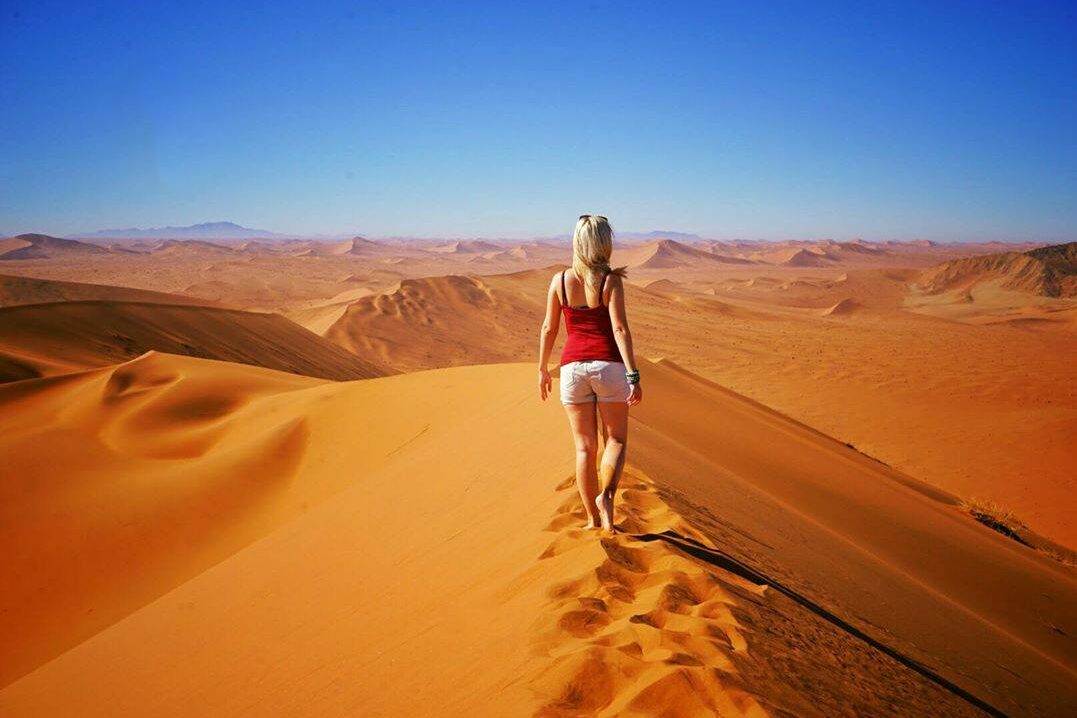
My road trip around Namibia is the best travel experience I’ve ever had.
Hands down.
I can’t even find the words to describe how fantastic my time in the country was. Namibia has everything. It’s easy to explore independently, it’s safe, it’s beautiful, the locals are lovely, the landscapes are diverse, the wildlife is exciting, and there are so. few. tourists.
I’ve got a dozen posts planned about my time in this amazing country, so brace yourself for an onslaught of information! By the end of the month, you’ll have everything you need to book a trip to this kickass country. And hopefully you’ll decide to do exactly that.
This is what it’s like to travel in Namibia.

Where is Namibia?
Let’s start off with a little bit of context. Where even is Namibia?
Namibia is a Southern African country on the west coast of the continent. It’s located above South Africa , below Angola, and to the west of Botswana.
Interestingly, Namibia is where you’ll find the world’s only quadripoint, which is defined as the place where the corners of four different countries meet. Yes, in the far north-eastern reaches of this country, Namibia nestles up against Botswana, Zambia, and Zimbabwe. There are over 150 tripoints in the world, but only one quadripoint, making this a very special place on the planet.
Unfortunately, it’s in a part of the country that few tourists choose to visit, at the eastern end of the Caprivi Strip, which is isolated from many of the main tourist activities. Somewhere that’s much easier to visit, however, is the Tropic of Capricorn! Most visitors end up driving past the iconic Tropic of Capricorn sign while driving around Namibia, and fortunately, it’s marked on Google Maps, so you won’t have to worry about missing it.
Namibia is the Perfect Introduction to Africa Travel
If you’re dreaming of travelling in Africa but have no idea where to go first, head to Namibia. It’s one of the safest and least intimidating countries I’ve travelled through.
One of my aims with my recent Africa travels has been to prove you can easily travel around much of the continent independently. So many people opt to jump on overland truck tours in this part of the world, but what I’ve found so far is that it’s really not necessary. And in Namibia you definitely don’t need to join a tour in order to visit.
With the exception of the bad roads, I found it no more difficult or dangerous to travel in than the U.S., Europe, or Australia. And when you’re traveling independently, you’re in control of your schedule and where you stay and what you do.
On top of that, the official language of Namibia is English, which makes independent travel even easier. You can ask questions, you can get directions, you don’t have to mime all the time… it’s all so easy .
Namibia also felt like the safest country in Africa I’ve been to so far. Outside of Windhoek, you really don’t need to worry about much at all. The locals are friendly and welcoming, theft is rare, and your only real concern will be how many flat tyres you’ll end up with on the seemingly-endless gravel roads.
Not only is Namibia safe and easy to travel through, but it also has just as much to offer as other countries in Africa. Head to Etosha National Park and you’ll get to drive alongside elephants, giraffes, lions, black rhinos, and more. You can hit up the Namibian desert for sand dune climbing at sunrise. There are beaches and coastlines full of shipwrecks to explore. The darkest skies in the world are in Namibia, so the Milky Way is always shining brightly above your head at night. Oh, and there’s a ghost town in the middle of the desert. Badass.
In other words: Namibia is the best!
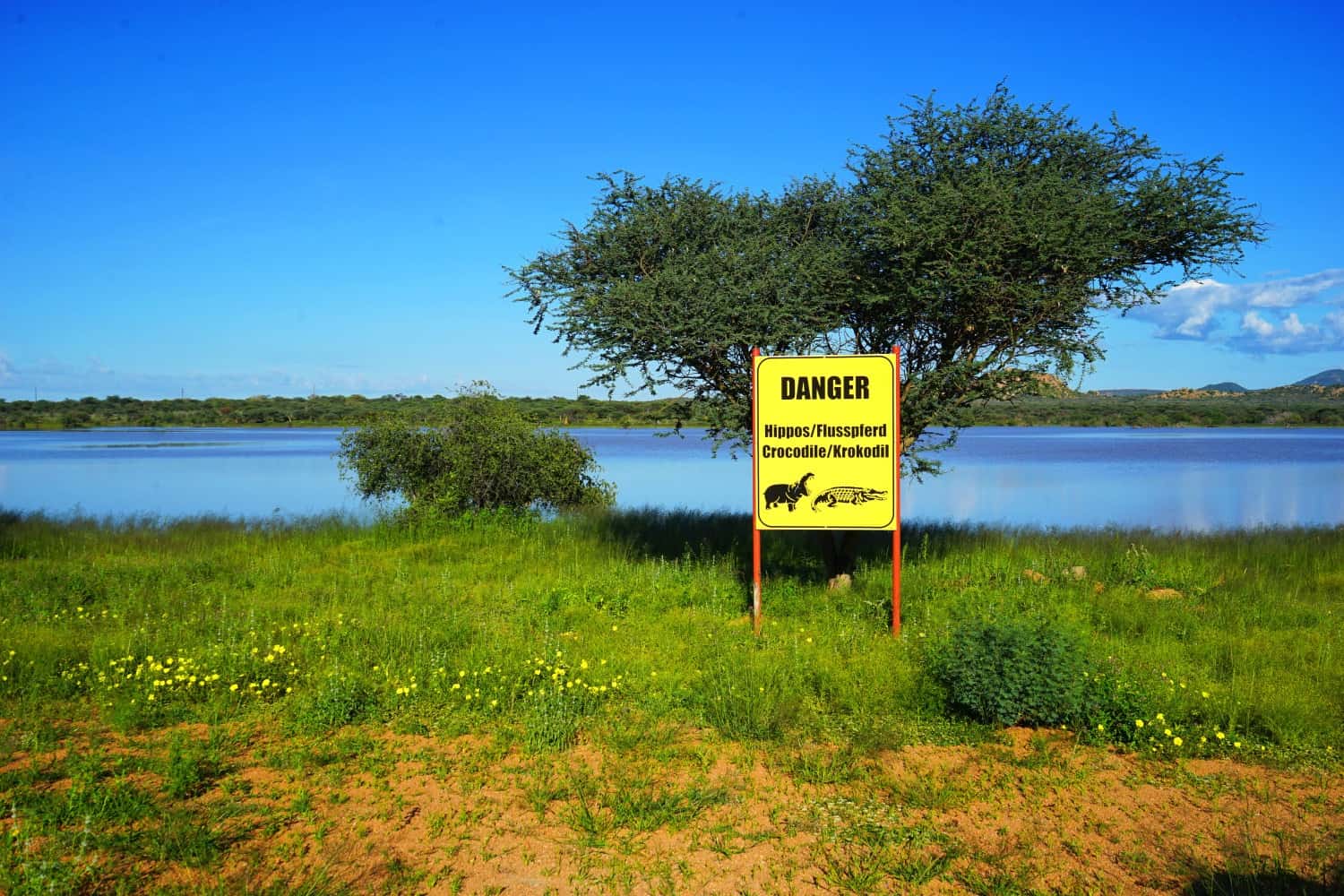
Not Many People Will Know Where You’re Going
I couldn’t believe it: after six years of travel, Namibia was the first country nobody seemed able to locate on a map. In my digital nomad community here in Portugal — so, y’know, people who have travelled full-time for many years — a surprisingly number of people had never even heard of Namibia.
I get it: it’s a country that isn’t often spoken about outside of travel blogging circles, but it was still surprising to be met with blank faces when I spoke about where I was visiting next.
The bonus of this? Hardly anybody decides to visit the country, so there are hardly any tourists around!
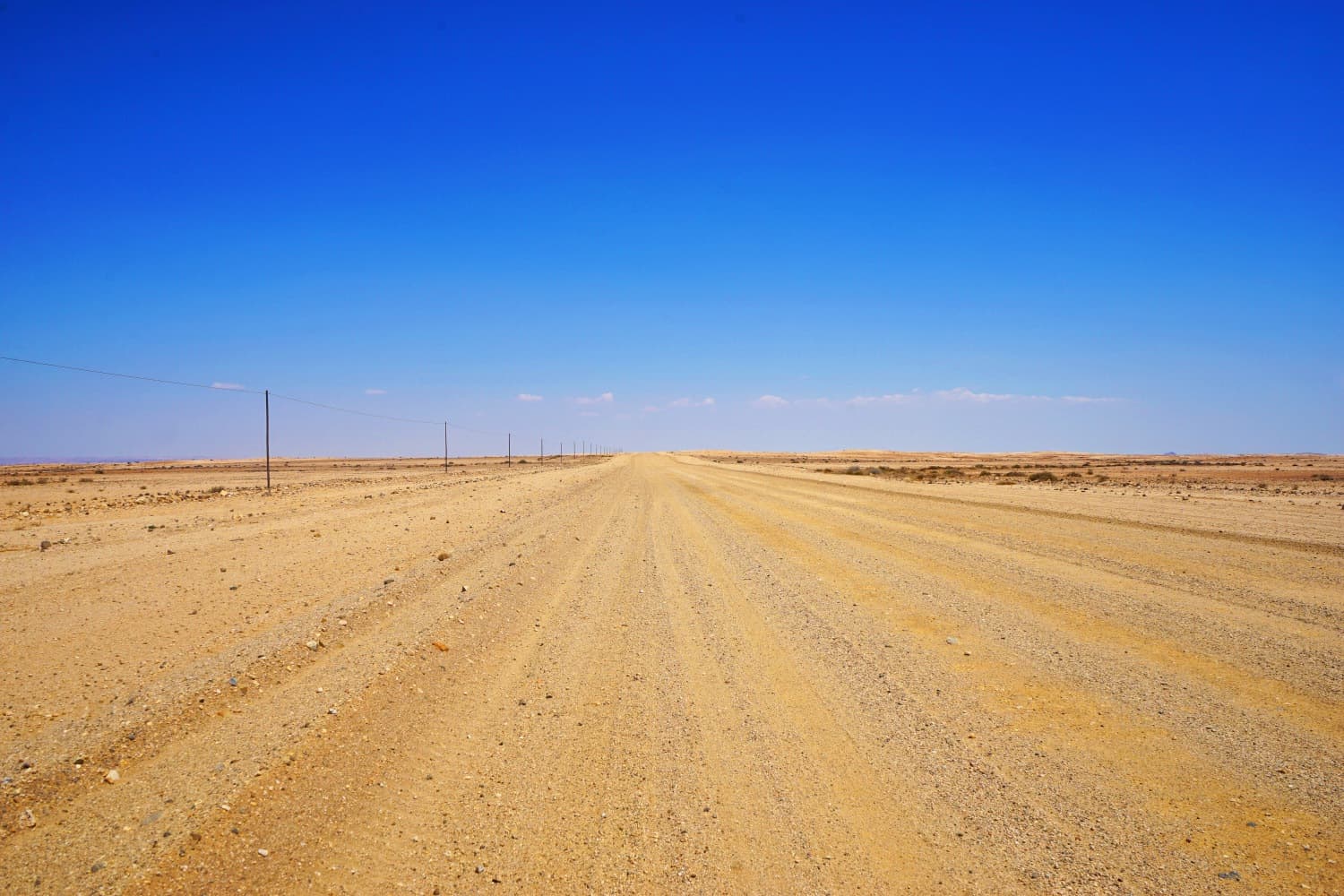
It’s Ridiculously Sparsely Populated
Namibia is the second-least-densely populated country in the world, with an average of just five people for every square mile. And it’s easy to see why: desert takes up the bulk of the country and so outside of its short rainy season, it’s a very arid place.
This was one of my favourite aspects of travelling around Namibia, though: you could drive for four hours straight and not see a single human, car, or building over that time. As an introvert with a love of wide, open spaces, I couldn’t get enough of the isolation.
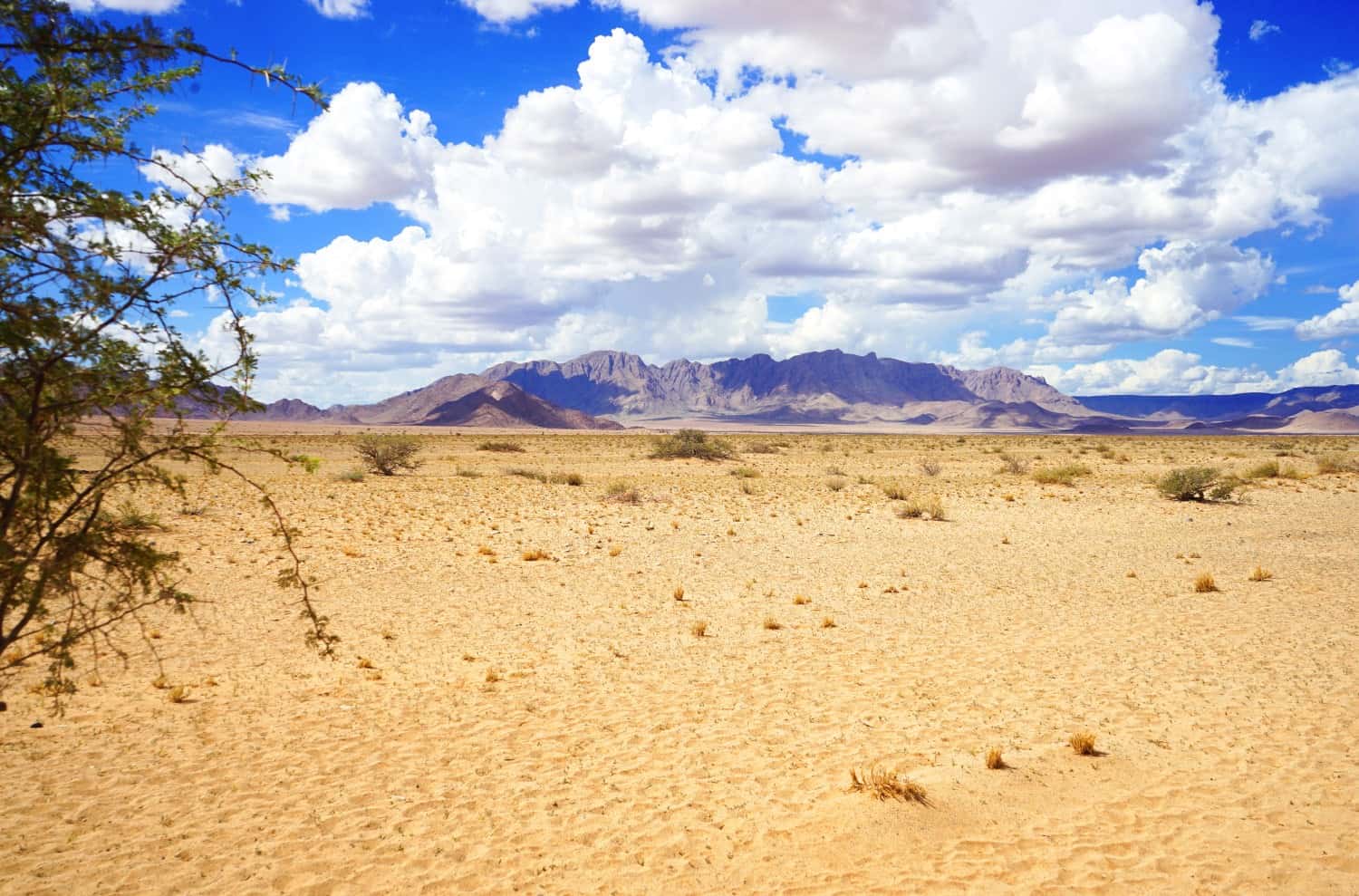
Planning Where to Stay Is… Interesting
Because the country is so sparsely populated, the majority of places you’ll stay at will be lodges that feel as though they’re in the middle of nowhere. Because they kind of are.
There aren’t many major towns and cities in the country — and honestly, the best parts of Namibia are outside of them — so that makes finding accommodation tricky. The best places to stay at are often hours from the nearest signs of civilisation and miles down a tiny gravel path.
I found booking.com best for finding places to stay. First, decide on which major destinations you want to hit in Namibia. For us, this was: Windhoek – Etosha National Park – Swakopmund – Sesriem – Luderitz – Windhoek. Most of these destinations are so far from each other that you’ll have to break up the drive into two days.
Next, on Booking, search for all hotels in Namibia, and once you’re on the search page, click on view on map. Once you’ve got a map view of every hotel listing in Namibia, zoom in on the route you’re planning to take and see which lodges pop up close to the midpoint between two distances. We did this for almost everywhere we stayed in Namibia and found some incredible lodges as a result. In fact, some of the highlights from my time in the country were getting to stay outside of the main tourist trail.
And if you can’t find anything suitable or affordable on the drive, just googling “where to stay between Swakopmund and Sesriem”, for example, will bring up a ton of forum threads with recommendations from other people. Not everywhere is listed online, so there were a few places we had to book through email.
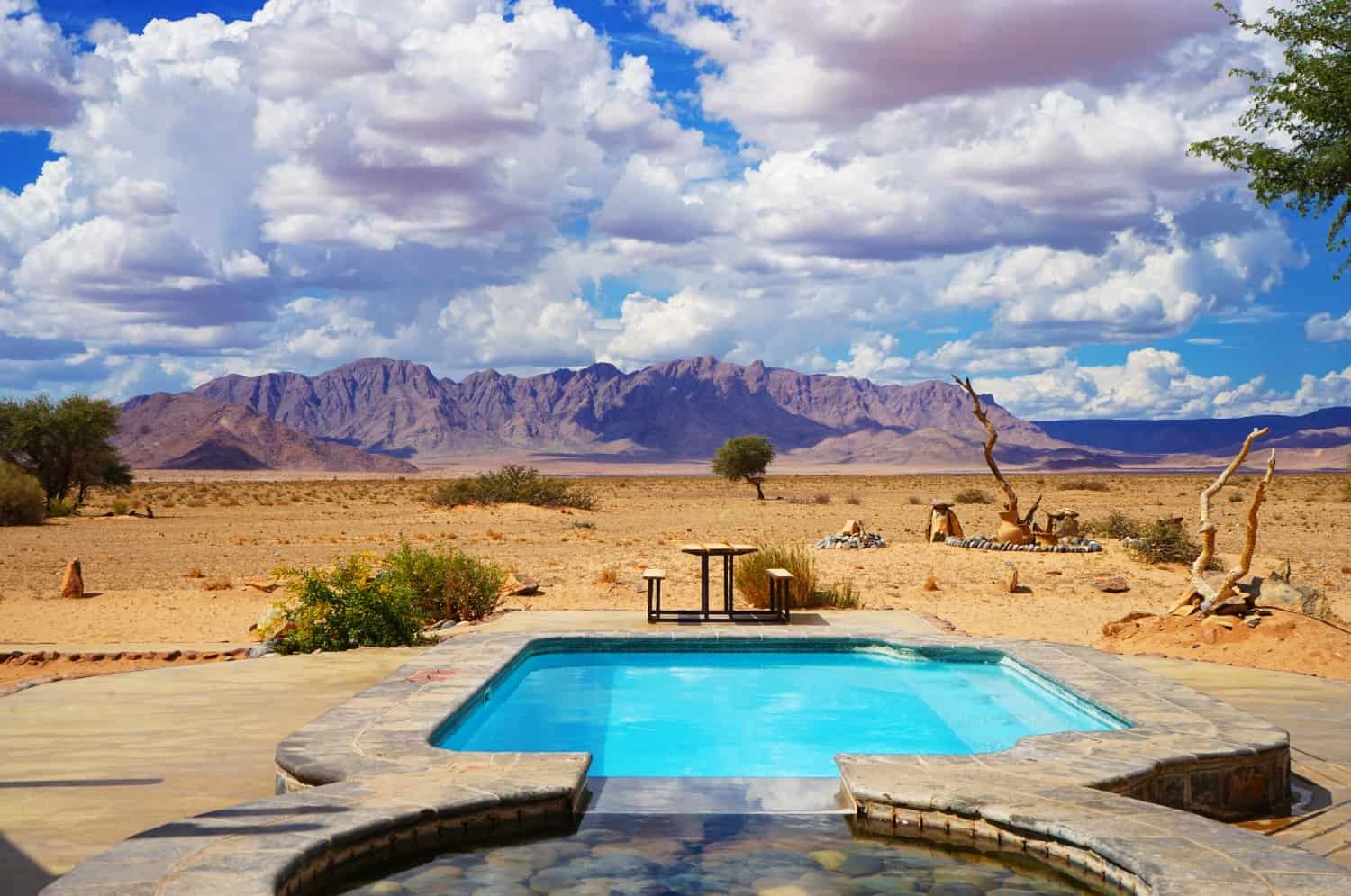
Frustratingly, It’s Tough to Visit on a Budget
In Namibia you have two options: expensive or camping.
I’m all about that budget travel life, but in Namibia I had to give up my aim of spending $50 a night on accommodation and quadruple it for much of our trip. Yep, almost every lodge we stayed at in Namibia was well over $100 a night, and we were nearly always booking the cheapest option we could find. And we were visiting in low season, where accommodation prices are around half what they’d be in high season!
Unfortunately, if you want to save as much money as possible on your trip, your only real option in Namibia is to camp. Most lodges will offer a camping option for around $30 a night, so if you’ve got your own gear, this is an easy way to save money on accommodation.
The only exceptions to the crazy prices are the cities: Windhoek has cheaper options ($50 a night), and so did Swakopmund ($40 a night) and Luderitz ($50 a night).
Everything else wasn’t too bad when it came to price. Our rental car — a Toyota Corolla — had us up for $30-a-day, which is pretty standard for most countries around the world. Activities and entrance fees (around $6) were also affordable. Food could get a little pricey at the camps and lodges, which made sense because they were so isolated, but nothing was over-the-top extreme. We’d usually pay around $10-15 for dinner each night.
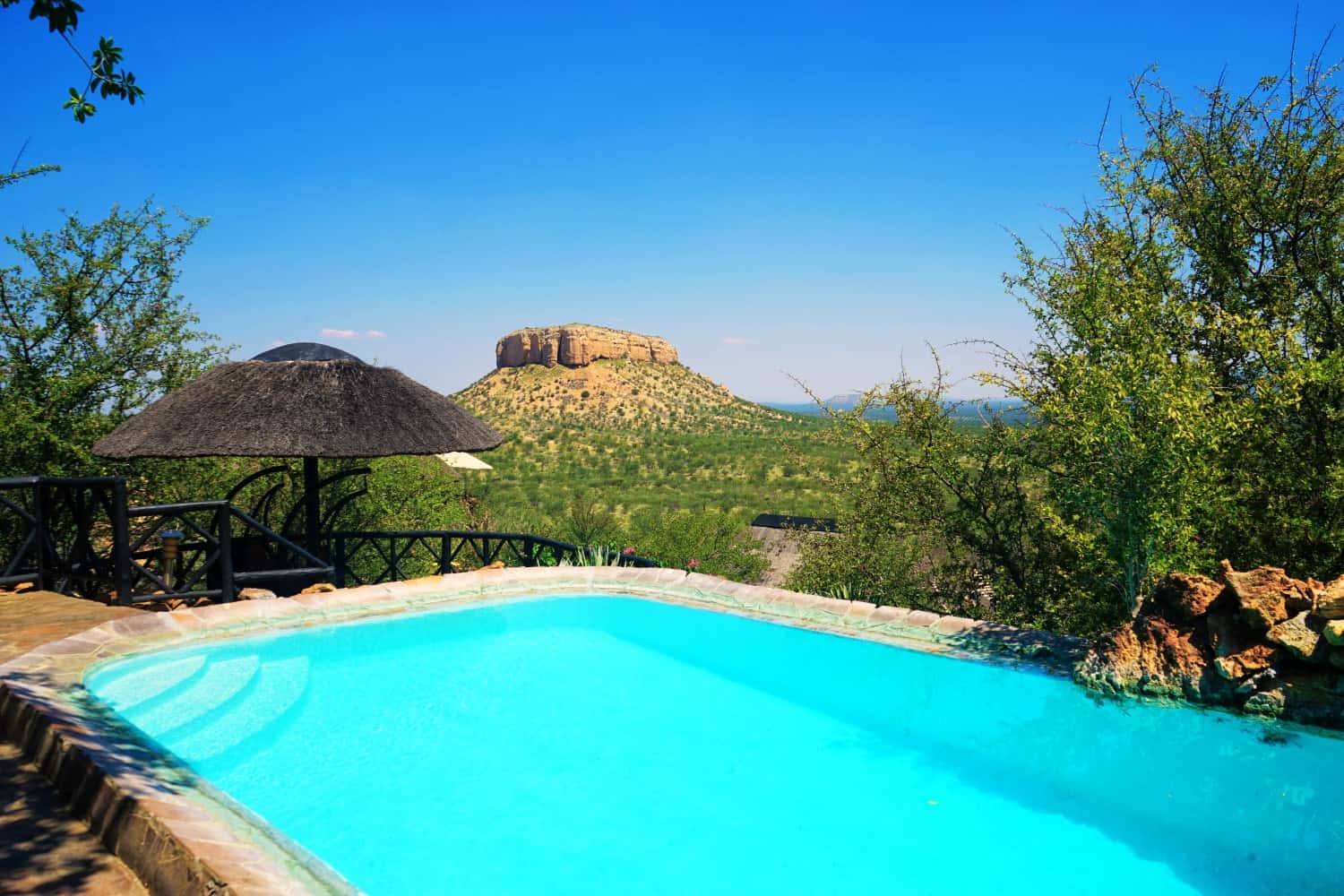
But the Lodges are Amazing
Some of the best hotels I’ve ever stayed in are in Namibia. And while you’ll pay a lot for them, they’re worth every penny.
At Ovita Wildlife Restcamp , we fell asleep listening to hippos in the lake outside our room. At Vingerklip Lodge (pictured above), we ate dinner on a towering cliff top, looking over Namibia’s version of Monument Valley. At Sesriem Desert Camp (pictured above Vingerklip Lodge), we slept in luxury tents in the desert with wild oryx roaming outside.
I loved every single place we stayed in in Namibia, and even though they were ridiculously expensive, it felt as though we were still receiving fantastic value for money.
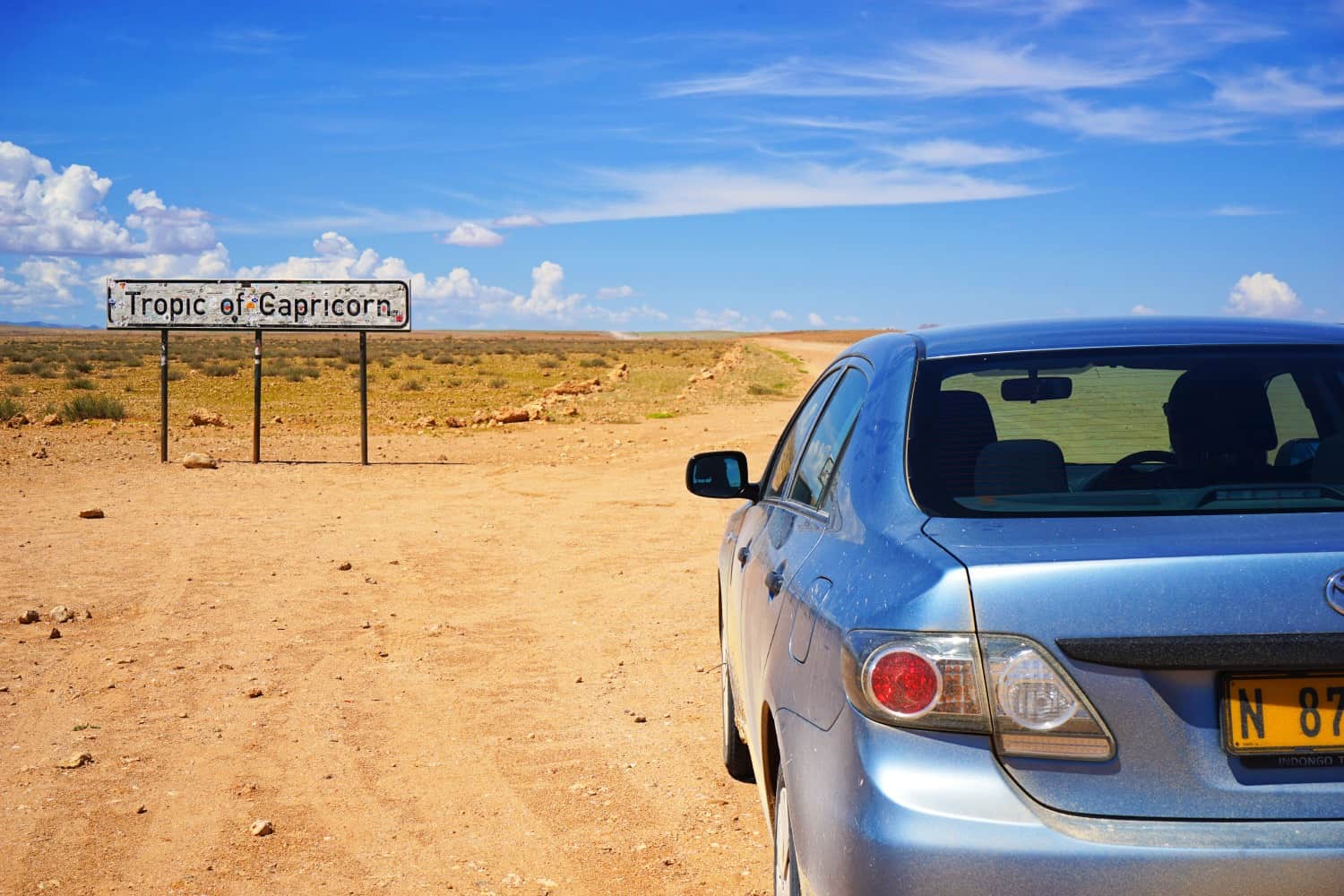
You Will Need Your Own Transport
Public transport doesn’t really exist in Namibia, so if you’re not going to take a tour, you’ll most likely need to hire a car. As for what type of car, it depends a lot on the time of year you’ll be visiting and how confident you are on gravel roads.
My Kiwi boyfriend grew up racing falling-apart cars on gravel roads in New Zealand, so he had the driving skills of a Namibian and we were happy opting for a tiny Toyota Corolla to make the trip for us. Guesthouse owners were always shocked to see us rocking up in it, but honestly, we had next to no problems with it. If you’ve got the cash, opting for a two wheel drive with higher ground clearance would be a smart idea, as part of the bottom of our car fell off on our second day of driving, thanks to all the rocks that had been flicked up into the undercarriage.
People advise to go with a 4×4, and especially if you’ll be visiting in the rainy season, but we decided against it for several reasons. First, it’s over double the price for a 4×4 (around $100 a day), second, being so high up makes the car easier to roll, and third, um, did I mention it’s expensive?
If you can’t drive? You won’t be able to visit Namibia without taking a tour or hiring a driver. You could take a bus between major destinations, but I believe you’d miss out on a lot of the wonderful lodges that make travelling in Namibia so wonderful. There are also reports of travellers rocking up in a hostel, getting together with a group of travellers, and car-sharing their way around the country, so this could be an option if you’re willing to take the risk of potentially finding nobody to travel with.
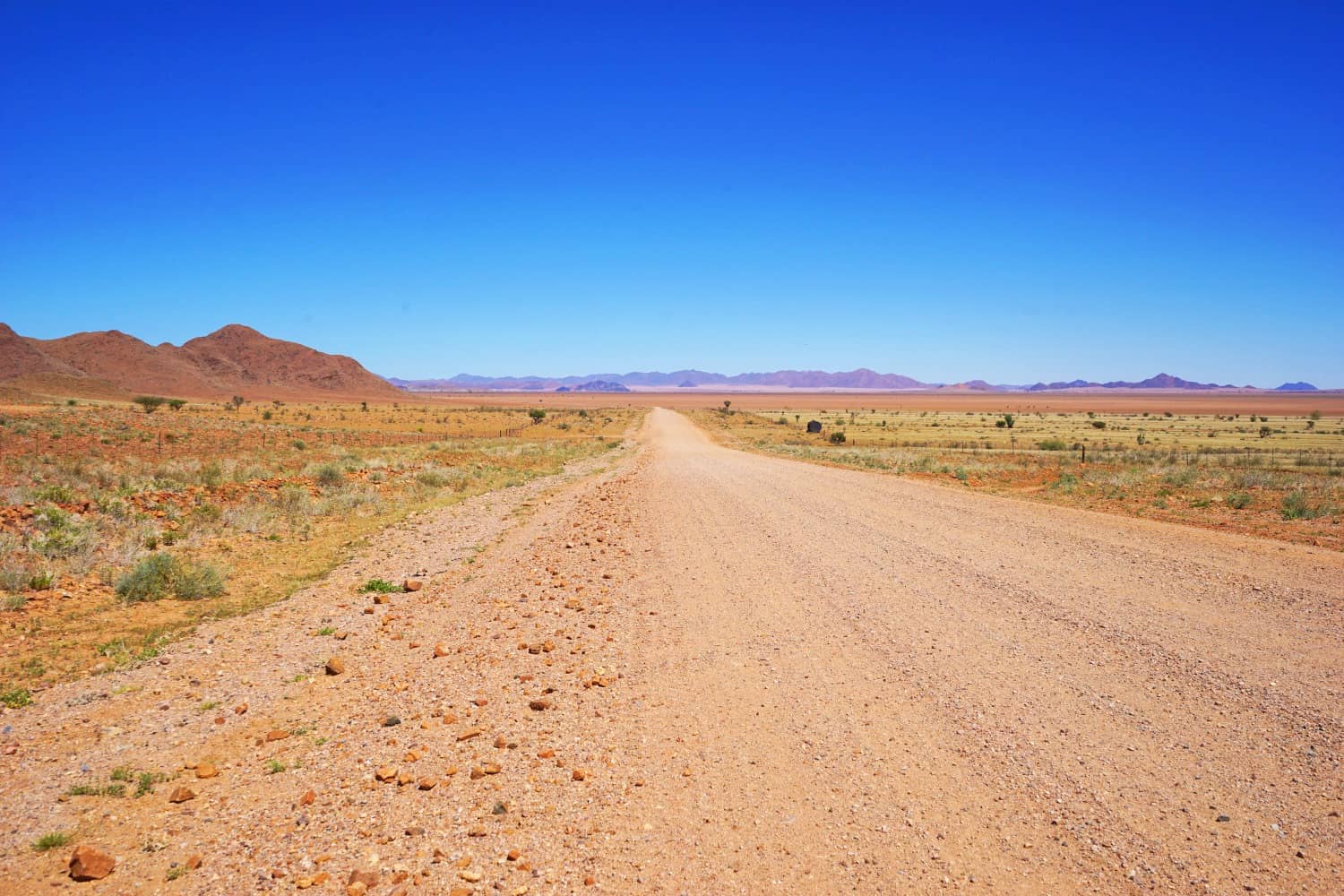
The Roads are So Bad
We drove 4000 kilometers in Namibia and probably only several hundred of them were sealed.
Yes, in Namibia, get used to urging your car over gravel, sand, rocks, and more. Because of this, travel days are long and bumpy — we rarely drove for less than six hours each day, and even listening to podcasts was a struggle over the crunching noises of driving over gravel while rocks pinged into our car
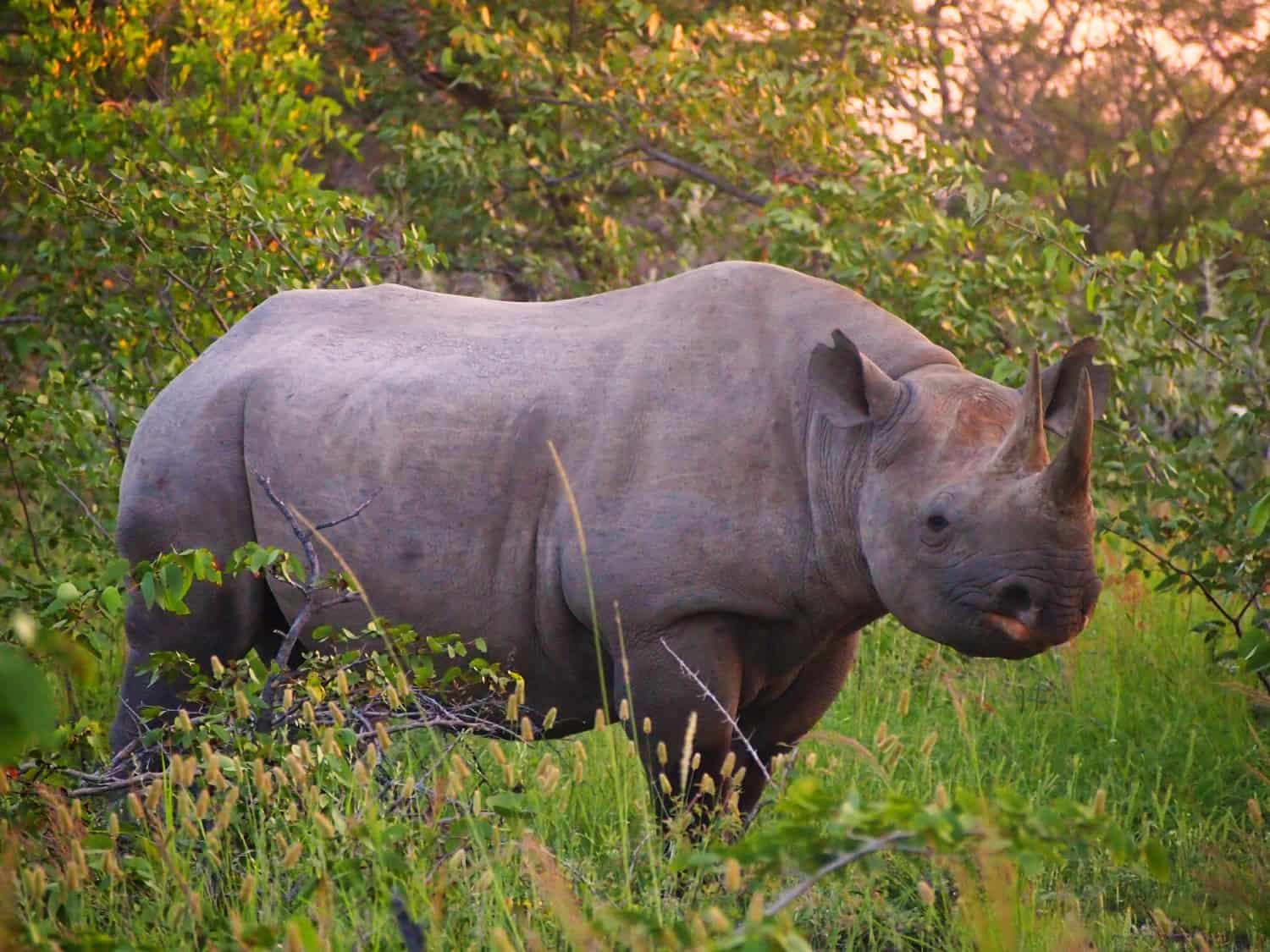
Get Yourself a SIM Card, But Expect to Rarely Use It
Getting connected is tough in Namibia, so if you work online like I do, resolve to spend most of your time on vacation.
Wi-Fi was sometimes around, was always slow, and often expensive. It’s worth getting a SIM card, though, as although we rarely got more than an EDGE signal, leaving our phones on while we were driving around usually meant we’d pick up a signal here and there to download emails.
We picked up a SIM card at Windhoek Airport upon arrival and it was super simple to do. The SIM card costs 50 US cents and 1 GB of data is a whopping $2.50. Too Many Adapters has a comprehensive guide for buying a SIM card in Namibia if you need any extra information. When it’s that cheap, there’s no reason not to get one.
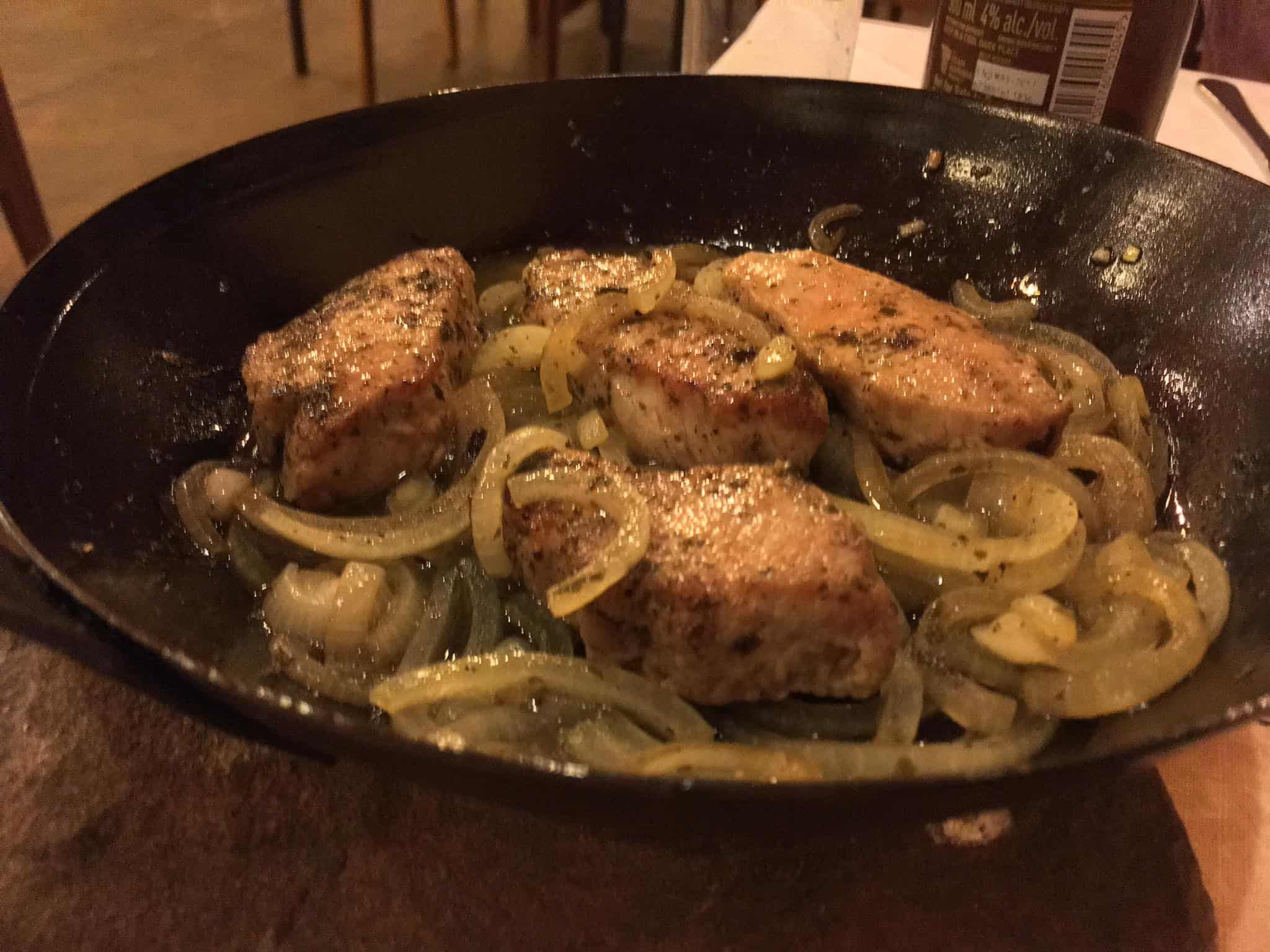
You’ll Get to Try Some Interesting Game Meat
One of my favourite aspects of eating in Namibia was getting to try so many of the delicious game meats on offer. The biggest surprise was warthog, which was delicious, but I also loved kudu, impala, oryx, zebra, and more. Most of the lodges will have some kind of unusual game meat on offer each evening, so it’ll be easy to access and you’ll soon grow used to it.
If you’re vegetarian, you’ll most likely struggle to eat super well in Namibia. Everything was very meat based at the lodges although bizarrely, Greek salads were available in basically every single restaurant, so you won’t have to go hungry. Just prepare yourself for a hell of a lot of feta cheese!
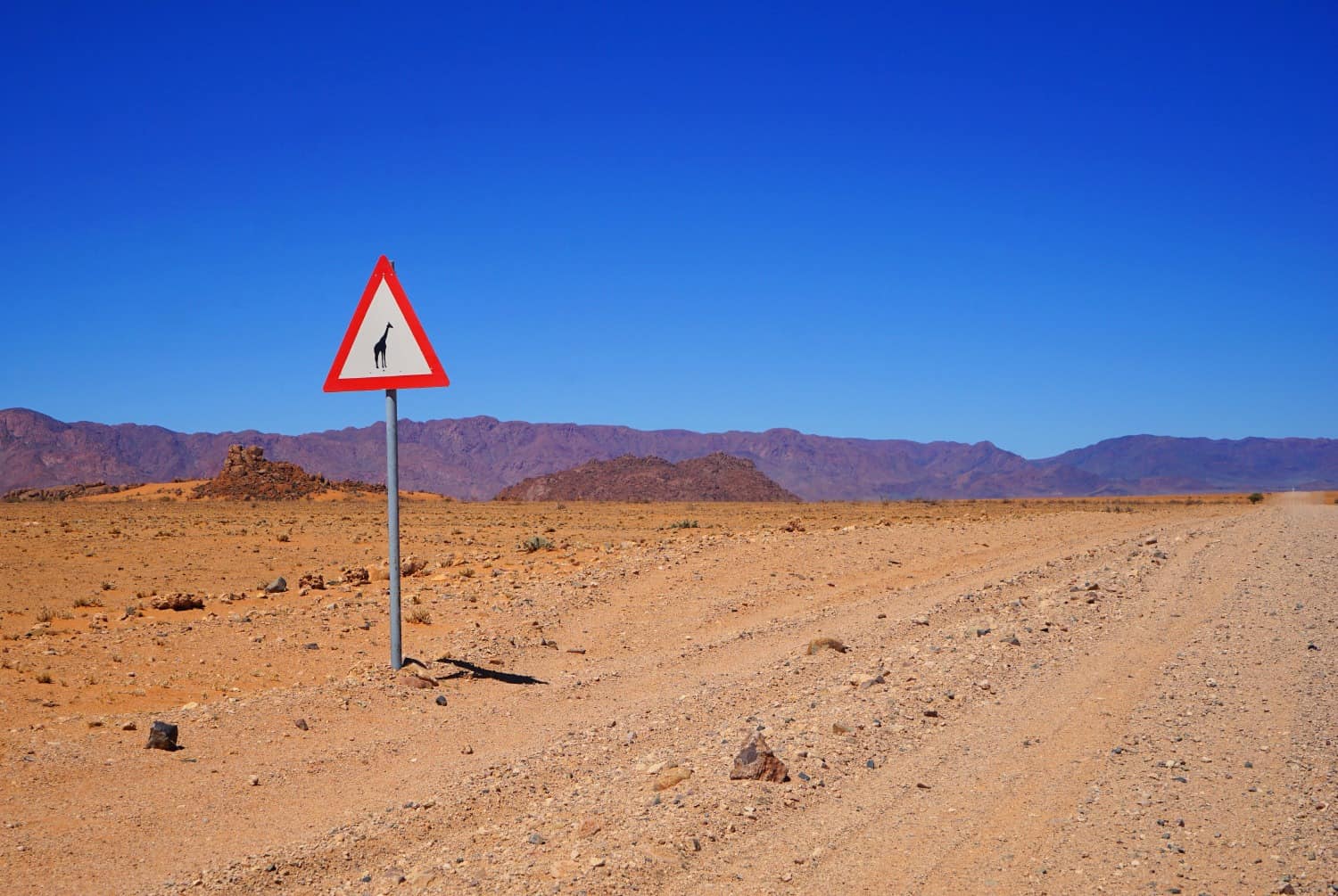
Namibia Has the Best Road Signs Ever
One of the highlights from our time in Namibia was the kickass road signs we came across while driving. The giraffe one above was one of my favourites. In addition to that, we saw signs for zebras, elephants, warthogs, and more. And even better: we actually saw some of those animals wandering around in the wild! There’s nothing quite like seeing a desert-adapted giraffe wandering through the sand.
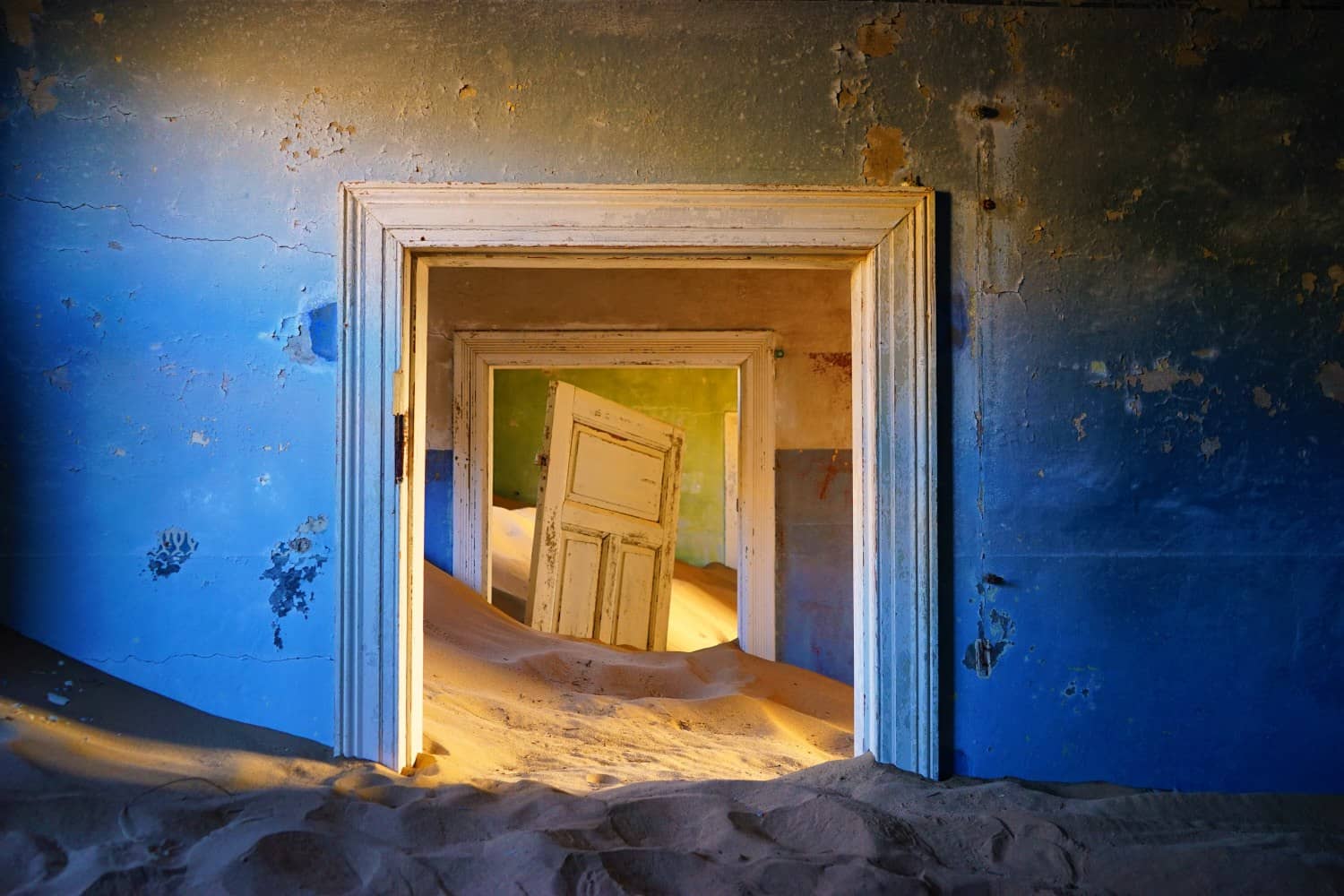
The Bradt Namibia Guide is Invaluable
If you’re planning a trip to Namibia, you need this guidebook .
Not only was it essential for planning our trip, but we used it on an hourly basis while we were in country. When it comes to Africa, Bradt guidebooks are king, so don’t even consider picking up a Lonely Planet for this part of the world; almost all of them have terrible reviews as well as outdated and too-condensed information.
Because you’ll be unlikely to have data coverage while you’re driving, and sometime even in lodges, the guidebook made our trip so much less stressful. When we wanted to figure out which animal we’d just spotted by the side of the road, the wildlife section had a photo to help us out; when we decided to stop for a lunch break in a tiny village, we could look up if there was anywhere to eat, and if so, which place was best; when we were planning our driving for the day, we could look up route recommendations and find out which attractions we might want to stop at along the way.
I don’t often recommend using guidebooks (I think I’ve only done it twice before!) because I believe you can get a lot of the information online for free, but in Namibia, this guidebook definitely helps. We struggled to find detailed information about the country both before we arrived and while we were there, so our Bradt book was 100% invaluable.
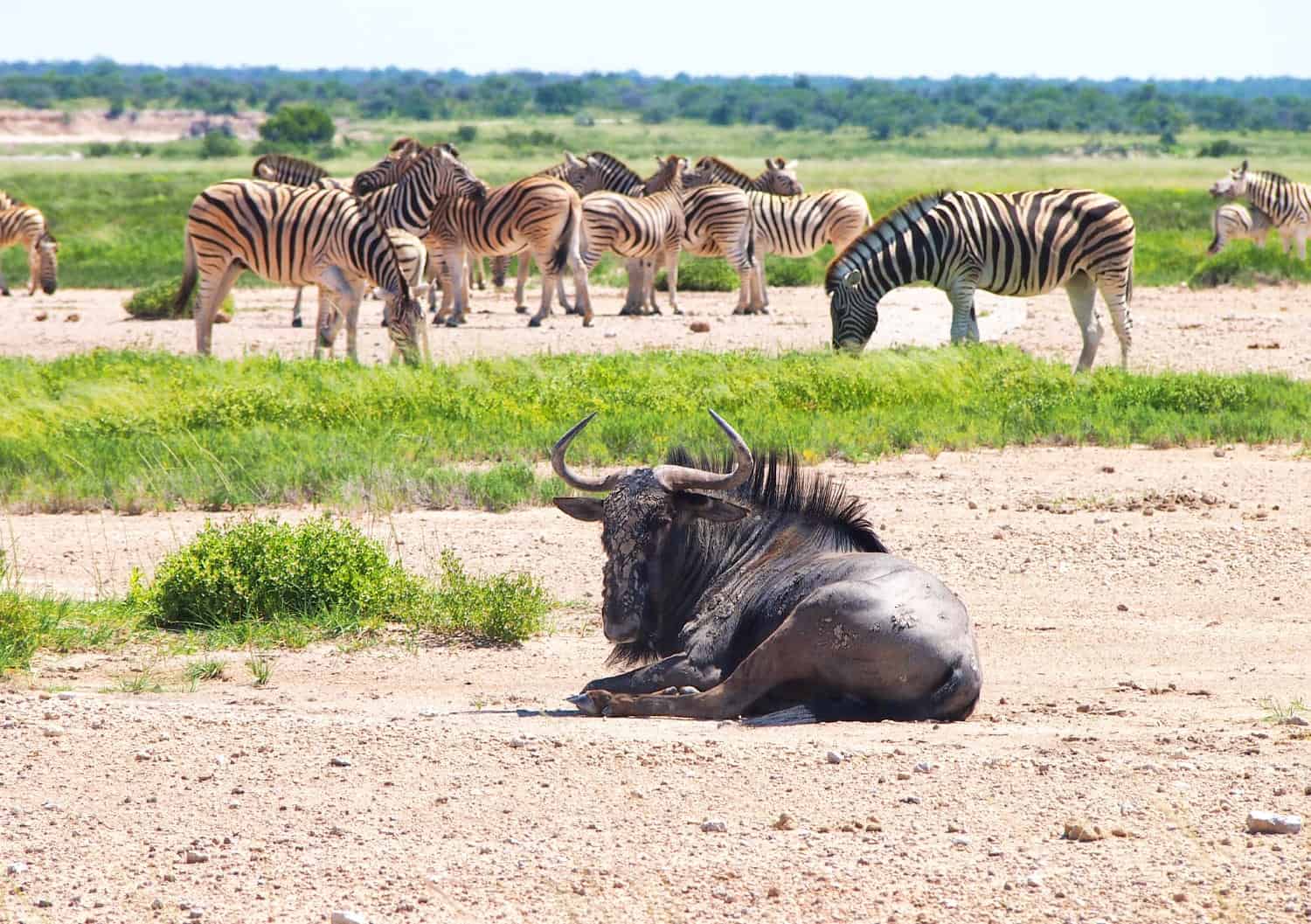
Two Weeks is the Perfect Amount of Time to Spend in the Country
I spent just under two weeks in Namibia, and feel as though I saw almost all of the highlights. If I’d had three weeks, I would have spent time at Fish River Canyon in the south, a few extra days in Damaraland, and some time exploring the Caprivi Strip in the northeast . Still, I feel as though two weeks is a good amount of time to dedicate to the country, which is refreshing as most places I visit have me feeling as though I need to explore for a minimum of three months just to start scratching at the surface.
I wanted to share my two-week itinerary here, because I feel as though I got it pretty close to perfect.
Day 1: Landed in Windhoek, picked up our rental car, and drove straight to peaceful Ovita Wildlife Restcamp . You can read about my first day in Namibia in my article, The Perfect First Day in Namibia . Day 2: Time for wildlife! We drove north to Etosha National Park and stayed within the park at Halali . We spent the afternoon sitting at the camp’s waterhole to see if any animals emerged. You can read about my experience in Etosha National Park in the dry season: Desperately Seeking Elephants at Etosha National Park . Day 3: For our first full day at Etosha, we drove around the eastern region of the park for almost 12 hours. We saw dozens of giraffes, zebras, and a rare black rhino, then spent the night back at Halali. It was magical. Day 4: On day four, we opted to drive around the central parts of Etosha for the entirety of daylight hours, then switched up our accommodation to spend the night at Okaukuejo . Day 5: For our final morning in Etosha, we decided to explore the western region of the park, then at lunchtime, drove to beautiful Vingerklip Lodge to spend the night. You can read about how incredible Vingerklip was in my article, Finding Paradise in Vingerklip: Africa’s Monument Valley . Day 6: Day 6 brought a long drive to Swakopmund, where we spent much of the day on terrible roads. Still, getting to drive part of the Skeleton Coast was amazing, and we even got to see a shipwreck stranded off the coast. We spent the night in an Airbnb apartment. Day 7: For day 7, we took a day trip out to nearby to Walvis Bay to see its seal colony, which is one of the largest in the world. You can read about this wonderful experience in the article, Seals, Swakopmund, and the Skeleton Coast . Again, we spent the night in our Airbnb apartment. Day 8: We spent this day relaxing and exploring Swakopmund. You could use this day to get your adventure on if you wanted, as Swakopmund is the adventure capital of the world. You could try your hand at quad biking on the nearby sand dunes , for example. Once more, we spent the night in an Airbnb apartment. Day 9: The following day, we drove to Sesriem and spent our afternoon climbing Dune 45. I highly recommend doing this, as we practically had the entire park all to ourselves. We slept at Sesriem Desert Camp , which was magnificent. Day 10: We got up at sunrise to enter the park, climb Big Daddy sand dune, and explore Deadvlei. This day was spectacular and you can read about the experience in the article, Climbing Big Daddy: An African Travel Highlight . That afternoon, we drove south to Betta Camp to spend the night. Day 11: The following morning, we drove down to Luderitz. We spent the afternoon exploring this adorable town and spotting pelicans as we drove around the areas just outside of Luderitz. It was a fairly relaxed day after all of the movement, and we spent the night at Kairos B&B . Day 12: We saved the best for last, because for day 12, we drove to Kolmanskop at sunrise and and had the entire place to ourselves. Kolmanskop is an old mining town that has since been abandoned and is now being taken over by the desert. It was incredible and we spent a full three hours taking photos. I wrote about it in-depth in the article, Exploring Kolmanskop: Namibia’s Ghost Town in the Desert . In the afternoon, we drove to Maltahohe Hotel to break up the long journey back to Windhoek. Day 13: Final day! Sad face. We spent this day driving from Maltahohe to Windhoek and left Namibia in awe of how much the country has to offer.
This was one of the best trips of my life and I highly recommend putting together a similar itinerary if you’re planning a trip to Namibia.
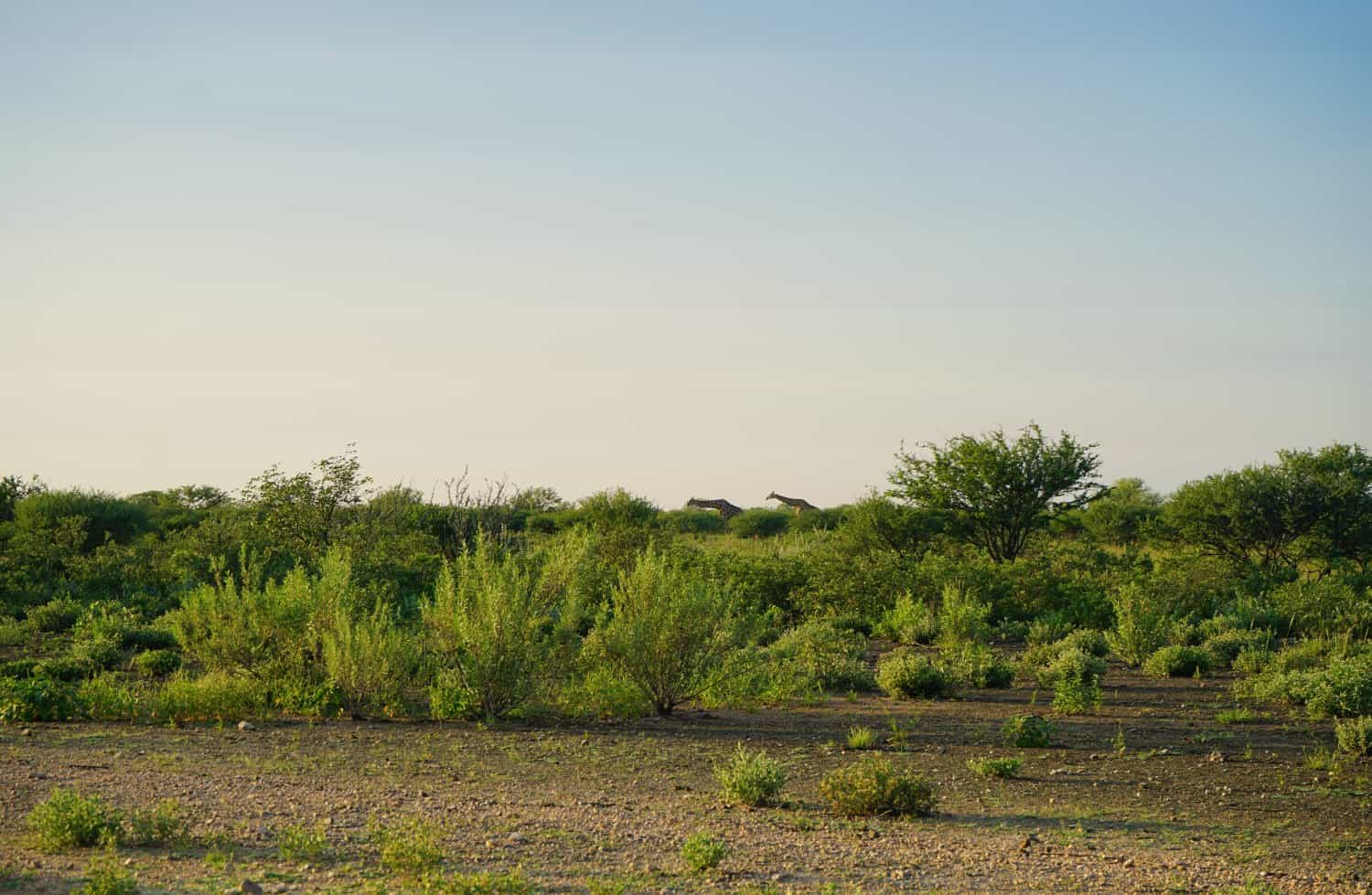
Yeah, You Should Definitely Get a Zoom Lens
The biggest regret of my trip? Not splashing out on a zoom lens for my camera and then getting uniformly awful photos in Etosha.
I ventured into Namibia with my Sony 28-70mm lens and while it was absolutely fantastic for landscape photos, it was nowhere near good enough for the wildlife. Had my boyfriend not packed his 80-300mm lens, I would have had close to zero photos of any animals. Because we were in Namibia in the rainy season (more on that below), the animals at Etosha were hiding in dense grass and hard to spot, so it was rare for us to get up close to them.
If you’re going to Namibia and will be hitting up Etosha while you’re there, make sure you’ve got a decent zoom lens for the trip.
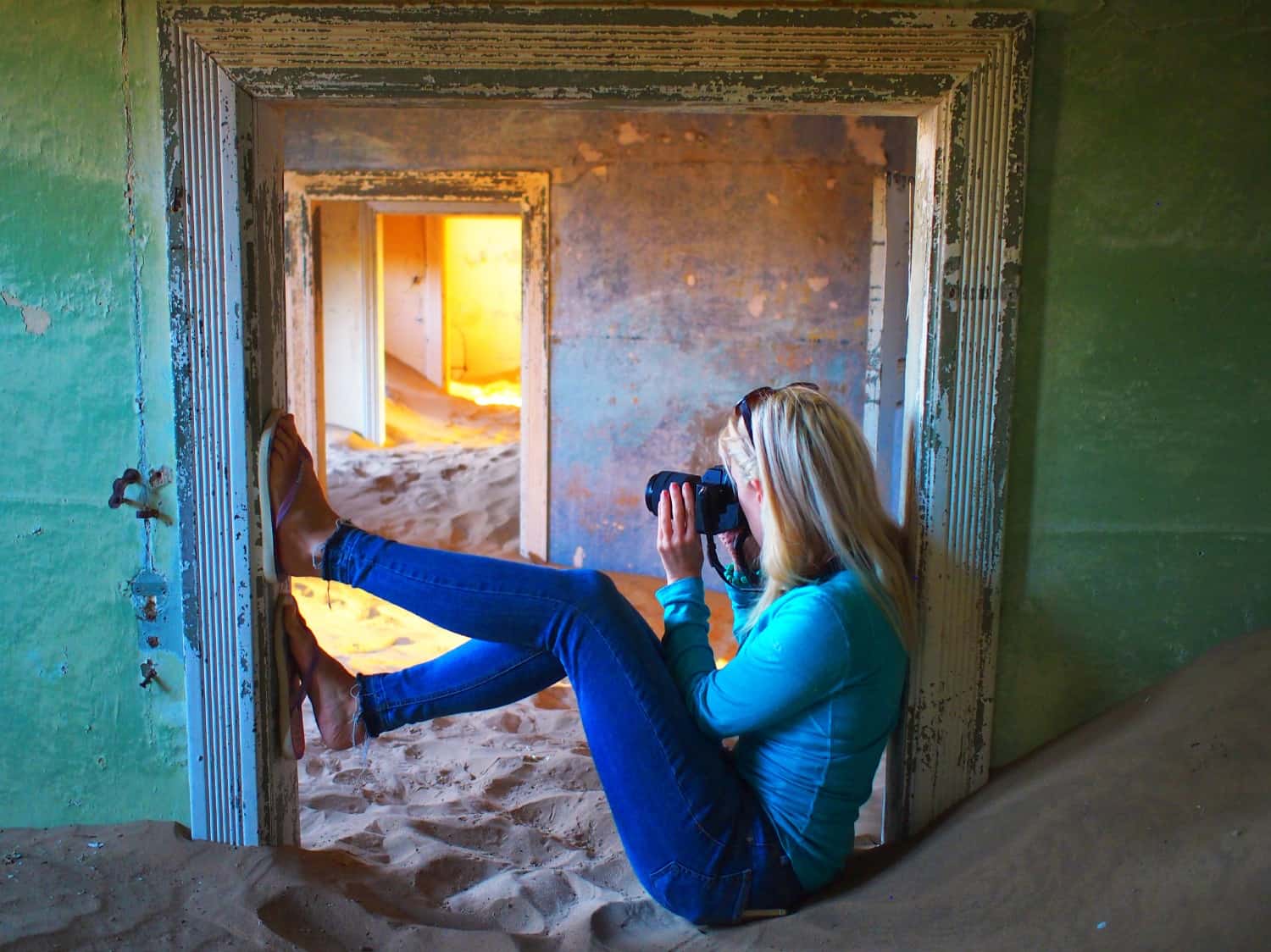
Get Yourself Some Excellent Travel Insurance
You know I’ll always yell at you if you’re dumb enough to skip out on travel insurance , but in Namibia, it’s an essential.
Why? Because Namibia has the highest car-accident death rate in the world, with 45 people killed on the road for every 100,000 citizens. On top of that, malaria hangs out in the northern parts of the country, and there are several other awful-sounding tropical diseases you definitely don’t want to contract.
Travel insurance will cover you if your flight is cancelled and you need to book a new one, if your luggage gets lost and you need to replace your belongings, if you suddenly get struck down by appendicitis and have to be hospitalised, or discover a family member has died and you need to get home immediately. If you fall seriously ill, your insurance will cover the costs to fly you home to receive medical treatment.
I use SafetyWing as my travel insurance provider, and recommend them for trips to Namibia. Firstly, they’re one of the few companies out there who will actually cover you if you contract COVID-19. On top of that, they provide worldwide coverage, don’t require you to have a return ticket, and even allow you to buy coverage after you’ve left home. If you’re on a long-term trip, you can pay monthly instead of up-front, and can cancel at any time. Finally, they’re way cheaper than the competition, and have a clear, easy-to-understand pricing structure, which is always appreciated.
With SafetyWing, you’ll pay $1.50 a day for travel insurance.
On top of standard travel insurance, you’ll also want to make sure you get some of the best car insurance money can buy. Most tourists get a flat tyre in Namibia at some point at a minimum (we got one roughly an hour from the airport on our final day) and replacing them/repairing the rental car can be pricey. We rented our car through rentalcars.com , bought their insurance, and they refunded us for all of our car disaster expenses in Namibia.
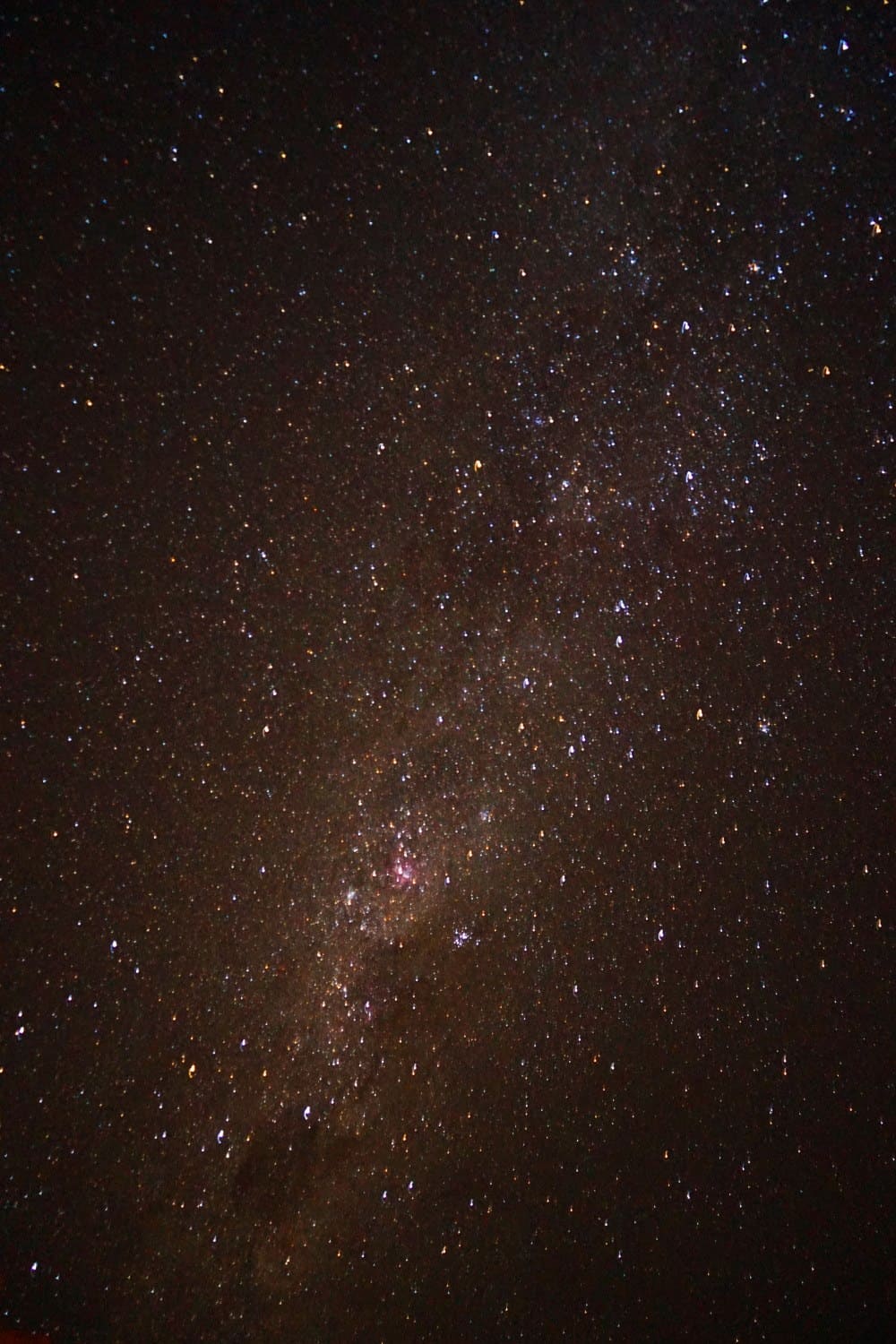
You’ll Never Have Seen This Many Stars Before
Namibia is home to some of the darkest skies in the world , and I couldn’t believe how magical the night sky was. With the exception of the cities we stayed in, we fell asleep every night with the Milky Way twinkling above our heads. And with the lack of light pollution in the country, you didn’t even need to wait for your eyes to adjust.
If you’re all about stars, this is one destination not to miss.
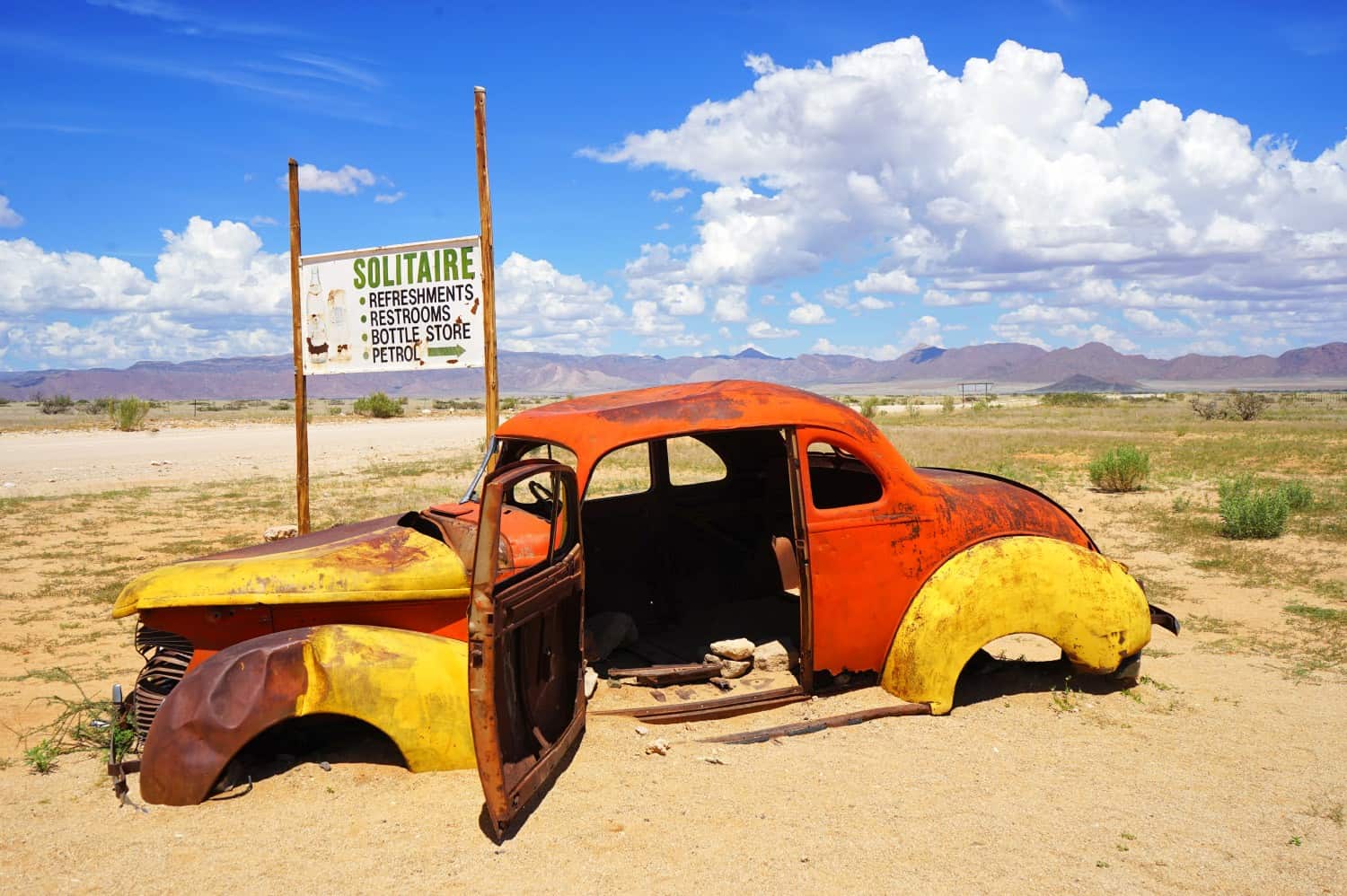
I Loved Visiting During the Low Season
Well, low-ish season. We hit up Namibia in March, which is typically the final month of the rainy season.
We experienced just one hour of rain and the rest of our trip was full of gloriously blue skies. There were fewer tourists, prices for accommodation were almost half what they’d be in high season, and the weather wasn’t bad at all. I highly recommend considering a shoulder-season visit because of this.
Surely there has to be a downside? Yep. We struggled to see anything at Etosha. There are thirty-odd waterholes inside the park and during the dry season, they usually look like this:
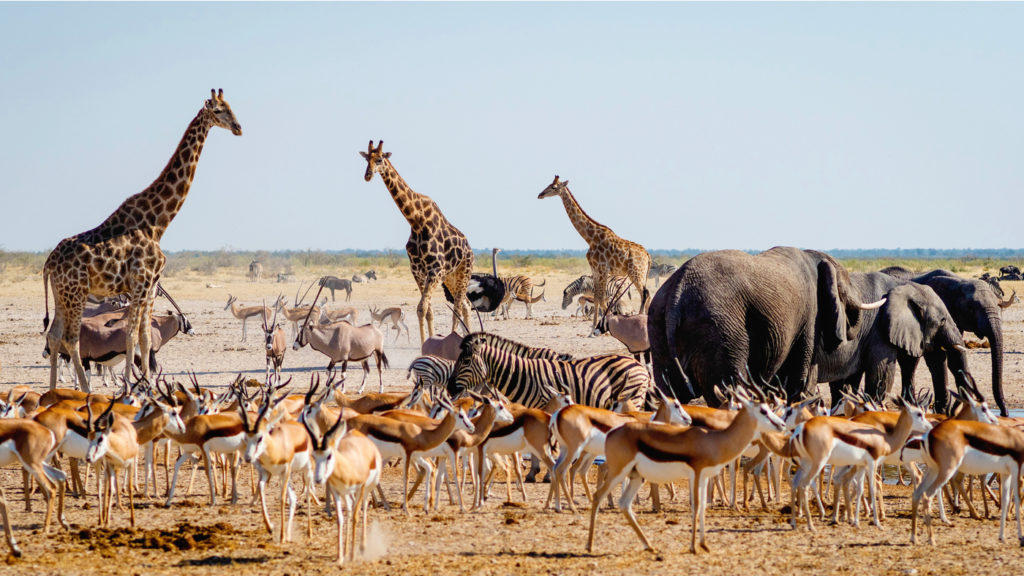
Well, over three whole days of 12-hour drives, Dave and I saw literally nothing at any of the waterholes. Our waterholes looked like this:
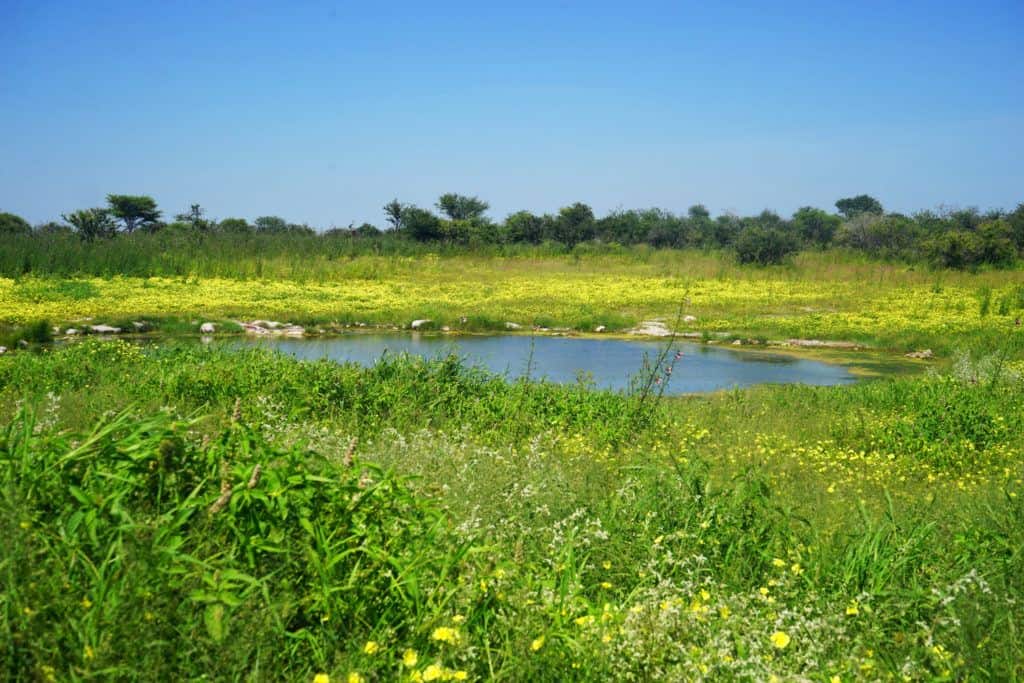
We didn’t even see a bird.
The problem is: during the rainy season, there’s no reason for the animals to go to the waterholes because there’s water everywhere. And being on the tail end of that meant that instead we had to drive around in search of animals in the bushes. We didn’t come up empty handed, though: while we didn’t see a single elephant, we managed to see three black rhinos (super rare) and countless giraffes (my favourite animal).
It was funny, though, to have seen so many spectacular photos of Etosha before arriving, then to end up spending 90% of our time driving from deserted waterhole to deserted waterhole.
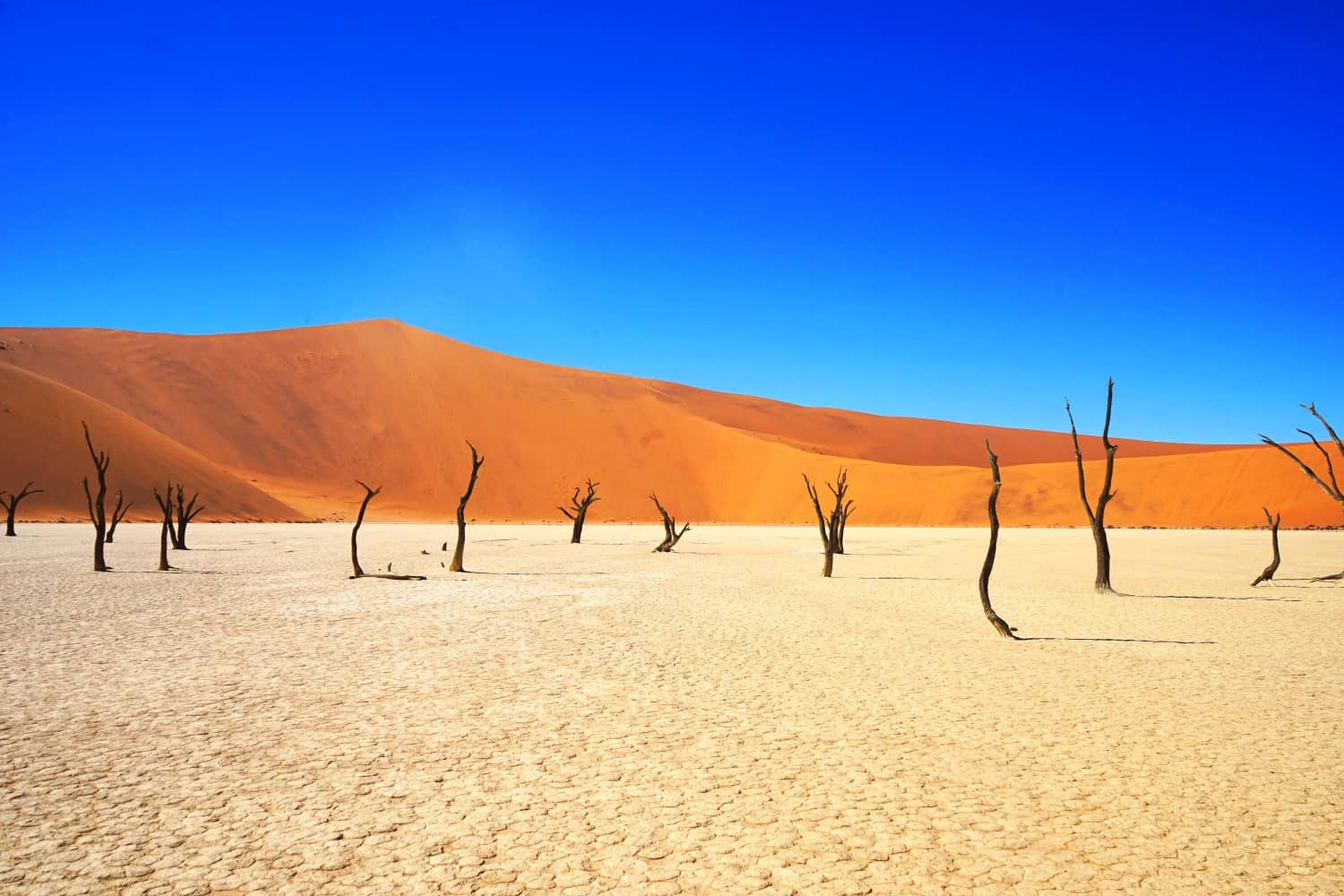
Have I Convinced You to Visit Yet?
I’m not exaggerating when I say travelling in Namibia is one of the best experiences of my life, and I can’t wait to start sharing every incredible minute of my time there. Next up: a detailed itinerary guide followed by dozens of stories to convince you to add Namibia to your bucket list! :-)
Have you been to Namibia before? Would you like to visit?
Related Articles on Namibia 💰 The Cost of Travel in Namibia: My Detailed Budget Breakdown 🦛 The Perfect First Day in Namibia 🐘 Desperately Seeking Elephants in Etosha National Park 🏜 Finding Paradise in Vingerklip: Africa’s Monument Valley 🦭 Seals, Swakopmund, and the Skeleton Coast 🥾 Climbing Big Daddy: An African Travel Highlight 🏚 Exploring Kolmanskop: Namibia’s Ghost Town in the Desert
Lauren Juliff
Lauren Juliff is a published author and travel expert who founded Never Ending Footsteps in 2011. She has spent over 12 years travelling the world, sharing in-depth advice from more than 100 countries across six continents. Lauren's travel advice has been featured in publications like the BBC, Wall Street Journal, USA Today, and Cosmopolitan, and her work is read by 200,000 readers each month. Her travel memoir can be found in bookstores across the planet.
Related Posts

The Cost of Travel in Mauritius: My Detailed Budget Breakdown

How to Spend One Week in Mauritius: An Itinerary for First-Time Visitors

What’s it Like to Travel in Liechtenstein?
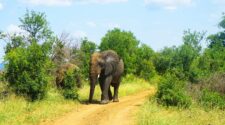
Why You Need to Take a Game Drive in Swaziland/eSwatini
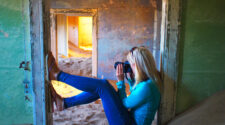
Exploring Kolmanskop: Namibia’s Ghost Town in the Desert
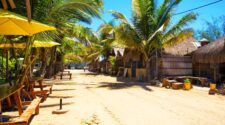
Introducing Tofo: My African Beach Paradise
100 comments.
I have never heard a bad thing about Namibia, and though we haven’t hit Sub-Saharan Africa, it would definitely be atop our list – maybe alongside Botswana? And on top of all you’ve listed, I’ve also heard that they have some decent German beer there since it was a German colony for a while. Any truth to that rumor?
There was *amazing* beer in Namibia! I’ve heard Botswana is pretty expensive and really tough to visit independently, but it’s very high on my list nonetheless. I know you guys would definitely love Namibia though!
Windhoek Lager (best beer in Africa)
Have you convinced me? Actually you have, I would have never thought of visiting there but it looks super amazing and peaceful! It sort of reminds me of Arizona. It sounds like heaven compared to NYC where I am currently at!
-Rachel @ Backcountry Petite
Score! I actually commented several times to Dave that I felt as though we were driving through the U.S. Southwest a lot of the time.
Great post, Lauren! I love all your pictures – especially the one of the night sky and the doors with the sand. It looks SO different than the places I’ve visited in Africa (Uganda and Zanzibar) that I’m very intrigued.
I think you’d love Namibia, Ashley! It’s very different to the other African countries I’ve been to, as well — so arid and empty!
Wow your pictures are absolutely stunning! Namibia has been calling my name lately but as you said it’s so darn expensive. Hopefully one of these days I’ll save up enough to see it. Did you find the food expensive even at local restaurants?
The problem was there often wasn’t any local restaurants. You’ll stay at lodges where the nearest town is several hours away, so you usually have to eat where you’re staying. In Swakopmund and Luderitz, food was slightly cheaper at around $8-10 per meal.
Wow Namibia looks wonderful! Thanks for writing this complete guide. Good to know it is safe. x
It really is the perfect introduction to travel in Africa :-)
Yep! I’m convinced! All I knew of Namibia was the rockin’ sand dunes. But with all this extra awesomeness (aside from the lodging prices) sound right up my alley! What city do you fly into?
I’ve heard of Namibia before, I’m surprised so many others haven’t. It looks wonderful! You have 100% convinced me!
I was there in march and I loved it. I highly recommend it to every one. It’s very safe!
Best regards!
Glad to hear you enjoyed it as well, Rui! :-)
You have definitely convinced me to go to Namibia. I had never thought of it before, but I think I will have to look into a bit now. Look forward to reading more posts about your trip.
I’m so happy to hear that! It’s definitely worth the visit :-)
I enjoyed the read! Amazing photos. Thanks for the tips <3
Glad you enjoyed it, Nadia!
I’ve been to Namibia on honey moon in 1995. Afraid to go back and see it changed. Apart from the occasion, it has been the most fabulous trip I have made. Did you miss the Skeleton coast?
We saw a small part of it while we were driving down to Swakopmund. Managed to see one shipwreck on the beach, but didn’t have enough time to get anywhere else. I would be interested to know if it has changed — it didn’t feel like the type of place that was changing quickly, but that’s totally just me guessing!
Namibia was my first ever solo trip abroad (around 8 years ago) and it was incredible. Yes the driving days are long but it is definitely worth it. The landscapes and hiking are fantastic, like nowhere else I’ve been, and the wildlife is so diverse. Other than South Africa I don’t know what country you can see penguins at one end and all the traditional safari animals at the other end. Looking forward to reading more posts to relive my trip/see how it’s changed.
Totally agree with you, Laura! I was surprised by how diverse the landscapes and wildlife were, and how empty the country the feels.
Looks and sounds like a great trip. Thanks!
It was amazing :-)
Wow, it really looks amazing. Must have been an incredible experience visiting the country.
As I said, the best trip I’ve ever taken. I loved every second I spent in the country :-)
I have to say Namibia looks amazing – it’s never particularly been on my radar, but it definitely is now! Looking forward to more posts on your time there. :)
I’m so happy to hear that, Clazz! It’s one of the coolest countries I’ve ever been to.
And great for children too. The number of ‘cute’ animals identified for airlifting to a proposed zoo in our back garden was extensive! Animals are everywhere: on the beach, by the side of the road, wandering around your lodge or tent. The whole family loved every bit of the holiday.
Ooh, I can imagine! I was filled with childlike excitement over every animal I spotted in Namibia.
I haven’t been before but you have me just about convinced! I’ve heard that the oysters from Namibia are something else as well.
Yes! Oh my god, I had the best oysters of my LIFE in Namibia!
Yep, I’m convinced! Everything looked amazing! Where did you flew from and how much did it cost you?
I flew from Portugal for $250 return with TAAG.
To be honest, this is the first time I’ve heard of Namibia. Probably because I’m from the other side of the globe.. or maybe I need to travel more! Nevertheless, thank you for this post! Very inspiring!
Well, you’re definitely not alone! But hopefully it convinced you to try to make it there one day :-)
Awesome photography. Thank you for sharing these amazing pictures and your experience in Namibia. I can’t wait to visit.
This place looks so stunning. I am one of those who had never heard of Namibia…..glad you shared this post. Thanks!
Glad you enjoyed it, Alex!
Namibia is terrific. I have been there only once but I still remember its beauty…yes it does gives you a lot of pocket pinch but then it’s worth it.
100% worth it!
I’m really excited to delve into the rest of your blog posts about Namibia. I have to confess I knew nothing about it before you visited but it looks like such an incredible country. Loved this introduction into what it’s like the travel there.
Happy to hear you enjoyed the post! Namibia is so underrated!
Namibia has been on my bucket list since I first set foot in Africa, After seeing your images and reading your blog I need to get there! Perhaps it will be the destination booked when I visit Africa again rather than the Safaris I did in 2010 or the Gorilla trekking in Rwanda! Great post!
I highly recommend it! :-)
Good to know, where would you suggest other than sousevlei and kolmanscop?
Walvis Bay, Vingerklip, and Etosha!
Honestly I don’t think it’s that expensive in the grand scheme of things. Sure, it’s not backpacking on a tight budget, but the prices aren’t that bad compared to the rest of the world. And if you compare what you get for the money with what you’d pay in somewhere like Australia, it seems like you definitely got your moneys worth.
That’s true. I guess the only problem is that there isn’t a super easy way to visit on a budget without missing out on a ton of awesome stuff. Most countries around the world will have hostels in most destinations. In Namibia, there isn’t really that option if you want to get outside of the cities and towns. But I agree: if you usually spend this amount of money in other countries as you travel, you’d feel as though you got a lot for your money in Namibia.
If Namibia is ‘Africa for beginners’, as is often said, what a wonderful place to start. Stunning photos, especially the view from the Sesriem Desert Camp. It’s perfect.
Absolutely! It was so easy to visit, and probably my favourite country I’ve now been to in Africa.
Fantastic post about a country I don’t know a lot about. Do they have a dress code in Namibia at all? Do women have to cover up while travelling in the country?
Not really. I would cover up my shoulders sometimes, but usually wandered around in a t-shirt and shorts. Almost all of the tourists I saw in the country were wearing shorts and t-shirts.
Wow it does sound amazing, how many days was this trip? My hubby turns 60 in October, after much nagging he has chosen Namibia.
Great decision! We spent 12 days in the country. Ovita for 1 night – Etosha for three nights – Vingerklip for a night – Swakopmund for 3 nights – Betta Camp for 1 night – Sesriem for 1 night – Luderitz for 1 night – Maltahohe for 1 night – drive to Windhoek and out!
Dear Lauren I am a Namibian, who often enjoys reading visitor’s blogs about my beloved country. It is always interesting to see Namibia through the eyes of other’s…..your photos and posts have been great fun to read. Thanks for the free advertisement……..might I add, Namibia is quite clean, it helps to have a small population density. Nonetheless, we do take pride in keeping it clean, hope you noticed that! Enjoy your travels, hope you make your way back here for an extended journey and with many other wide-eyed visitors in tow! P.S. the dust gets to me too!!! Regards Indileni
Yes, I definitely noticed that! I’m so glad to hear you’ve been enjoying my posts — it’s been a fun country to write about :-)
Hi! Looks like it was a great trip to Namibia. In search of things about this country I found your article. I am interested to go this year there. Can you tell me if you took pills for malaria or vaccine for yellow fever. Thank you
I took malaria pills for my time in Etosha. No yellow fever vaccine — they don’t have it in Namibia.
Hi Lauren, I’m currently finding out as much as I can about Namibia from books and the net, which is where I stumbled on your blog, which I’ve got to say, is excellent. I’d really like to hire a car and go camping, probably with a roof top tent, and only in campsites. My main concern is waking up in the middle of the night, wandering out to go to the toilet and having a close encounter with wild animals. Any advice? Thanks, Tony
It’s not my area of expertise, as I didn’t camp when I was in Namibia, but I’d imagine that you’d be okay in campsites. The animals are very spread out across the country, so it was extremely rare to see them while we were staying anywhere.
Your pictures are so amazing that I want to cry. This is on my list of possibilities for next summer. Thanks for the information!
Ah, thank you! It was easy to take great photos of such a beautiful country :-)
Thanks for a great blog series on Namibia! Great information and very helpful. I’m planning on doing a big road trip in the fall of 2018 and am really looking forward to it!
Sweet! You’ll have an amazing time, Rand :-)
I would like to drive myself through Namibia as I like the independence. However, I know nothing about mechanics and shamefully I’ve never been able to change a flat tire (I’ve tried but I’ve never had the strength to get the bolts off.). So is a tour package the only way to go for me?
You could look into hiring a guide to drive you. That’ll be cheaper than a tour and then you won’t have to worry about tackling the bad roads yourself.
Greetings for Oranjemund,Namibia Lauren,
Thanks so much for highlighting our beautiful country, I see you made Luderitz. Next visit head down to the deep South , Oranjemund was a forbidden town since 1936 due to the vast diamond deposits and only opened to the public towards the end of 2017. We walk amongst the Gemsboks in our streets down here. On the way to the beach last night, I had to stop and shout out the window at all the wild springboks hogging the road. They did not even scatter, but rather stood there giving me the evil eye…. Anyhow, Next time if you make it down here, give us a shout! Thanks again.
Ooooh, I would love to go! Sounds amazing :-)
Awesome read! Namibia is really one of the those countries people don’t seem to know about unless they’ve travelled to Southern Africa, or actually come from the area, like myself. ;) Well, South Africa, but I spent a good few years in that amazing country. Atleast South Africa gives you an idea of where it is directly in the name!
The endless nothingness on the roads is amazing, especially when you drive for hours without seeing a soul.
The amount of wildlife is another incredible thing about Namibia, unfortunate time to travel there in March, whilst you got to experience Nam at its greenest (or there abouts), the animals had plenty of watering holes to choose from, which is a pain when you want to see them ;)
For travelling during the low season, guided tours really are worth it, as the guides all communicate with one another and give each other live information about animal sightings etc. They can be rather pricey though :/
For anyone making a short trip, Erindi Private Game Reserve is a good stop, especially during the low season, the park is one of the largest privately owned reserves, but it is also tiny compared to Etosha, with a lot of the animals you could see in Etosha, the guides are very informed and make a real effort to get you to the animals you want to see (and the tours aren’t too expensive), it’s probably the most worthwhile 1 or 2 nights stay for anyone looking into some wildlife during the low season.
Otherwise, October/November is probably the best time to visit Etosha.
So I think the real question is, when are you visiting again? ;)
Amazing! Thank you so much for sharing! I’d love to get back within the next couple of years — especially because I need to have a better Etosha experience!
Awesome pictures that reminds me of my journey to Namibia although it’s been almost 6 years meanwhile… would go there again any time.
I’ve also published some of my black & white pictures in a Blurb photo book.
Maybe that would be an option for you as well? :)
For all the would-be tourists out there: I am a Namibian and love my country with all my heart! The reasons for my addiction to Namibia`s wild open spaces, spectacular scenery and incredible wildlife are numerous, but the ones standing out for me is the silence (you hear yourself breathe), the fact that you can stop anywhere alongside the road for a cuppa or to pitch your tent without fear of any danger (be it human or nature) and above all….the solitude! Take your 4×4 for an excursion into Damaraland and the Kaokoveld and have your soul completely rejuvenated! The friendly and helpful locals are just the icing on the cake – Namibia for ever. Hope to host you guys soon in our beatyfull paradise – so peacefull, quiet and serene.
Thank you for this post, Lauren! My grandparents lived in Namibia and I was lucky enough to visit them when I was 16. We stayed for 2 months and did a little bit of traveling. Now, 20 years later, I’ve been dreaming of a trip to Namibia with my 14 & 15 yr old daughters and decided to do a little research to see if it was still as empty and beautiful as I remember… From your post it looks like it’s still the perfect place to visit and I’m looking forward to planning a visit next summer. Thanks again.
I just came back from South Africa and that has made me want to visit Namibia. Your blog has now convinced me, although it seems like the dry season is best for animals. What’s the best way to get to Namibia? Is it best to fly to Cape Town and then catch a flight to Windhoek?
Either that or via Angola with TAAG Angola Air — they have some seriously cheap flight deals from Lisbon.
So glad to have come across this overview…
I nabbed a cheap ticket to Cape Town for May of 2019 and am planning on a 3-week Namibia road trip as the focus of my visit.
Looking forward to digging into the accompanying posts soon!
You’re going to have the best trip ever, Chris! Namibia is one of my favourite countries in the world :-)
I recall learning about the Welwitschia plant of Namibia while in school. Recently, an opportunity to travel to Namibia came up and I actually might be able to visit this intriguing country. This post got me even more excited. And the photos are crazy beautiful. thank you!
Oh, wow! I hope you do get to visit, Misael! It’s such a beautiful country :-)
I’m a bit worried that we haven’t booked enough in between stops for our upcoming trip! I have only allowed one day to get from Walvis Bay to Sesriem and one day between all our other destinations. Hopefully our experience of travelling in the Australian outback will help us in Namibia – we have driven over 1,000 sand dunes in our Simpson Desert and tackled corrugated roads like the Gibb River in the Kimberley. We have hired a 4×4 and will be camping – my only fear is meeting a lion in the shower when we do a side trip to Rooiputs in Botswana. I might just use baby wipes for those 2 days!
I have just come across this blog – and just WOW! Namibia looks amazing and the thorough description and itinerary is superb. I’ve recently watched Romesh Ranganathan’s Misadventures where he went to Ethiopia which is another astounding yet non touristic place that people would not think of visiting. I have travelled around the majority of Morocco in a 4×4 over a month and that wasn’t enough time. I’ve travelled all around Australia and NZ over a year – in the outback, NT and WA which have some similarities in terms of plenty of driving and not seeing anyone else for miles and plenty of unsealed road. Both in Aus and Morocco we didn’t seem to have problems with flat tyres but we were deflating / inflating when appropriate. Crazy how you did the trip in a Toyota Corolla.
Sorry for waffling on, I get excited with planning new trips – especially when you say you only need 2 weeks! Anyway just a few questions if you still remember from your time there – How much did you roughly spend during the two weeks, excluding flights, travel insurance, vaccinations. Although these details would be handy to know. – What was the heat like, was it still cool (ish) after rainy season? And were there places to buy / stock up on bottled water or did you kind of need to ration to make it to the next lodge or gas station. – What was the price of gas roughly? – Apart from flat tyres, did you have any major problems or was there anything you were worried out before you went or whilst you were travelling through the country – malaria, insects, the heat etc?
Maybe I need to check out your travel anxiety course again and stop asking questions and just dive right in. It’s been almost a year since I got back from Aus, so I’m gagging to travel properly again but still anxious about Africa. Thank you!
Your website/blog is a true gift. I stumbled on it while planning my trip to hike Hadrians wall and went exploring to see if you had been to Namibia. BINGO. You have an itinerary and everything I need to know for both trips. I can’t tell you how excited and fortunate I feel to have found this site. Thank you!!!
Hi Lauren…We are starting our “Journey Down That Path” yearlong family trip around the world July 1st. Our first month we are renting a 4×4 and touring Namibia.. It’s been on my bucket list since I gave up an opportunity to do Peace Corps work there in the early 90s. We can’t wait to experience all these sites. Thanks for your inspiration!
Hi Lauren. We are travelling to Namibia for the first time in October. I’m just wondering about travel injections. We will be getting Typhoid, Hepatitis A and advised to take Malarone anti malaria tablets as we are visiting Etosha National Park and staying outside of it at El Dorado Guest Farm. Is it necessary to get the rabies vaccine? There are a lot of dogs at this farm. Maybe I’m just being over cautious. Any advice would be greatly appreciated for first timers. Itinerary is arrive in Windhoek, drive to El Dorado Guest Farm in the morning, spend two nights there and then head southwards. Many thanks
I wouldn’t bother with the rabies vaccine. It’s highly unlikely you’ll even be bitten by a dog, and I can’t imagine the owners would be keeping rabid dogs on their property, either! You can tell when a dog has rabies, so the owners wouldn’t just let them hang around their other animals and endanger them and themselves :-)
I don’t see how you would get bitten because I doubt anyone would allow wild dogs roam free on commercial property. You would be fine, don’t just overthink it.
Great tips! In retrospect, would you have splurged on a bigger car better suited for the roads, are was the struggle with the bad roads in your little car worth it? And did you get any flats or have other car troubles?
There are definite pros and cons for each option. If we’d had a bigger car, there’d have been a greater chance of it rolling on the bad roads, for example, and they can be much more expensive to rent while also using more fuel. We really didn’t have too many problems with our car, so would stick with what we drove. We had one flat tyre, right at the end of our trip (on the first bit of paved road we’d had in a fortnight, haha), but it was no big deal. A local actually pulled over within two minutes of us stopping and changed the tyre for us!
If you don’t have much experience on gravel roads, maybe go for the 4WD option, but we didn’t really have any major problems with our Corolla. And the rental cars are definitely well-equipped for any flats you might have, with a spare tyre and a jack.
It just looks like the most beautiful country in the world! I can see why you loved it so much. I bet they’re probably doing ok with COVID with their population all spread out!
I spent 4 months in this beautiful country; 25 years ago. I would highly recommend Waterberg plateau, you would struggle to find a more stunning place on the planet. I will never ever forget this country, I have travelled around the world and visited some fantastic countries, and I can say without a shadow of a doubt, Namibia is by far the country that I will never forget. The stars, the sunset and sunrise, the scenery and the tranquility are my cherished memories.
Namibia has been on my wishlist for several years. You don’t mention renting the jeeps with tents attached. Are you familiar with this option?
Greetings from Canada, perhaps i missed this ,but what would you pack? i see you in jeans in pictures, certainly I dont need safari attire? off to Namibia in September.
Nope, no need for safari attire; I just wore my normal clothes that I wear at home! Jeans and a t-shirt, shorts and a t-shirt, a hoodie in the evening, etc. Everybody else that I saw was just wearing typical clothes, too — very casual. There’s no need to try to camouflage yourself from the animals in Etosha as it’s usually a dusty plain so everything stands out against it!
Hi Lauren, Great article, thanks so much. I was wondering if you booked your hotels before you left for Namibia or just booked as you went during your trip. I’ll probably just follow your itinerary, but I wasn’t sure if I should book ahead. Planning to go in May or June. Thanks, Peter.
I booked in advance. I don’t think any of the places I stayed in were fully booked but I was there during the low season. If at all possible I would recommend booking in advance, though! In some parts of Namibia, the accommodation is spread so sparsely across the country that if you turned up somewhere and couldn’t get a room, you might have to drive for an hour or two to get to the nearest property!
Leave a reply Cancel reply
Your email address will not be published. Required fields are marked *
Meet Lauren Juliff
Travel Guide Namibia
Book your individual trip , stress-free with local travel experts
- roughguides.com
- Travel guide
- Itineraries
- Local Experts
- Travel Advice
- Accommodation
Plan your tailor-made trip with a local expert
Book securely with money-back guarantee
Travel stress-free with local assistance and 24/7 support
A vast land of mesmerizing landscapes, abundant wildlife and an astonishing array of natural wonders, Namibia promises adventure. Its defining feature is the Namib, an ancient desert that runs the entire 1500km of the country’s wind-lashed coastline. Encompassing towering dunes, dramatic mountains and lichen-encrusted gravel plains, it’s populated by desert-adapted beasts, with flamingos and colonial German architecture bringing splashes of colour to the waterfront. Capital Windhoek has a distinctly European feel, but you won’t want to linger too long; from here tempting arterial roads reach out to geological wonders in the south, and the beguiling Kalahari to the east, inhabited by some of Africa’s oldest peoples. To the north lie game-rich reserves and the majority of Namibia’s elusive population, from where the country’s lush panhandle lures you to within touching distance of Victoria Falls.
Where to go in Namibia
Opening hours and public holidays, public holidays, tailor-made travel itineraries for namibia, created by local experts.
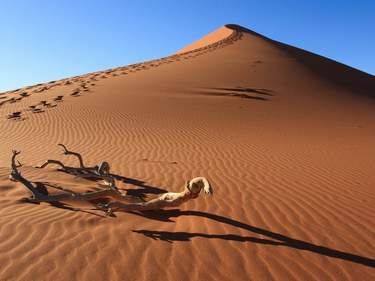
10 days / from 2600 USD
Ultimate Self Drive in Namibia
Explore Namibia on this epic, 10-day self drive trip. Highlights include the Namib, an ancient desert with towering dunes, dramatic mountains and colonial architecture at the waterfront. Additionally, you will visit the Himba people, discover Etosha National Park and more.

14 days / from 6616 USD
Epic Gondwana Adventure: Deserts, Ocean and Wilderness
Experience the best Namibia has to offer with a trip across the country, from the Kalahari to the Namib, the coast to Damaraland, ending off with an unforgettable time in the wildlife-mecca that is Etosha National Park.

8 days / from 16730 USD
Wilderness Safaris by Flight
Take convenient flights to explore the country's remote deserts, luxury lodges, safari camps, and iconic sights, from Sossusvlei's immense dunes to the rugged landscapes of Damaraland and the remote beauty of Kaokoveld.
Arguably the most impressive natural wonder in Namibia is the Fish River Canyon, in the far south, which affords breathtaking views across a deep serpentine chasm in the Earth’s crust, while in the northeast, the impressive sandstone Waterberg Plateau stands sentinel over the surrounding bushveld. At the very north of Namibia, the species-rich wetlands of the Zambezi Region, a 450km arm of luxuriant subtropical forest that stretches out above Botswana towards Zimbabwe and Victoria Falls, provide a wholly different landscape.
While, traditionally, tourists have been drawn to Namibia for its wilderness terrains, the country is now also attracting attention for its wildlife ; specifically, the increasing numbers of rare large mammals that are thriving in the semi-arid areas. Beyond the game-heavy confines of Etosha – Namibia’s premier national park – the world’s largest concentrations of free-roaming cheetah stalk the plains, while desert-adapted elephant and black rhino lumber along the valleys and riverbeds of northwest Namibia. In many cases these beasts are protected by conservationists working hand in hand with local communities – communities that are also beginning to open up to visitors, who can learn more about these cultures and lifestyles.
The Namib also hosts many extraordinary succulent plants and dune-dwelling endemics – especially lizards – that have adapted to the harsh conditions, and which have featured in many a nature documentary. In complete contrast, the lush, subtropical Zambezi Region holds almost three-quarters of the country’s bird species and many large mammals not seen elsewhere in the country.
As with most other countries in Africa, Namibia’s socio-political landscape has been indelibly shaped by colonialism , specifically the regimes of Germany and then South Africa, which resulted in the imposition of apartheid and the Namibian War of Independence that lasted over twenty years. While the adverse effects were considerable – and some still endure – it’s true to say that Namibia’s cuisine has benefited from its colonial past, from cream-laden German cakes, tasty filled brötchen and good coffee, to the dried, cured meats favoured by South Africans. Namibia was one of the last countries in Africa to gain independence – in 1990 – and it has taken time for the government to realize the country’s tourism potential, just as foreign tourists have been slow to appreciate Namibia’s haunting scenery, fascinating wildlife and rich cultural diversity. Now, Namibia is becoming established on the tourist map: high-quality, affordable lodges and campgrounds are sprouting up, often in conjunction with local conservancies; rural communities are inviting visitors to learn about their cultures, traditions and modern-day challenges; and new ways of experiencing Namibia are constantly being devised, from skydiving or hot-air ballooning over the desert to tracking rhino or kayaking with crocs.
International flights arrive at Windhoek, the country’s capital and transport hub, conveniently located in the centre of Namibia. A small city, more akin to a provincial town, it’s a pleasant spot to wander around for a couple of days, taking in the few modest sights, browsing the shops and sampling the local cuisine. From here, you need to plot your route carefully; although the tarred and gravel roads are maintained to high standards in Namibia, the distances are vast, which means you can easily end up spending most of your time getting to places. That said, much of Namibia’s appeal lies in its vast, uninhabited landscapes, which are best appreciated by driving through them.
Don't know where to start preparing for your trip to Namibia? Our Namibia itineraries can be your starting point.
Most first-time visitors, and those short of time, travel a circuit round central and northern Namibia, but with a quick detour – by Namibian standards – southwest to the Sossusvlei area of the Namib-Naukluft National Park, where the towering apricot sand dunes that change colour with the light are truly spectacular. From here many visitors head northwest to enjoy the milder climate and colonial architecture of the country’s top coastal resort, Swakopmund, which lies almost due west of Windhoek. Though no beach hangout – it’s too cold to swim most of the year – it’s a fascinating place, surrounded by dunes that you can explore on foot, on horseback or on a quad bike; it’s also rapidly emerging as a centre for adventure sports, such as skydiving and sand-boarding. A short excursion south takes you to Walvis Bay, the country’s main port, where you can consort with seals, dolphins and pelicans on the lagoon.
Moving north, organized tours and self-drive travellers often take in the Cape Cross seal colony before cutting inland via the desolate, mist-shrouded Skeleton Coast National Park to Damaraland, where some of the country’s most evocative scenery lies. At the southerly limit of this region, the domed Erongo Mountains and the pointed Spitzkoppe – both composed of giant burnished granite slabs – provide wonderful hiking and birdwatching opportunities, as well as some examples of San rock paintings. Far better preserved paintings are to be found at the Brandberg, Namibia’s largest massif, further north, while the continent’s oldest rock engravings at Twyfelfontein give fascinating insights into the spiritual world of some of Africa’s oldest inhabitants. The wonderful lodges in the area make the most of the picturesque scenery and offer the chance to spot desert-adapted elephant and rhino.
It’s a bit of a detour to the mountainous northwest, where the rocky, reddish-brown land and the frontier town of Opuwo are home to the semi-nomadic Himba; a further two-hour drive north takes you up to the scenic Epupa Falls, on the Kunene River, which marks the border with Angola. Many miss out this area and head straight to Etosha National Park – indisputably the top wildlife-watching spot – where they spend a few days before returning to Windhoek, sometimes via the scenic Waterberg Plateau. With more time, a journey northeast to the verdant Zambezi Region in the panhandle reaps many rewards: lush broad-leaved forests, gliding rivers and plentiful wildlife roaming in unfenced reserves. The less-visited far south is also worth the trek for its remarkable geological fault, the Fish River Canyon, from where it’s a few hours’ drive to the quaint historical German town of Lüderitz on the coast. A trip to the sinuous Orange River, which marks the border with South Africa, provides welcome respite from the relentless heat of the interior: an opportunity to paddle through beautiful scenery and indulge in some gentle birdwatching.
Visitors with more time should consider heading southeast to gaze at the rippling red dunes of the Kalahari, even popping over the South African border into the Kgalagadi Transfrontier Park, where vast herds of large mammals follow ancient migration routes. Alternatively, round Tsumkwe, in the northern reaches of this semi-desert, an increasing number of San communities are opening up to visitors, keen to share their ancient traditions and survival skills.
Top image © Przemyslaw Skibinski/Shutterstock
Discover more places in Namibia

- The southern Kalahari and the far south Travel Guide
- The southwest Travel Guide
- Windhoek and around Travel Guide
• Namibia is the second least densely populated country in the world after Mongolia, with only 2.68 inhabitants per square kilometre.
• Rugby union has been played in Namibia since 1916, and the national team has qualified for the last five world cups.
• On account of low population density and low light pollution, the country’s glittering night sky is one of the world’s top stargazing destinations.
• Though social inequalities are slowly improving, the richest ten percent of the population – including the six percent white minority – receive over half the national income.
• The Kunene Region has the world’s greatest concentration of black rhinos .
• Over a tenth of the Namibian population – from the Nama, Damara and San peoples – speak a click language .
• Etosha Pan is Africa’s largest saline pan , a vast white sheet visible from space.
• Namibia’s all-time greatest athlete, Frankie Fredericks , held the indoor world 200m record for eighteen years before Usain Bolt broke it in 2014.
Shops usually open at 9am, closing around 5.30pm. They also often close for lunch and on Saturdays shut down for the weekend at 1pm. Large supermarkets tend to open earlier (7–8am) and remain open until 7–8pm Monday to Friday; they may operate reduced trading hours on Saturday and Sunday, though some remain closed on Sunday. Government offices are open Monday to Friday 8am–5pm, often taking a lunch hour at 1pm.
Namibia doesn’t have many public holidays , and if the date falls on a Sunday then the holiday is usually held on the following Monday. During these days most government offices, businesses and shops close. Many businesses and government departments also effectively close from mid-December to mid-January for the summer holidays.
New Year’s Day
Independence Day
March/April
Good Friday and Easter Monday
Workers Day
Cassinga Day. Commemorates the attack on a SWAPO base in Angola by the SADF in 1978, which killed 600.
Ascension Day
Africa Day. Remembers the foundation of the Organisation of African Unity (OAU) in 1963.
Heroes’ Day. Recognized by the UN as Namibia Day, which commemorates the official start of the War of Independence in 1966.
December 10
International Human Rights Day
December 25
Christmas Day
December 26
On the weekend closest to August 23, Herero Day or Red Flag Heroes’ Day (not to be confused with the national Heroes’ Day), Herero gather in their thousands in Okahandja to commemorate their deceased chiefs, and, in particular Chief Samuel Maharero , who led the revolt against the German colonial army. The chosen date coincides with the reburial of his remains here, following his death in 1923 in South Africa, where he’d been living in exile. Since then, Herero have congregated annually for a three-day gathering, the culmination of which is a procession round various grave sites of Herero chiefs, followed by a church service. This homage to the dead, which has since become a symbol of resistance against colonialism, is an impressive sight, with the Herero women decked out in their voluminous crimson missionary-era dresses and “cow-horn” headgear, and the men marching in their military-style uniforms according to their paramilitary regiments. Followers of other flags meet at other times of the year in other locations; for example, the White Flag Herero gather in Omaruru in August. The Green Flag Mbanderu also meet in Okahandja on the weekend nearest June 11.
Travel advice for Namibia
From travel safety to visa requirements, discover the best tips for traveling to Namibia
- Eating and drinking in Namibia
- Getting around Namibia: Transportation Tips
- Going on safari
- Sports and Outdoor activities in Namibia
- How to get to Namibia
- Travel Health Namibia
- Travel Tips Namibia for planning and on the go
The Rough Guides to Namibia and related travel guides
In-depth, easy-to-use travel guides filled with expert advice.
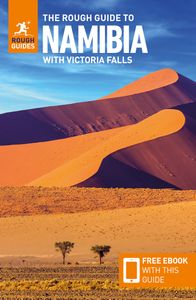
Find even more inspiration here

Planning your own trip? Prepare for your trip
Use Rough Guides' trusted partners for great rates
written by Rough Guides Editors
updated 07.05.2024
Ready to travel and discover Namibia?
Get support from our local experts for stress-free planning & worry-free travels.
- Where to stay
- Travel advice

Namibia Travel Guide
Your ultimate namibia travel guide, with tips, things to do, and best things to see in namibia. great for first-time and returning travelers..
Lions stalking Blue Wildebeest under the cover of sun-burnt savannah grasses. Desert elephants – smaller than most, and with unusually wide feet – adapted to the blowing sands of the Kalahari.
Termite mounds as tall as my house, and people that throw incomprehensible pops and clicks into their speech at seemingly random times .
This Namibia travel guide will help you plan your next vacation.
Popular Guides
- Walk with Cheetahs
- Kilimanjaro
- Things to do
Our Highlight
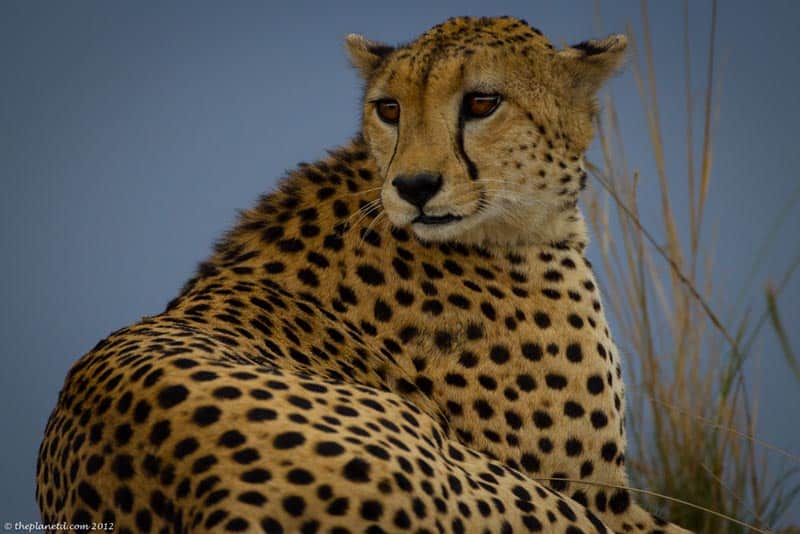
Table of contents
Table of Contents
Fast Facts about Namibia
- Namibia power voltage is 220V 50Hz; Plug D & M
- The Namibian currency is the Namibian dollar and is around 13 NAD to 1 USD.
- Beware of Chikungunya , a viral disease transmitted by the bite of infected mosquitoes. This outbreak continues to affect parts, Africa. Symptoms can take up to 12 days to appear but usually begin within 3-7 days after being bitten by an infected mosquito. Symptoms generally include fever and joint pain; other symptoms can include fatigue, headache, nausea, vomiting, muscle pain, and rash.
- Travelers spending a lot of time outdoors or visiting game parks have an increased risk of being bitten by a tsetse fly which can cause African Sleeping Sickness. Remember that these flies: bite during the day, are attracted to bright, dark colors and can bite through lightweight clothing.
- Namibia banks, as well as Wilderness camps, only accept US Dollars, GBP Sterling, Euro and South African Rand in cash. Travelers’ Cheques in any of the above currencies are also acceptable. MasterCard and Visa are usually accepted throughout Namibia.
- The water is not potable ; drink only bottled water.
Things to See and Do in Namibia
- Namib-Naukluft National Park: Come to the largest game park in Africa. Included are parts of the Namib, the world’s oldest desert, as well as the Naukluft mountains.
- Spitzkoppe: Climb these granite peaks in the Namib desert. Featuring paintings created by the Bushmen, see art from the past while climbing the rock formations.
- Volunteer to work with Cheetahs and wildlife conservation.
- Windhoek’s Christ Church: Step inside this historical German Lutheran Church in Windhoek. Constructed in 1907, it is the oldest Lutheran church in Namibia and is considered a symbol of the city.
- Etosha National Park: See lions, zebras, giraffes, leopards, and more at this national park.One of the best places to see wildlife, you can also head to the salt pan in the middle of the park, which is the largest one in Africa. Camping is available in the park.
- Fish River Canyon: One of the most popular places in Namibia, Fish River Canyon is the largest canyon in Africa and the second largest in the world. Go camping, hike through the Fish River Hiking Trail (53 miles long in total), or just take in unparalleled views of the canyon.
Namibia Travel Guides
- Ultimate Guide to Kitesurfing Cape Town
- We Cycled the Continent of Africa
Accommodation
Budget: You can find a variety of hostels and guest houses for 150-450 NAD per night. These come with free breakfast and Wi-Fi, simple private rooms or dorms, an outdoor pool, and close locations to nearby shops and restaurants.
Mid-Range: For mid-range, expect to pay around 600-750 NAD per night. These hotels come with private rooms, an outdoor pool, a casual hotel restaurant, free breakfast, and a lounge area.
High-End: For five-star hotels, you will pay around 3,500-13,000 NAD per night. Take in the best with private suites with flat-screen TVs and fireplaces, free breakfast, a hotel restaurant and bar, spa services, and activities like birdwatching.
Check out our favorite booking platforms Booking.com , Tripadvisor and Air B&B for the best deals on accommodation in Ireland.
colonial period. Oshifima (millet paste) served with meat and vegetables is a popular meal. Other common meals include oshiwambo (beef, spinach, and maize meal), braaivleis (meat barbeque), and potjiekos (meat, chicken, and fish stew).
Head down to the coast to get fresh seafood or look for street vendors that sell kapana (spicy meat strips). There are more restaurants where you can sample more Namibian cuisine. In total, expect to pay around 100 NAD per day for food.
The Best Ways to Get Around Namibia
Getting to namibia:.
Flights: There are 8 airports in Namibia, but the Hosea Kutako International Airport is the main airport to fly into and is 28 miles from the capital of Windhoek. You can check for the best flights to Namibia on Skyscanner .
Transportation:
Buses: Buses come in two main forms: the minibuses that go throughout towns or long-distance buses that travel between cities and include meals. Reservations should be made at least 72 hours for long-distance buses. Travel from Windhoek to Oshakati in 10.5 hours for 450 NAD
Taxis: Taxis are another way to get around. A typical taxi ride through the capital of Windhoek will cost about 12 NAD.
Car Rental: To rent a car, you generally need to be at least 25 years old and will need a U.S. driver’s license that has been valid for a year. Prices average at 1,070 NAD per day.
Uber: There is no Uber, but there is the rideshare app Lefa, which operates similarly to Uber.
When to go To Namibia
The best time to visit Namibia is between July and October. During these months, temperatures are pleasant (high 60s/low 70s) and there is little rainfall, which makes it the best chance to see wildlife.
Where to Stay in Namibia
Avani Windhoek Hotel and Casino: Centrally located with beautiful views of Windhoek with a Rooftop pool.
Hakusembe River Lodge, Gondwana Collection Namibia : When in Rundu, stay at this great lodge. Relax in wood-furnished bungalows, sleep in canopied beds, dine at the riverside restaurant, swim in the outdoor pool, go fishing, take a champagne river cruise, or relax on the sun loungers. Kids 5 and under stay free.
Protea Hotel by Marriott Walvis Bay : Stay next to the Atlantic Ocean at this hotel. The Walvis Bay Train Station is just 7 minutes away on foot, which is perfect for those who want to explore more of the city. Or you can stay inside and enjoy free breakfast and Wi-Fi, a hot tub, golf, room service, and a hotel restaurant and bar.
Check out our favorite booking platforms Booking.com , Tripadvisor and VRBO for the best deals on accommodation in Namibia.
What to Pack for Namibia
The climate is typically semi-desert with hot days and cool nights. Midsummer temperatures may rise to over 40 degrees Celsius.
Winter days are warm, but dawn temperatures may drop to freezing. The coast is cool with low rainfall and fog that prevails from late afternoon until mid-morning. The rainy season lasts from October to April.
The rest of the year is dry and cloudless. Rejoice, Namibia averages 300 days of sunshine a year!
- Waterproof bag – the bag has two functions, protecting your stuff from the rain and also from the dust, especially if you’re travelling to drier regions.
- Footwear – especially important if going you are heading on a safari! Pack a pair of lightweight, durable, waterproof and comfortable shoes and also a pair of flip-flops or sandals that you can change into after a long day of sightseeing.
- Protection from the elements – pack sunscreen, sunglasses, a hat, a loose sarong or wrap to cover yourself from the sun and bug-spray to prevent getting bitten by a mosquito (that might have malaria!)
- Layers – pack the basic tropical clothes and make sure to include long pants, long-sleeve tops and some warm clothes for those chilly nights. Make sure to pack parka and scarf / gloves for winter
- Avoid packing dark colored clothes – tsetse flies are drawn to dark colors, like blue and black clothing, and their bite can give you African Sleeping Sickness. Stick to light, neutral colors but avoid packing white clothes as they will get dirty and dusty pretty quickly.
- Pack for Humidity – for humid weather it is best to pack fabrics that breathe as much as possible and natural fabrics, like cotton, linen or rayon (avoiding silk, wool and polyester). Clothing should be loose and comfortable to encourage the flow of air and allow moisture to evaporate.
See our packing tips: packing list for smart travel & How to Pack for a Safari
Namibia Travel Guide: Best Booking Resources
Whenever we travel to we make sure to start with these companies. We have tried a lot of different ones over the years and all of these have consistently proven to be the best when it comes to offering great prices.
We have used every one of these personally and continue to do so.
- Booking.com : This is our go site to when comparing prices for accommodation. It usually has the cheapest prices, especially in Europe and we love their interface. Not to mention you get free cancellation and you are guaranteed the best price.
- Trip Advisor : What we like about Trip Advisor is that we can look at all the reviews and then book our accommodation. TripAdvisor is where we go when we want to compare prices with multiple accommodation providers.
- VRBO : is the main search engine we use when we are looking for a home or apartment rental. It can sometimes be cheaper than hotels and it is the best way to stay in areas that offer a more local feel.
- Hostelworld : With one of the largest databases of hostels in the world, Hostelworld is the go-to site when you are looking for budget accommodation.
- Skyscanner : This is the first place we check for flights. It consistently comes back with the cheapest and best options. It allows us to compare a lot of airlines to get the best price.
- Rome 2 Rio : If you want to see how to get somewhere by plane, train, bus, ferry or car Rome2Rio lays it all out for you as well as related costs.I love how they show it all to you on a Google Map and it works offline.
- Get Your Guide: For all your day trip and city guide needs, we use Get Your Guide. It has the world’s largest collection of things to do with more than 30,000 activities in 7500 destinations.
- World Nomads Insurance: When traveling to Italy you should always have travel insurance. We have found the best bang for your buck is by far World Nomads.
Namibia Travel Guide: Related Articles
To browse all our articles and guides about Namibia click here.
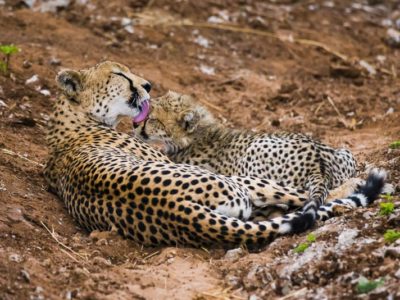
Walk with Cheetahs – Bushmen Conservation in Africa
The Rough Guide to Namibia with Victoria Falls
This Namibia guidebook is perfect for independent travellers planning a longer trip. It features all of the must-see sights and a wide range of off-the-beaten-track places. It also provides detailed practical information on preparing for a trip and what to do on the ground. And this Namibia travel guidebook is printed on paper from responsible sources, and verified to meet the FSC’s strict environmental and social standards.
This Namibia guidebook covers: Windhoek and around, The southwest, The southern Kalahari and the far south, Central-northern Namibia, Central coast, Etosha and the far north, The northeast, Victoria Falls.
Inside this Namibia travel book, you’ll find:
- A wide range of sights – Rough Guides experts have hand-picked places for travellers with different needs and desires: off-the-beaten-track adventures, family activities or chilled-out breaks
- Itinerary examples – created for different time frames or types of trip
- Practical information – how to get to Namibia, all about public transport, food and drink, shopping, travelling with children, sports and outdoor activities, tips for travellers with disabilities and more
- Author picks and things not to miss in Namibia – Sossusvlei (Namibian desert), Fish River Canyon, Walvis Bay Lagoon, stargazing, adrenaline sports, Victoria Falls, Craft shopping, Etosha National Park, San Rock Art, Desert wildlife, hot-air ballooning, cruise on the Zambezi
- Insider recommendations – tips on how to beat the crowds, save time and money, and find the best local spots
- When to go to Namibia – high season, low season, climate information and festivals
- Where to go – a clear introduction to Namibia with key places and a handy overview
- Extensive coverage of regions, places and experiences – regional highlights, sights and places for different types of travellers, with experiences matching different needs
- Places to eat, drink and stay – hand-picked restaurants, cafes, bars and hotels
- Practical info at each site – hours of operation, websites, transit tips, charges
- Colour-coded mapping – with keys and legends listing sites categorised as highlights, eating, accommodation, shopping, drinking and nightlife
- Background information for connoisseurs – history, culture, art, architecture, film, books, religion, diversity
- Essential Oshiwambo, Otjiherero, RuKwangali, siLozi dictionary and glossary of local terms
- Free download of the eBook – available after purchase of the printed guidebook to Namibia
Fully updated post-COVID-19
The guide provides a comprehensive and rich selection of places to see and things to do in Namibia, as well as great planning tools. It’s the perfect companion, both ahead of your trip and on the ground.
Description
Book details.
This title is a part of Rough Guides Main Series
Practical travel guides series covering countries, cities and regions, with detailed factual travel tips, perfect for independent, long-stay, backpacking and budget-conscious travellers seeking comprehensive travel information and off-the-beaten track experiences
Extensive practical travel information including getting there, getting around, climate information, safety tips, accommodation explanations, food & drink advice and shopping essentials
Curated author picks with destination highlights at the beginning of each guide
Ready-made itineraries covering every corner of the destination
Colour-coded places chapters with detailed coverage of places and sights, presented in a points-of-interest structure
Extensive recommendations for accommodation, restaurants, shops and leisure activities for all budgets
Colour-coded detailed maps with marked-up key sights
Insights on history and nature highlights
Easy to use, newspaper-style layout
All guides published from January 2021 are printed on paper from responsible sources verified to meet FSC’s strict environmental and social standards
Free eBook with each printed guide published from May 2019
Format: 129 x 198mm
Price: £14.99-£26.99 | $13.99-$34.99
Extent: 616–1208 page
BOOK DETAILS
Which payment options can I use in the Rough Guides Shop?
You can pay with credit card : Visa, MasterCard, American Express, and via PayPal .
How long will it take to receive my order from the Rough Guides Shop?
If you’ve ordered an ebook, it will be delivered to you via email immediately after your purchase.
For printed book orders, we offer DPD next day delivery in the United Kingdom and Northern Ireland and standard (2-8 days), priority (1-3 days) delivery options in the USA.
Please be aware that the delivery times are based on when your item was dispatched and not when you ordered your item. Unless stated otherwise, we intend to send items on the next available business day.
Currently we do not provide a tracking number for your order.
How can I contact Rough Guides about a shop order?
You can contact our shop team at " [email protected] ".
To help our team reply faster, please copy and use one of the following email subject lines:
- "Book shop: orders, shipping, returns"
- "Website: general usage and technical problems"
- "Guide books: corrections and other questions"
- "Tailor-made travel"
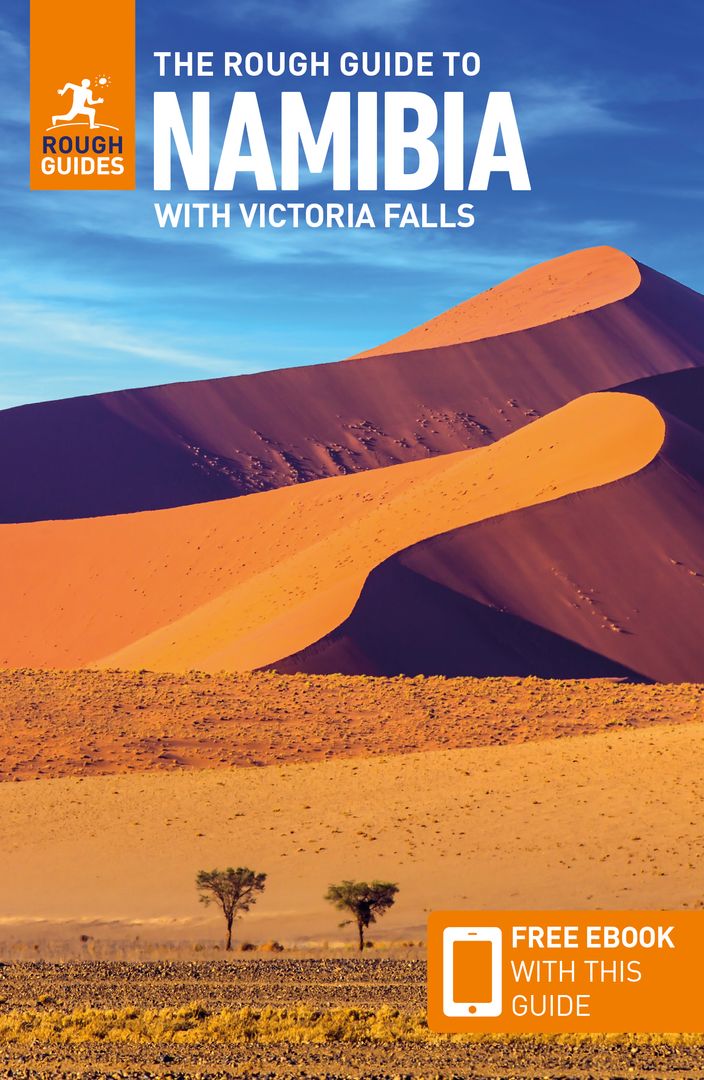
You might also love
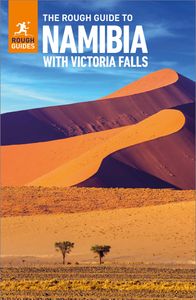
Insight Guides Namibia
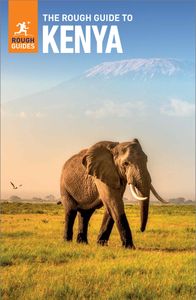
The Rough Guide to Kenya
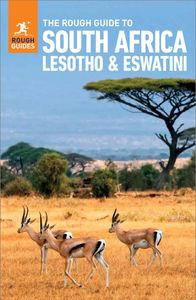
The Rough Guide to South Africa
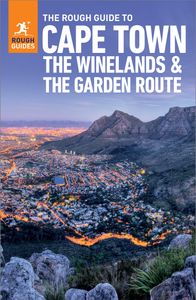
The Rough Guide to Cape Town, Winelands & the Garden Route
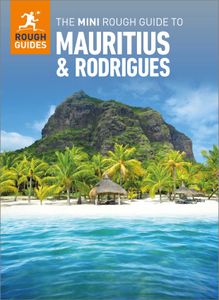
The Mini Rough Guide to Mauritius
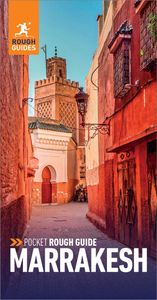
Pocket Rough Guide Marrakesh
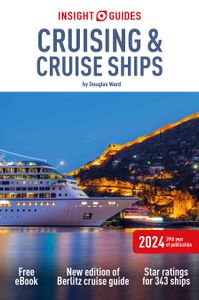
Insight Guides Cruising & Cruise Ships 2024
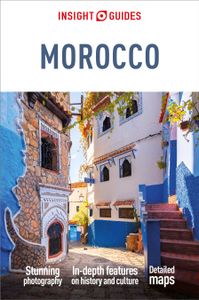
Insight Guides Morocco
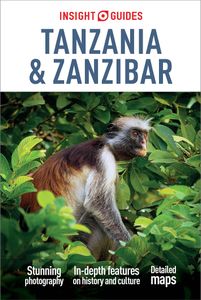
Insight Guides Tanzania & Zanzibar
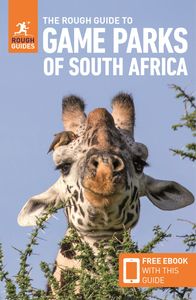
The Rough Guide to the Game Parks of South Africa
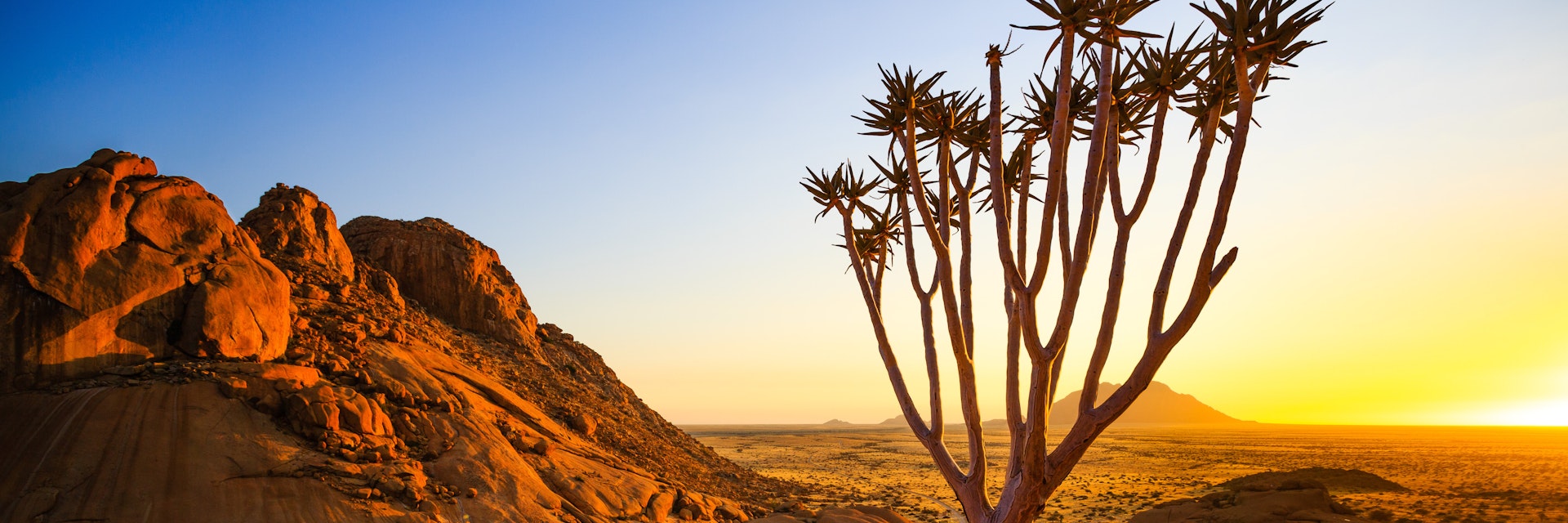
©Radek Borovka/Shutterstock
If Namibia is 'Africa for beginners', as is often said, what a wonderful place to start.
Best Time to Visit
Best places to visit, attractions, must-see attractions.
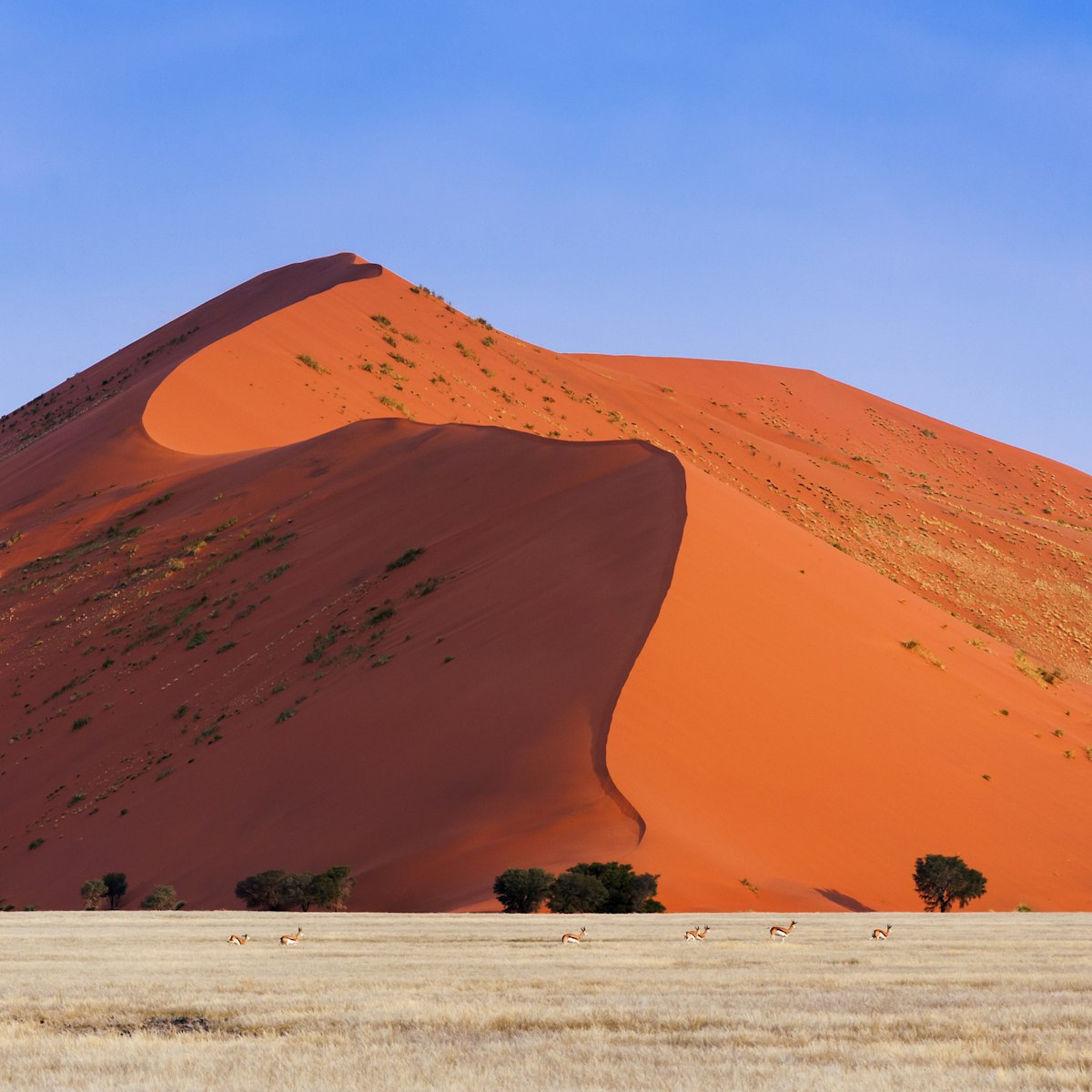
Sossusvlei, a large ephemeral pan, is set amid red sand dunes that tower up to 325m above the valley floor. It rarely contains any water, but when the…
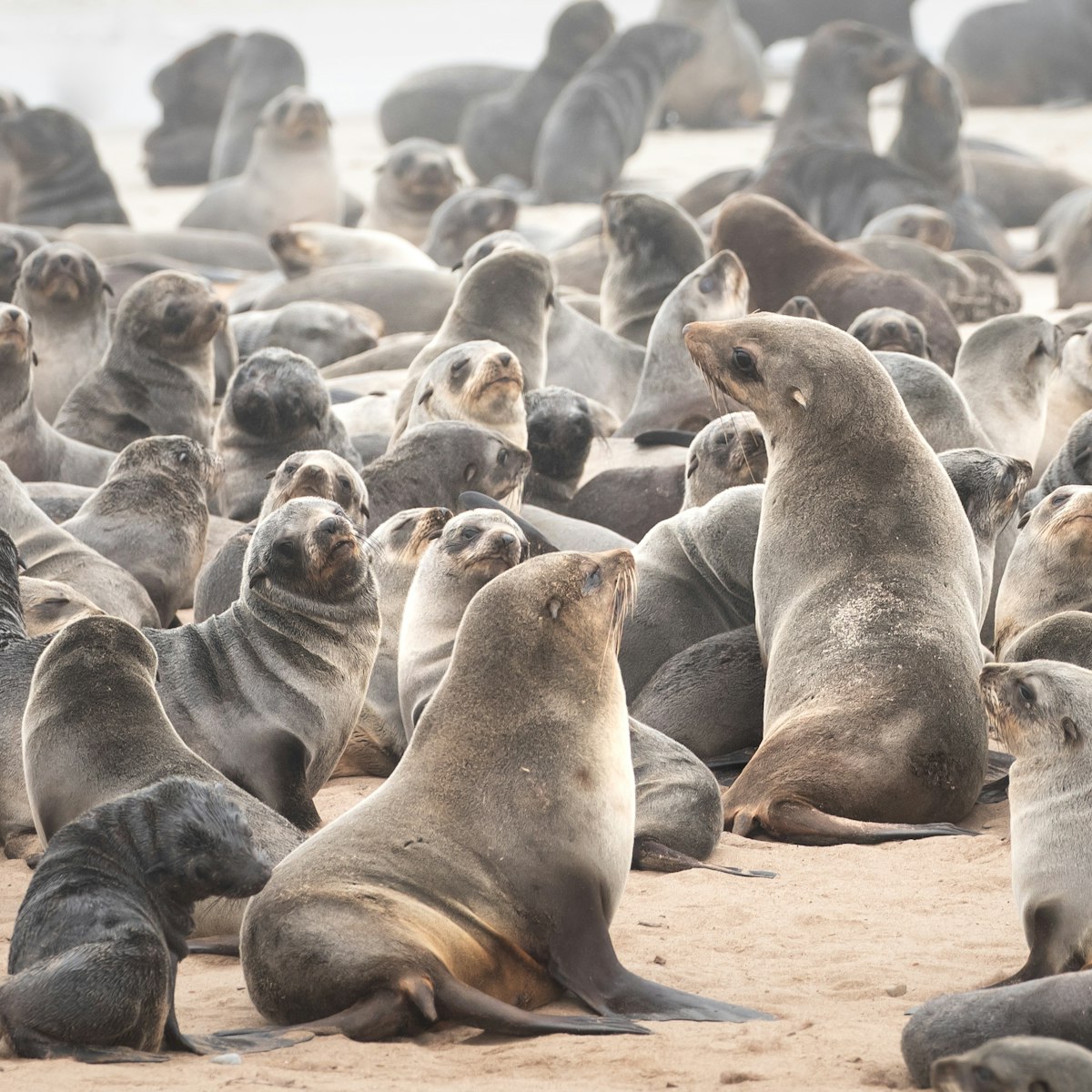
Cape Cross Seal Reserve
Skeleton Coast
The best-known breeding colony of Cape fur seals along the Namib coast is in this reserve, where the population has grown large and fat by taking…

Although it's much less famous than its neighbour Sossusvlei, Deadvlei is actually the most alluring pan in the Namib-Naukluft National Park – it's…

Sandwich Harbour
Sandwich Harbour, 56km south of Walvis Bay in Dorob National Park, is one of the most dramatic sights in Namibia – dunes up to 100m-high plunge into the…

Sesriem Canyon
The 3km-long, 30m-deep Sesriem Canyon, 4km south of the Sesriem headquarters, was carved by the Tsauchab River through the 15-million-year-old deposits of…

Hidden Vlei
This unearthly dry vlei (low, open landscape) amid lonely dunes makes a rewarding excursion. It's a 4km return hike from the 2WD car park. The route is…
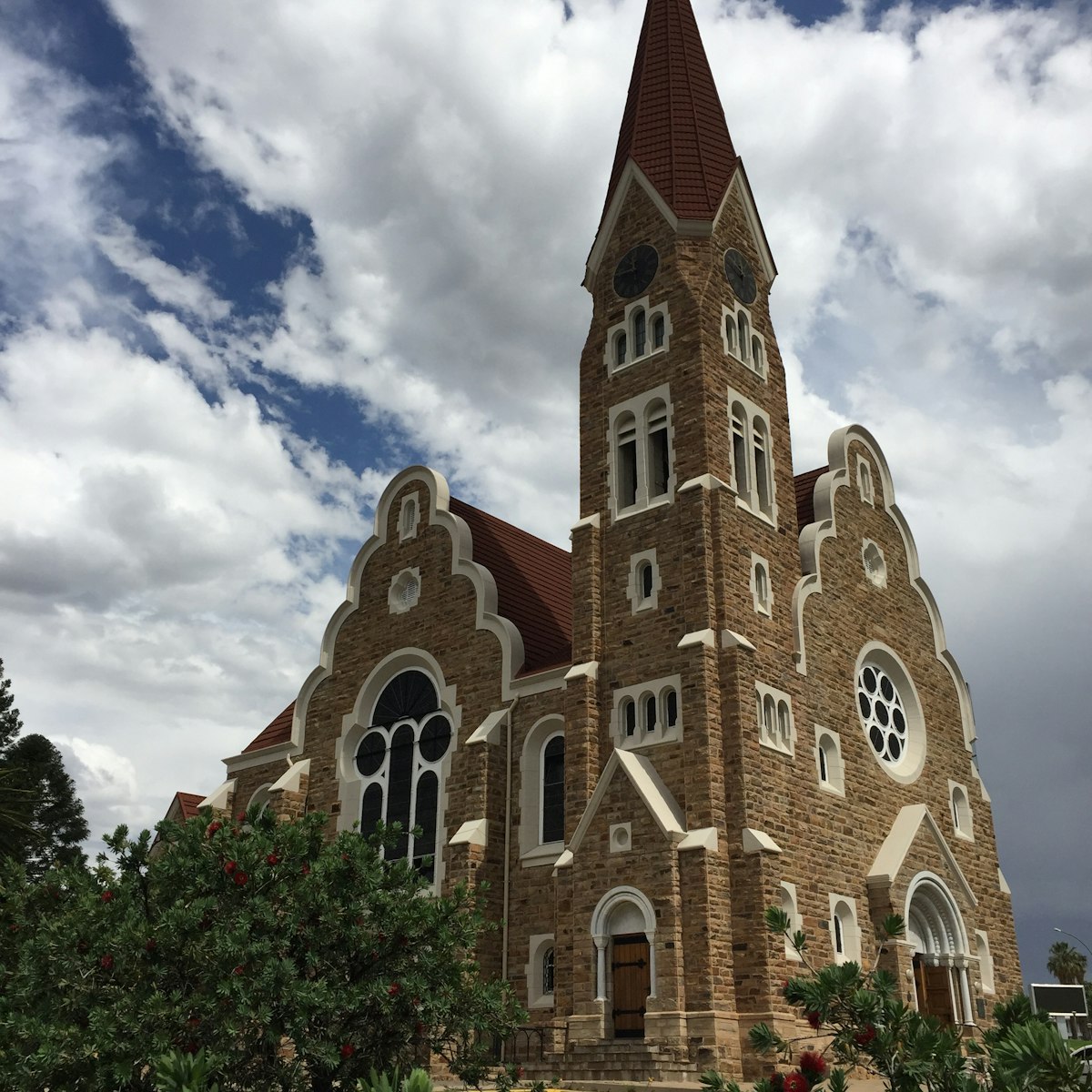
Christuskirche
Windhoek’s best-recognised landmark, and something of an unofficial symbol of the city, this German Lutheran church stands on a traffic island and lords…
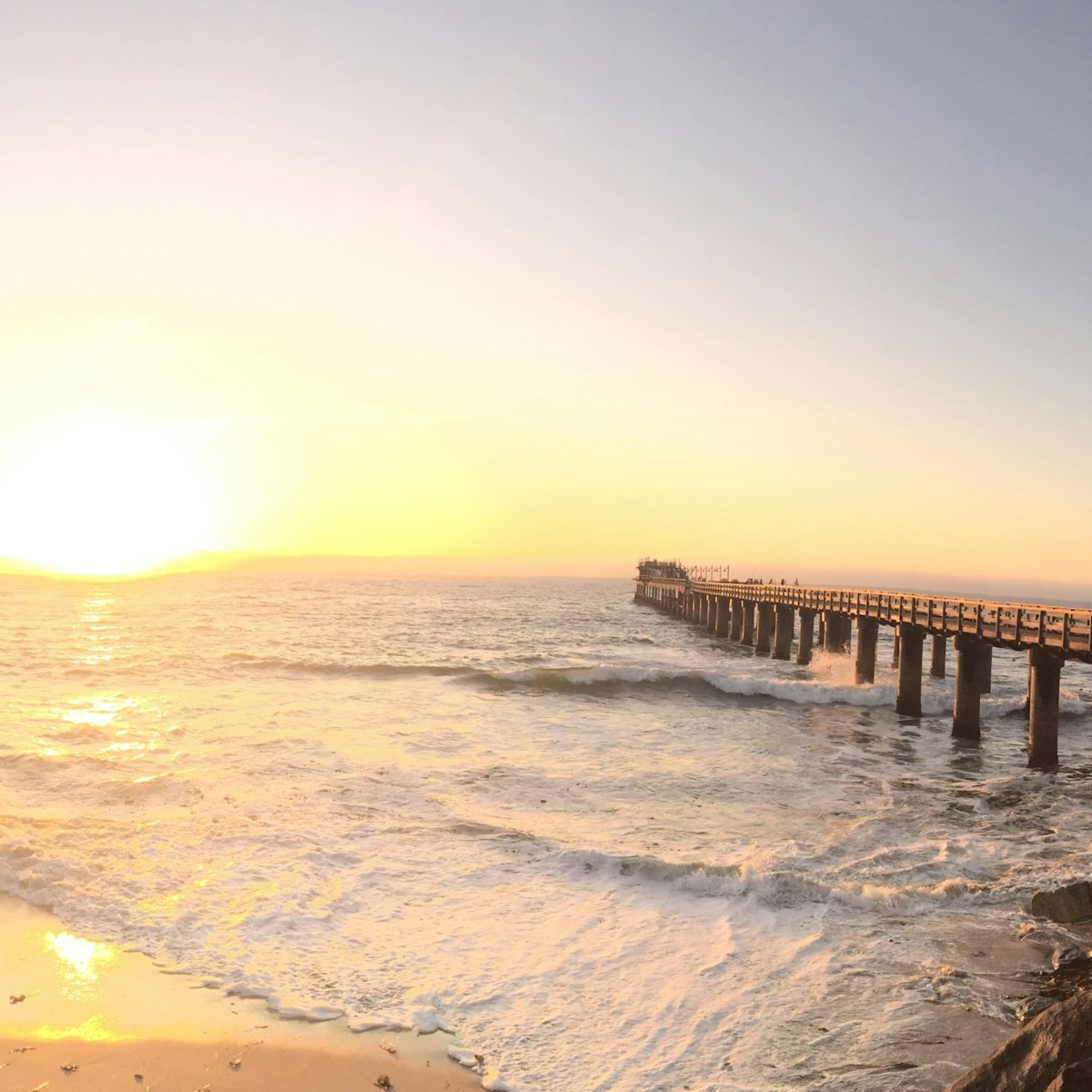
In 1905 the need for a good cargo- and passenger-landing site led Swakopmund’s founders to construct the original wooden pier. In the years that followed,…
Top picks from our travel experts
12 of the best things to do in namibia.

Named after early Afrikaner trekker Jani Kolman, whose ox wagon became bogged in the sand here, Kolmanskop was originally constructed as the Consolidated…

Independence Memorial Museum
Opened in 2014, this museum is dedicated to the country's anticolonial and independence struggle. The first floor tells the story of Namibia under…
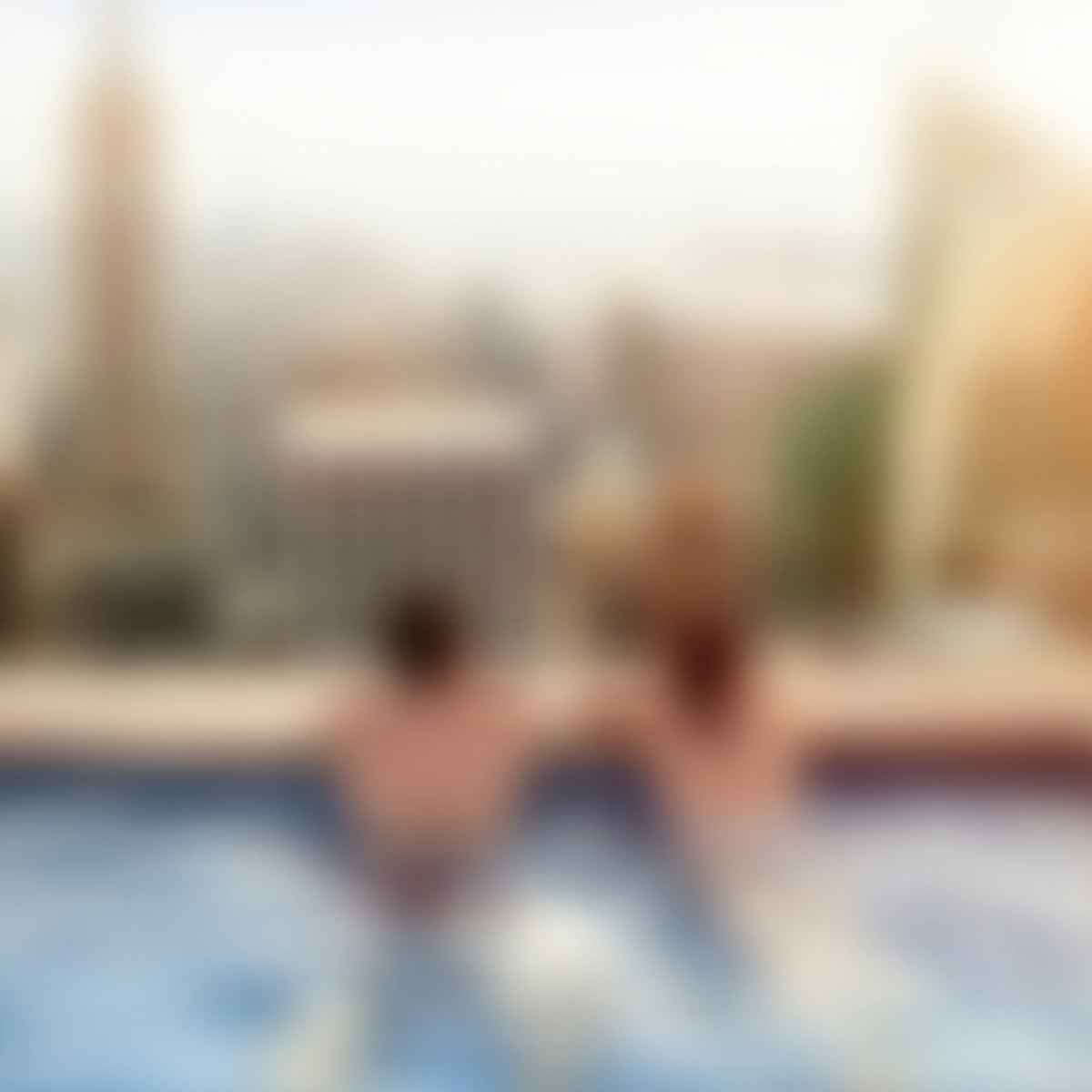
Betta Camp Site
A welcoming stop on the road in these parts is Betta Camp Site, roughly 20km past Duwisib. Apart from petrol and campsites if you want to crash the night,…
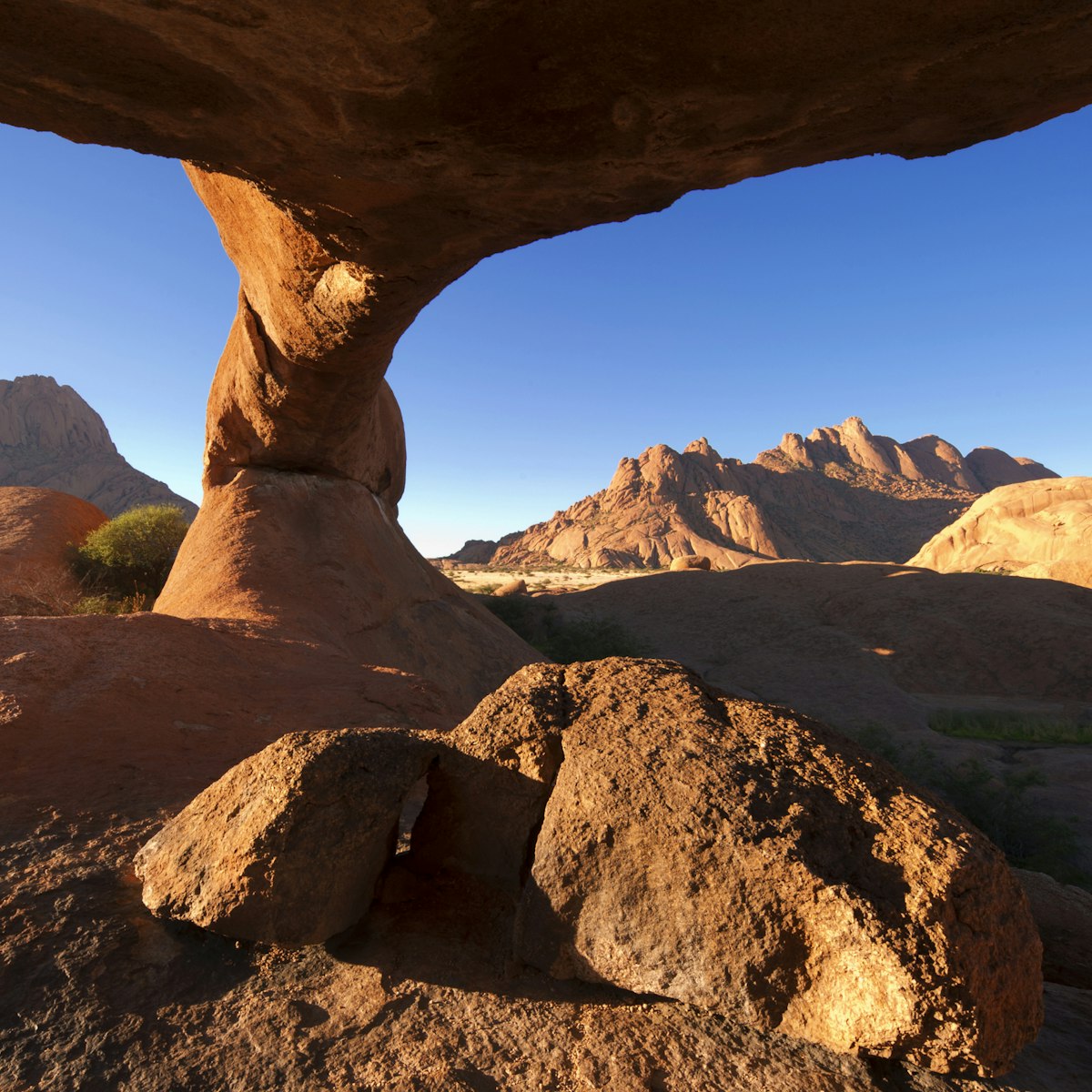
One of Namibia’s most recognisable landmarks, the 1728m-high Spitzkoppe rises mirage-like above the dusty plains of southern Damaraland. Its dramatic…
Planning Tools
Expert guidance to help you plan your trip.
Best Things to Do
From the dazzling Kalahari Desert to some of the world’s best stargazing, Namibia offers extraordinary encounters with nature.
Things to Know
Get ready for your trip to Namibia with these important tips on health, safety and things to pack.
Transportation
There aren’t many places where you can drive for hours without seeing anything other than the occasional oryx. Here's how to get around in Namibia.
Visa Requirements
Here's everything you need to know about getting a tourist visa to travel to Namibia.
Money and Costs
Save money on your trip to Namibia with these cheap transport tips and information on the costs of camping vs staying in a lodge.
Traveling with Kids
From wildlife-watching safari adventures to stargazing, family travelers will find that Namibia has a lot to offer.
Best Road Trips
Set off on an adventure in Namibia with these five road trips featuring desert, dunes, waterways and Atlantic coastline.
Latest stories from Namibia
Filter by interest:
- All Interests
- Adventure Travel
- Art & Culture
- Beaches, Coasts & Islands
- Food & Drink
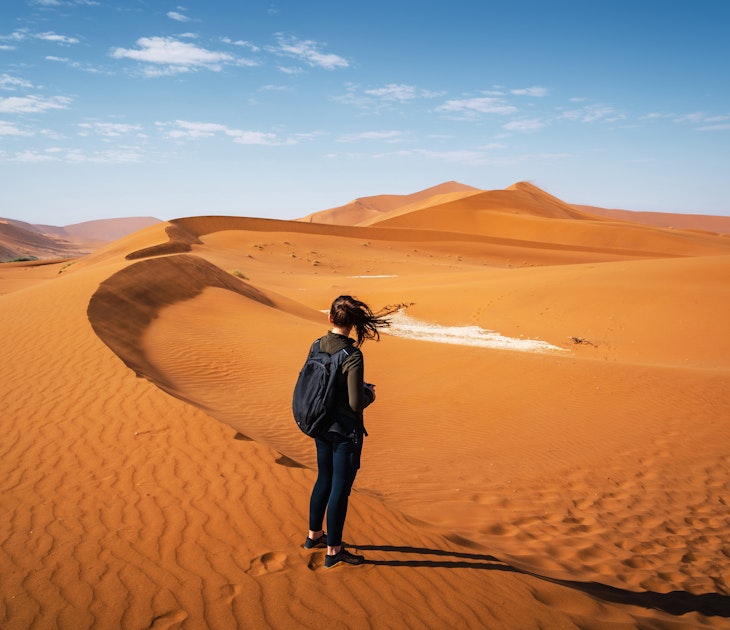
Destination Practicalities
Oct 26, 2023 • 3 min read
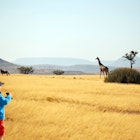
Oct 25, 2023 • 6 min read

Oct 23, 2023 • 4 min read
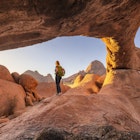
Oct 23, 2023 • 7 min read
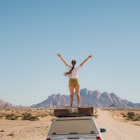
Oct 22, 2023 • 7 min read
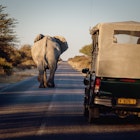
Oct 21, 2023 • 5 min read
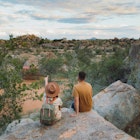
Oct 19, 2023 • 6 min read
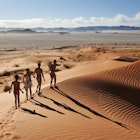
Oct 17, 2023 • 11 min read
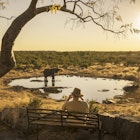
Oct 16, 2023 • 6 min read
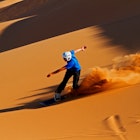
Sep 25, 2022 • 6 min read
in partnership with getyourguide
Book popular activities in Namibia
Purchase our award-winning guidebooks.
Get to the heart of Namibia with one of our in-depth, award-winning guidebooks, covering maps, itineraries, and expert guidance.
Namibia and beyond
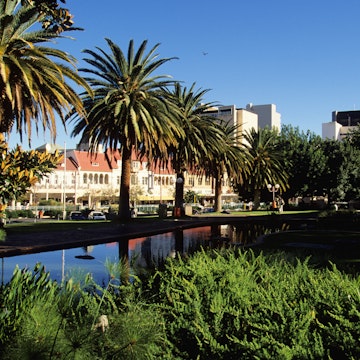

- Travel & Holiday
- Tourist Destinations & Museums

Download the free Kindle app and start reading Kindle books instantly on your smartphone, tablet or computer – no Kindle device required .
Read instantly on your browser with Kindle for Web.
Using your mobile phone camera - scan the code below and download the Kindle app.

Follow the author

Image Unavailable

- To view this video download Flash Player

The Rough Guide to Namibia (Travel Guide with Free eBook): With Victoria Falls (Rough Guides Main Series) Paperback – 1 Mar. 2020
There is a newer edition of this item:.

The Rough Guide to Namibia Make the most of your time on Earth with the ultimate travel guides. World-renowned 'tell it like it is' travel guide, now with free eBook. Discover Namibia with this comprehensive and entertaining travel guide, packed with practical information and honest recommendations by our independent experts. Whether you plan to raft down the Zambezi, stargaze in the Namib desert or have a close encounter with the wildlife in one of Africa's finest national parks, the Rough Guide to Namibia will help you discover the best places to explore, eat, drink, shop and sleep along the way. Features of this travel guide to Namibia : - Detailed regional coverage: provides practical information for every kind of trip, from off-the-beaten-track adventures to chilled-out breaks in popular tourist areas - Honest and independent reviews: written with Rough Guides' trademark blend of humour, honesty and expertise, our writers will help you make the most from your trip to Namibia - Meticulous mapping: practical full-colour maps, with clearly numbered, colour-coded keys. Find your way around Windhoek and many more locations without needing to get online - Fabulous full-colour photography : features inspirational colour photography, including the extraordinary rock engravings and paintings of Brandberg and Twyfelfontein and the windswept shapes of the Barchan, Star and Transverse Dunes. - Time-saving itineraries: carefully planned routes will help inspire and inform your on-the-road experiences - Things not to miss: Rough Guides' rundown of Sossusvlei, Victoria Falls, Etosha National Park, the Kalahari, Windhoek, Walvis Bay Lagoon and Swakopmund's best sights and top experiences - Travel tips and info: packed with essential pre-departure information including getting around, accommodation, food and drink, health, the media, festivals, sports and outdoor activities, culture and etiquette, shopping and more - Background information: comprehensive ' Contexts' chapter provides fascinating insights into Namibia, with coverage of history, religion, ethnic groups, environment, wildlife and books, plus a handy language section and glossary - The ultimate travel tool: download the free eBook to access all this from your phone or tablet - Covers : Windhoek and around; the southwest; the southern Kalahari and the far south; Central-northern Namibia; the central coast and hinterland; Etosha and the far north; the northeast and Victoria Falls You may also be interested in: The Rough Guide to the Game Parks of South Africa, The Rough Guide to South Africa, The Rough Guide to Kenya About Rough Guides: Rough Guides have been inspiring travellers for over 35 years, with over 30 million copies sold globally. Synonymous with practical travel tips, quality writing and a trustworthy 'tell it like it is' ethos, the Rough Guides list includes more than 260 travel guides to 120+ destinations, gift-books and phrasebooks.
- Print length 384 pages
- Language English
- Publisher Rough Guides
- Publication date 1 Mar. 2020
- Dimensions 12.7 x 1.91 x 19.05 cm
- ISBN-10 1789195438
- ISBN-13 978-1789195439
- See all details
Customers who viewed this item also viewed

From the Publisher

MAKE THE MOST OF YOUR TIME IN NAMIBIA
A vast land of mesmerizing landscapes, abundant wildlife and an astonishing array of natural wonders, Namibia promises adventure.
Its defining feature is the Namib, an ancient desert that runs the entire 1500km of the country’s wind-lashed coastline. Encompassing towering dunes, dramatic mountains and lichen-encrusted gravel plains, it’s populated by desert-adapted beasts, with flamingos and colonial German architecture bringing splashes of colour to the waterfront.
Parts of the capital, Windhoek, have a distinctly European feel, from here tempting arterial roads reach out to geological wonders in the south, and the beguiling Kalahari to the east, inhabited by some of Africa’s oldest peoples. To the north lie game-rich reserves and the majority of Namibia’s elusive population, from where the country’s lush panhandle lures you to within touching distance of Victoria Falls.
Discover the best of Namibia and the most special places around the country
Classic in depth 'tell it like it is' guidebooks covering cities, regions and countries., product details.
- Publisher : Rough Guides; 2nd edition (1 Mar. 2020)
- Language : English
- Paperback : 384 pages
- ISBN-10 : 1789195438
- ISBN-13 : 978-1789195439
- Dimensions : 12.7 x 1.91 x 19.05 cm
- 1,910 in Tourist Destinations & Museum Guides
- 9,804 in Specialty Travel
- 53,131 in Home & Garden (Books)
About the author
Rough guides.
Escape the everyday with Rough Guides.
Rough Guides is a leading travel publisher known for its “tell it like it is” attitude, accurate, up-to-date content and authoritative contemporary writing. We publish books covering more than 120 destinations around the globe, producing an ever-growing series of ebooks and a range of reference titles, with an award-winning website.
Since 1982, our books have helped over 35 million travellers explore the world with accurate, honest and informed travel writing.
---------------------------------------
• INSPIRATIONAL GUIDES
Stylish picture-packed inspirational books that make great gifts.
• ROUGH GUIDES
Classic in-depth 'Tell it like it is' guidebooks covering cities, regions and countries.
• ON A BUDGET
Guidebook bibles for budget-conscious travellers.
• FIRST TIME
Everything you need to know before you go.
• POCKET GUIDES
Compact practical guidebooks for short-trip travellers.
• WALKING GUIDES
Compact practical guidebooks tailored to trekkers and walkers.
• PHRASEBOOKS
User-friendly, pocket-sized phrasebooks.
Now we offer a personalised trips of a lifetime with unique adventure
Find your own path with Rough Guides tailor-made trip - roughguides.com
Customer reviews
Customer Reviews, including Product Star Ratings, help customers to learn more about the product and decide whether it is the right product for them.
To calculate the overall star rating and percentage breakdown by star, we don’t use a simple average. Instead, our system considers things like how recent a review is and if the reviewer bought the item on Amazon. It also analyses reviews to verify trustworthiness.
- Sort reviews by Top reviews Most recent Top reviews
Top reviews from United Kingdom
There was a problem filtering reviews right now. please try again later..
Top reviews from other countries
- UK Modern Slavery Statement
- Sustainability
- Amazon Science
- Sell on Amazon
- Sell on Amazon Business
- Sell on Amazon Handmade
- Sell on Amazon Launchpad
- Supply to Amazon
- Protect and build your brand
- Associates Programme
- Fulfilment by Amazon
- Seller Fulfilled Prime
- Advertise Your Products
- Independently Publish with Us
- Host an Amazon Hub
- › See More Make Money with Us
- Instalments by Barclays
- Amazon Platinum Mastercard
- Amazon Classic Mastercard
- Amazon Currency Converter
- Payment Methods Help
- Shop with Points
- Top Up Your Account
- Top Up Your Account in Store
- COVID-19 and Amazon
- Track Packages or View Orders
- Delivery Rates & Policies
- Amazon Prime
- Returns & Replacements
- Manage Your Content and Devices
- Recalls and Product Safety Alerts
- Amazon Mobile App
- Customer Service
- Accessibility
- Conditions of Use & Sale
- Privacy Notice
- Cookies Notice
- Interest-Based Ads Notice
- Travel Guides Plan your adventure
- Destinations Our favourite places
- Tours Book a trip
- Travel Companies Independent specialists
- Travel Guides
- Destinations
- Travel Companies
Safari in Namibia
An expert guide to the best safaris in namibia.
Melanie van Zyl
- In this guide
Namibia safari
- Where to go
- Need to know
How it works
Researching travel guides, reviewing campsites and finding new ways to photograph its sublime scenery, I've been going on safari in Namibia for over a decade and have visited virtually every corner of this vast and little-known country.
Namibia shares borders with some of Southern Africa’s safari heavyweights: South Africa , Botswana and Zambia . But the Namibia safari experience has little in common with its neighbours. Yes, there are all the “big five” and other blockbuster megafauna, but all in much lower densities. There are few open savannahs and vast river deltas. Here, the desert reigns supreme. Namibia is Sub Saharan Africa’s driest country, where the elephants have evolved into their own subspecies to adapt to the scarcity of water. Going on safari in Namibia is more about marvelling at the staggering desert scenery and the weird micro-scale wildlife that can withstand this extreme environment.
You can go on safari in South Africa or Kenya to chase the big five. You go on safari in Namibia to see something that is truly, often startlingly, different.
If there's one place that's truly about the journey, not the destination, it is Namibia. Read on for my expert guide to the best safaris in Namibia.
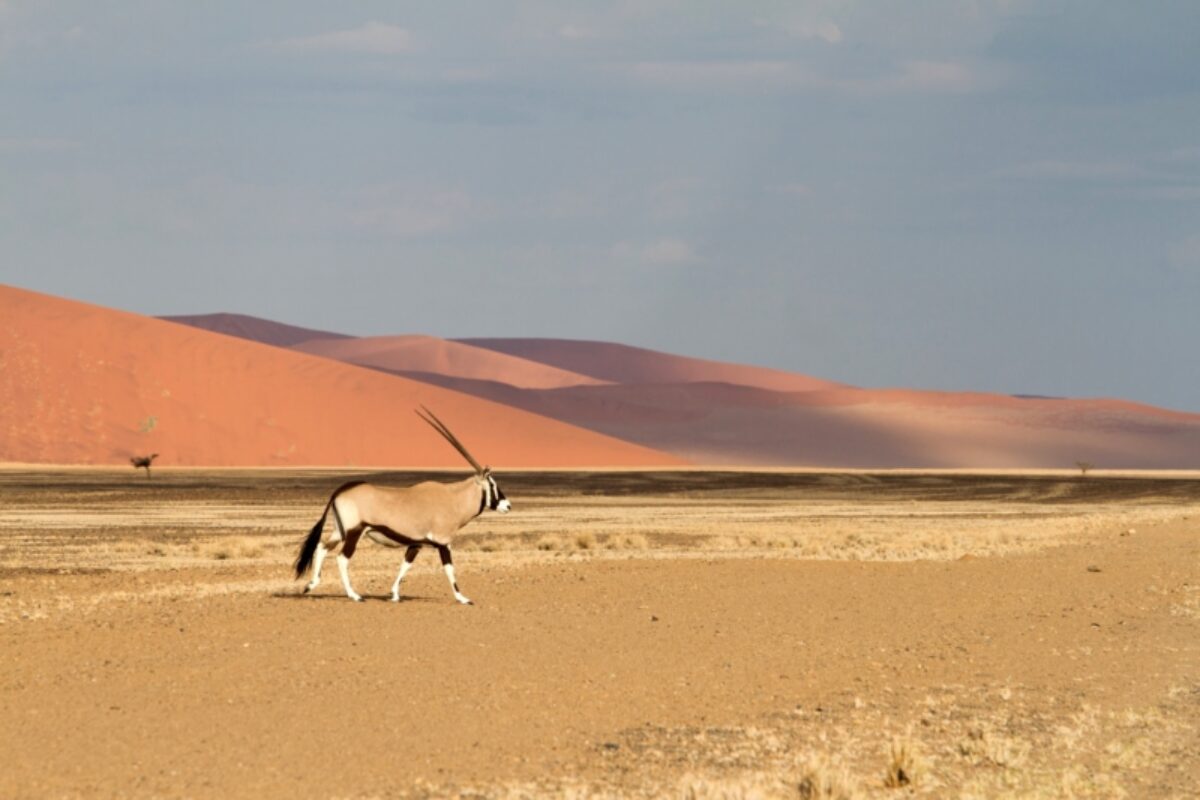
A lone oryx in the vastness of the Sossusvlei clay pans, Namibia
featured namibia safaris
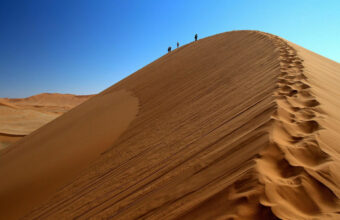

Namibia Unbound
10 day small group tour to the highlights of namibia.
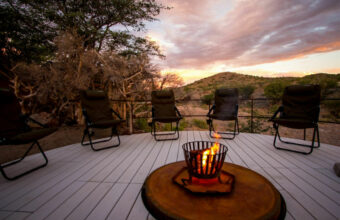
Namibia Under Canvas
10 day small group tour, where to go on safari in namibia, namibia's most popular – and some lesser-known – highlights.
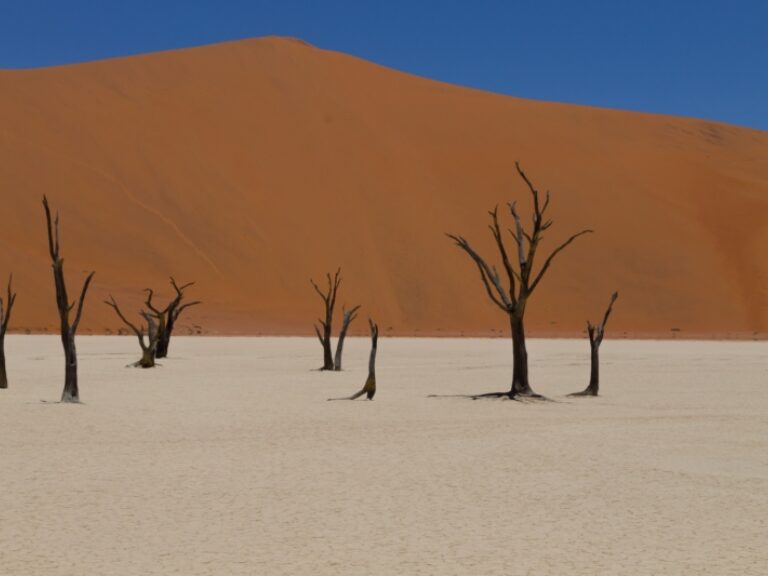
Namib-Naukluft National Park
Hike landscapes straight from a surrealist painting.
Probably my favourite places in all Namibia are the pale clay pans of Sossusvlei and Deadvlei. Set in the sprawling Namib-Naukluft National Park, this is one of Earth's oldest and most captivating deserts.
The odd oryx, springbok antelope and ostrich dot the scrubland but don't expect any big five sightings here, this place is more about unshowy wildlife and its visually arresting landscapes. (For game sightings I’d recommend Namibrand or Etosha instead.) Here you'll find a surreal playground of towering dunes in ombre spice-coloured shades, from paprika to turmeric to cinnamon and hauntingly beautiful fossil valleys.
As you venture deeper into the park, you can get out of the vehicle and touch the sands. Come at dawn, and you'll feel the mist from the Atlantic Ocean settling on your arm as you climb the dunes, before it dries out in the warming morning sun.
There are no adventure activities like sand boarding on offer here, it's about climbing the sand dunes (in designated areas), ambling across the pans, and stopping for a picnic to soak up the scenery.
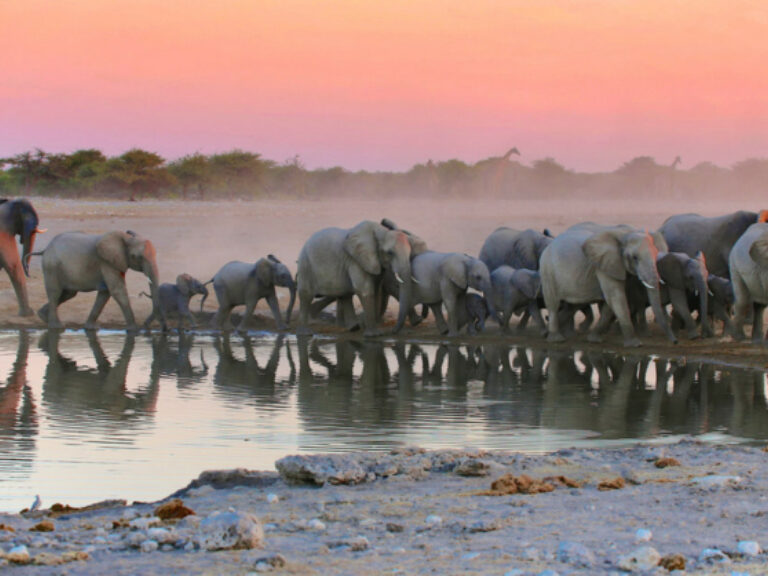
Etosha National Park
Namibia’s most famous safari park.
Its name means 'the empty place' but with Namibia's highest concentration of wildlife, Etosha is anything but empty of safari sightings – the only big five animal not found here is the Cape buffalo.
Etosha National Park is well-known for its waterholes, best visited during the dry season when wildlife flocks to these oases dotted throughout the park. In Etosha I have spotted lions chasing springbok, dozens of bird species (including many pairs of elegant blue cranes), imposing white-crusted elephants, oryx herds, giraffes, and much more. But the real safari treat is to sit still. Pack a picnic and spend some time at the waterhole to appreciate the astounding diversity and density of the game.
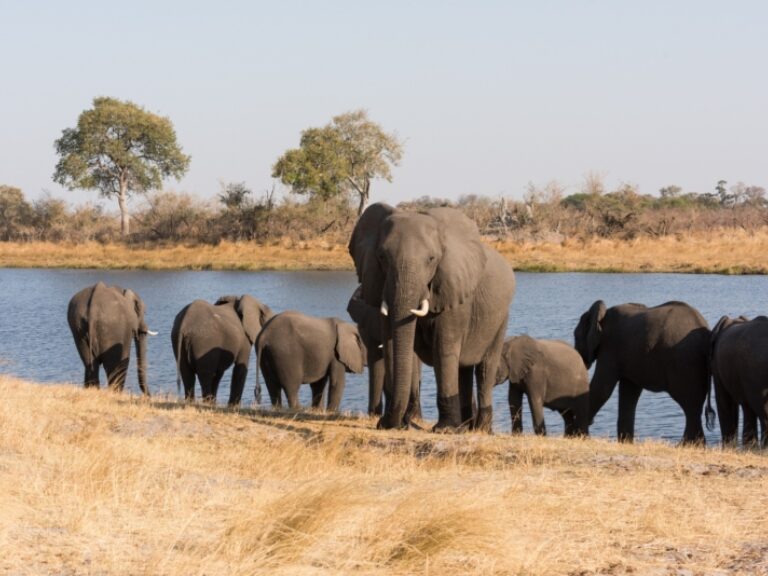
Bwabwata National Park
Namibia’s safari hidden gem.
Escape the mainstream safari itineraries at Bwabwata National Park. Often overlooked in favour of Namibia’s more famous safari parks, I like to think of this area as a more affordable Okavango Delta .
With lush landscapes and riverine forests, the wetlands of the Zambezi Region (formerly known as the Caprivi Strip) in northernmost Namibia offer a striking comparison to the stark coastline and desert interior. It's part of the Kavango-Zambezi Transfrontier Conservation Area, covering an area of 444,000 square kilometres. Bwabwata National Park sits at the heart of this region and is home to hippos, crocodiles, roan, sable, impala and red lechwe, and lions and leopards. The Buffalo Core Area is notable for its buffalo herds in the east. The Kwando Core Area to the west is primarily known for its elephants and sometimes African wild dogs pass through.
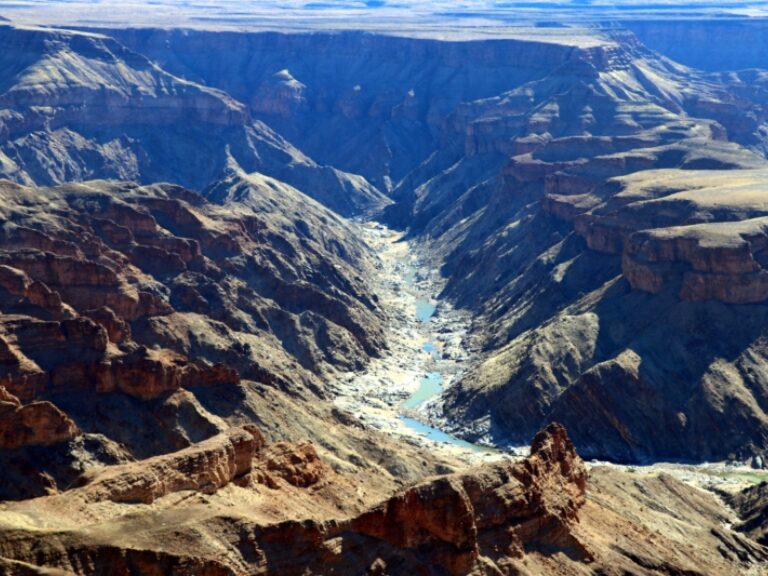
ǀAi-ǀAis/Richtersveld Transfrontier Park
Trek the iconic fish river canyon.
Namibia's Fish River Canyon is a staggering geological masterpiece in the /Ai-/Ais Richtersveld Transfrontier Park, shared by Namibia and South Africa.
The main viewpoint and information centre are worth a visit for an epic sunset if it's on your route, but to truly escape the tourists, your best bet is to embark on the epic five-day trek along the canyon floor. Sights in this area include quiver trees and cute klipspringer antelopes. It's a straightforward trek as you can’t leave the canyon walls, but you’ll be totally self-sufficient and it’s not to be underestimated – I had a friend who had to be helicoptered out due to heat exhaustion and dehydration. An organised trek accompanied with a guide is recommended, if not essential.
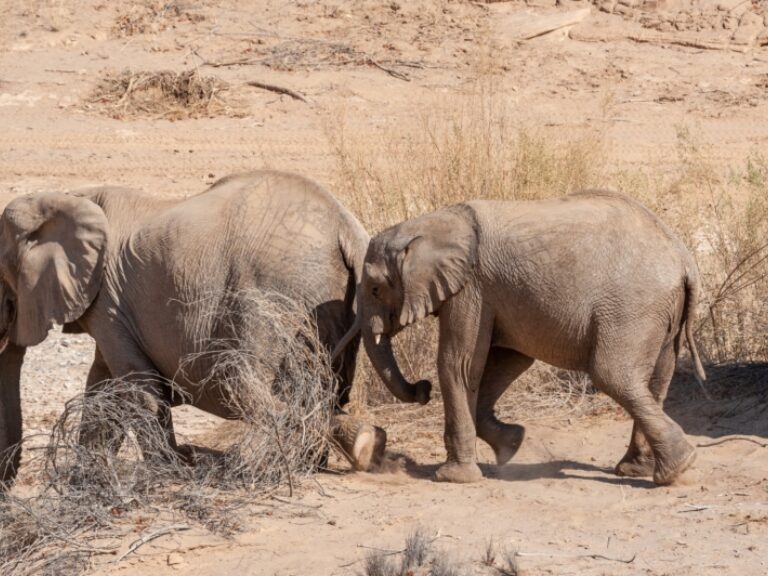
See Namibia’s rare desert dwelling elephants
You might only see a few animals here, but tracking Damaraland's desert-dwelling wildlife is a highlight in this fascinating region sandwiched between Etosha National Park and the Skeleton Coast.
Desert-adapted elephants, rhinos, and lions roam rocky terrains, dry riverbeds, and gravel plains dotted with the weird, twisted welwitschia mirabilis plants.
Although it can be challenging to see the wildlife here, I find this scarcity makes each sighting all the more memorable. Spotting one elephant in the desert is somehow more special than seeing an entire herd in a lush reserve.
Desert-dwelling elephants are considered an endangered subspecies and occur in five rivers usually devoid of water: the Ugab, Huab, Uniab, Hoanib and Hoarisib. These elephants have larger feet to walk on sand and travel in smaller herds. They only need to drink once every few days, using their long trunks to dig for water in the dry river beds.
Also here is Twyfelfontein, home to one of Africa's most significant collections of rock art, with over 2,500 engravings dating back some 6,000 years.
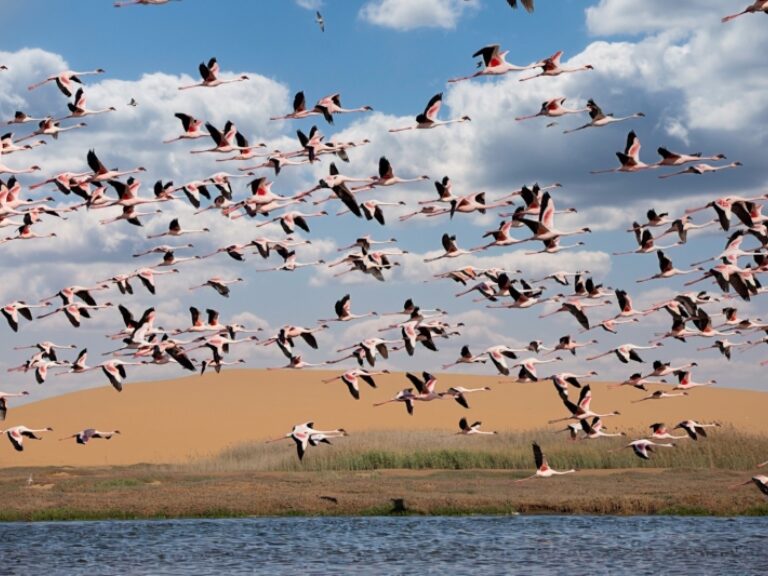
Birding on the Atlantic Coast
Although more industrial, these coastal towns harbour great wildlife opportunities coupled with creature comforts (don’t miss oysters and cold Namibian beers from the seaside restaurants in Swakopmund).
The expansive tidal lagoon south of Walvis Bay is primarily a birding attraction, hosting thousands of flamingos, pelicans and cormorants. Boat tours along the coast also provide a front-row seat to colonies of seals, and sometimes dolphins cruise the bow waves.
Inland, you can walk the coastal dunes searching for desert critters, such as the comical palmato gecko with its transparent skin, beautiful colours, and sand-disguised sidewinding snakes.
Namibia’s safari highlights
Our expert's top picks.
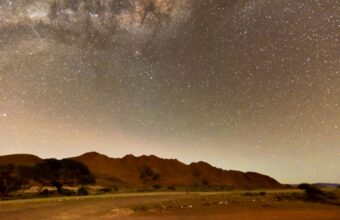
NamibRand Nature Reserve
Stargazing and walking safari in namibrand.
If you have the bucks, the NamibRand Nature Reserve is where I like to escape the masses that can crowd Sesriem at the entrance to Namib-Naukluft National Park. There are luxury lodges here, such as Kwessi Dunes or &Beyond Sossusvlei Desert Lodge, which are well-regarded if pricey. I prefer the organised overnight walking safaris: light pollution is minimal here and the skies are among the darkest and clearest on earth. Immersed in the silence of the desert darkness, I experience a humbling connection to the cosmos.
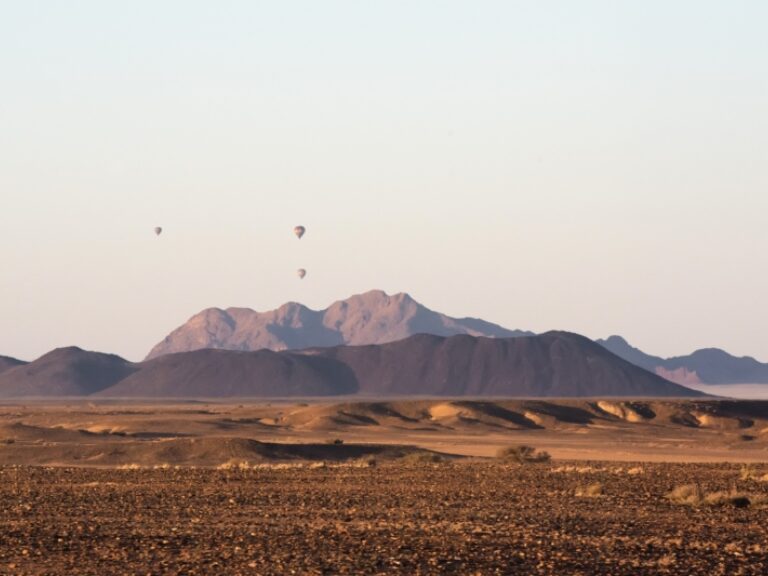
Balloon ride over the Namib Desert
While you might be disappointed that the balloon doesn't actually cross over the Sossusvlei or Deadvlei claypans, there is freedom in being beholden to the desert winds. Dramatic views from a balloon basket offer an eerie sense of the vastness and solitude of the Namib Desert, evoking a deep appreciation for this untouched wilderness. We even spotted a brown hyena scuttling across the sands below during my flight. Be prepared for a rudely early wake-up call. It's best to stay close to the launch site at Kulala Desert Lodge, or the kitschy Le Mirage Desert Lodge and Spa.
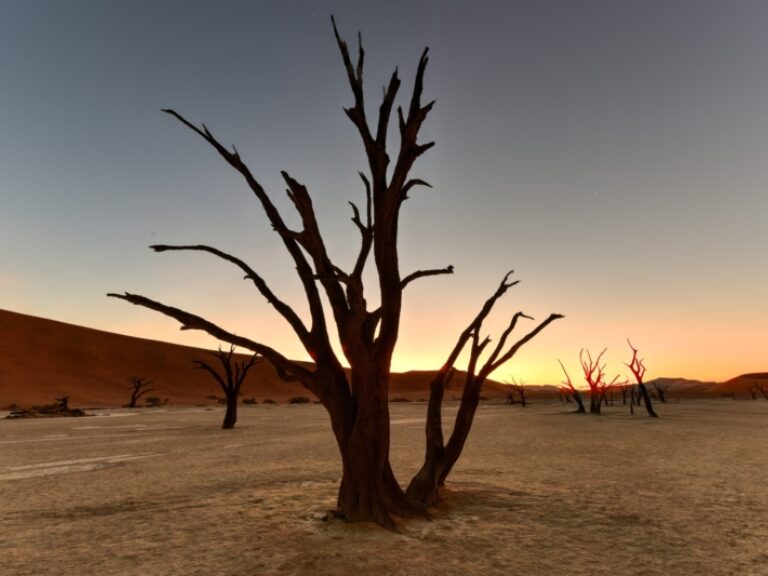
Wake early for sunrise at Deadvlei
The Sesriem junction is the starting point for trips to the Sossusvlei and Deadvlei claypans. To experience sunrise (or sunset), beat the heat and get ahead of the crowds, spend the night at one of two lodges located within the park gates (Sossus Dune Lodge and the pricier, more private Kulala Desert Lodge). Alternatively camp at the very basic Sesriem Camp for the perk of an hour-early entry to the park. It's a 60-kilometre drive to the Sossusvlei and Deadvlei sites (many visitors stop at Dune 45 instead, but I recommend you forge on). Deadvlei is then a further one-kilometre hike from the car park (not everyone is fit enough for this trek, especially in peak sunshine) and is where you can climb the spine of the Big Daddy Dune.

Watch migrating elephants
Bwabwata National Park has limited accessibility and few self-drive routes, but the wildlife is no less dramatic than other popular parks.
My favourite area is Horseshoe Bend in the Mayuni Conservancy zone, with its abundant plains animals. Elephants congregate here in their hundreds on their migration route between May and September, and it's where I snapped my first magazine cover shot. Nambwa Campsite and Nambwa Lodge (a treetop stay with high walkways for elephants to wander freely below) are the nearest accommodations.
The park can get busy in peak seasons, impacting the sense of wilderness. Also, consider exploring the less-visited Nkasa Rupara National Park nearby.
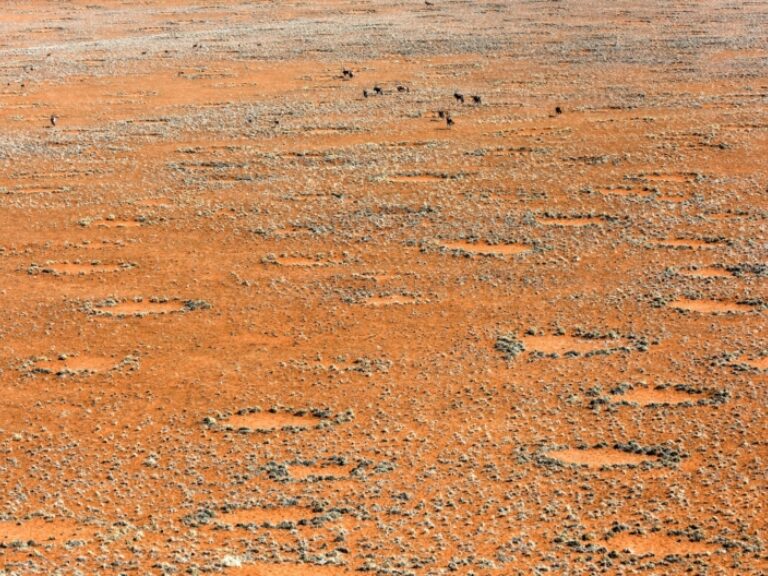
Horse ride (or ebike) past fairy circles at Wolwedans
Wolwedans is one of the most established lodge collections in the country, with enviable locations dotted across the NamibRand Nature Reserve. I loved how committed this operation is to treading lightly, and I had tremendous fun gliding along, up and down, over the dunes of the Namib Desert by horseback and bike.
Whether a flat-out gallop or a sedate trek, all levels of riders are welcome to wind between the “fairy circles”, mysterious barren patches amid the desert flora that have long perplexed scientists. Theories range from plant self-organisation to toxins from euphorbia bushes. Still, my favourite story is the Himba explanation that they are the footprints of Mukuru, their supreme being.
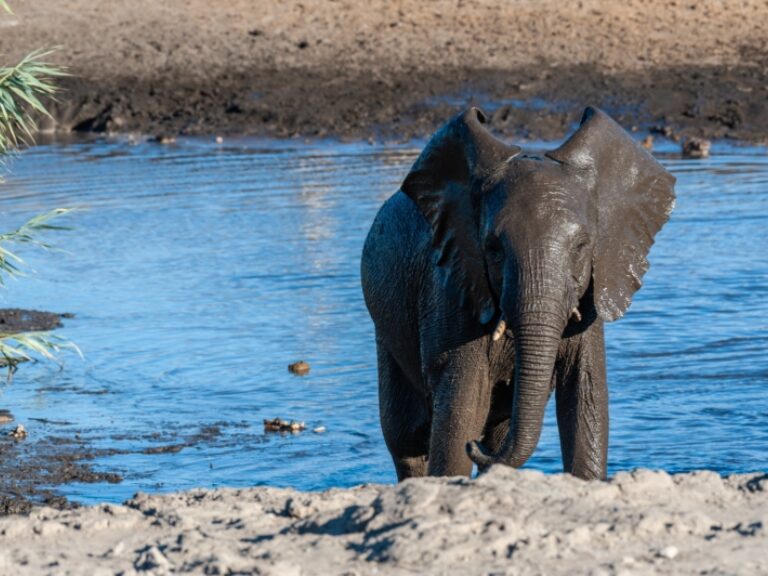
Spy on elephants at the waterhole
Etosha's waterholes provide an excellent David Attenborough-worthy opportunity to witness wild animals up close. Watch elephants slake their thirst under the scorching sun or detect the sounds of rustling leaves and animal calls as giraffes, zebra and impala tentatively gather during the evening.
The Okakuejo's floodlit waterhole is a great spot to glimpse the critically endangered black rhino.
I recommend you book accommodation in advance during peak season, weekends, and festive December. Alternatively, visit during the wet season when the landscape is greener, but water availability causes animals to disperse.
Etosha is surrounded by other private game reserves and luxurious places to stay, including Anderssons at Ongava (I have my heart set on visiting the Ongava Discovery Centre next) and Onguma Camp Kala.
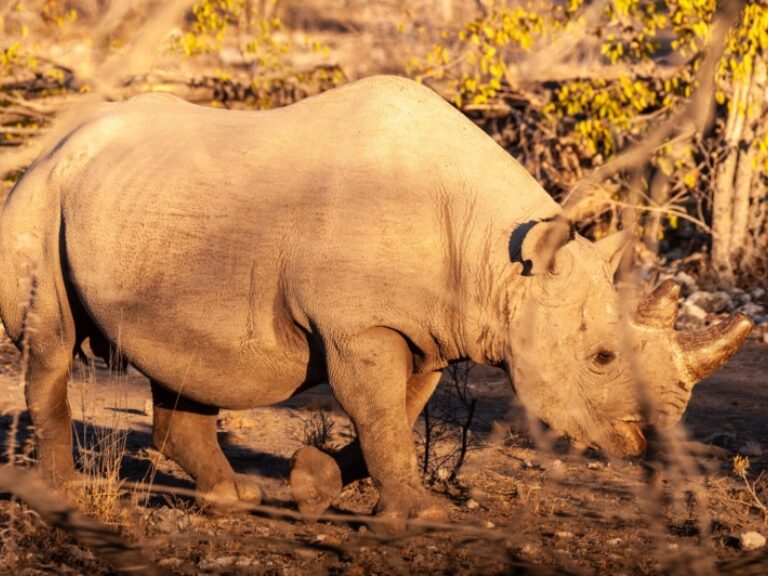
Track the critically endangered black rhino
Head out on a game drive or an immersive (though sometimes hot and long) walking safari to track the world's last remaining free-roaming population of the critically endangered black rhino.
I always find Rhino tracking a heart-pounding adventure. A dance of anticipation and caution as you trek the rugged landscape. Palmwag Concession is the best area, and top sightings generally occur between April and November, but stay at least two days to up your chances of seeing the rare animals.
Well established, the Desert Rhino Camp is high-end, but Damaraland Camp, Camel Top Community Campsite, Palmwag Lodge and Sesfontein Guesthouse are affordable alternatives.

Learn about the living desert
So many people visit the iconic dunes of Sossusvlei but don't notice the phenomenal creatures that eke out an existence in this extraordinary landscape. Unlike other deserts, critical ocean mists feed the Namib sands and sustain fog-sipping beetles, nude-coated lizards and handsome snakes that bury themselves in the sand. They’re tricky to find by yourself, so get a guide to share their tips and tricks for seeking out the small stuff.
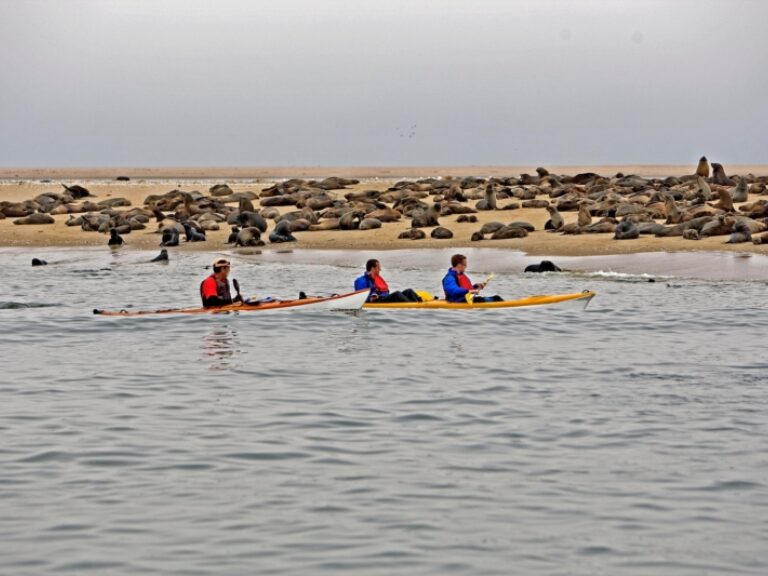
Sea kayak with seals
Enjoy a unique desert sea safari by kayaking amidst playful marine companions. Departing in the morning when the waters are calm, this three-hour tour has you paddling towards the Walvis Bay Cape fur seal colony, where it's common for them to swim close and sometimes even hop onto the ends of the kayaks! I also spotted dolphins, pelicans, flamingos, and Damara terns on the Pelican Point sandbar. Be sure to dress warmly. If kayaking isn't your thing, you can also opt for sedate boat tours.
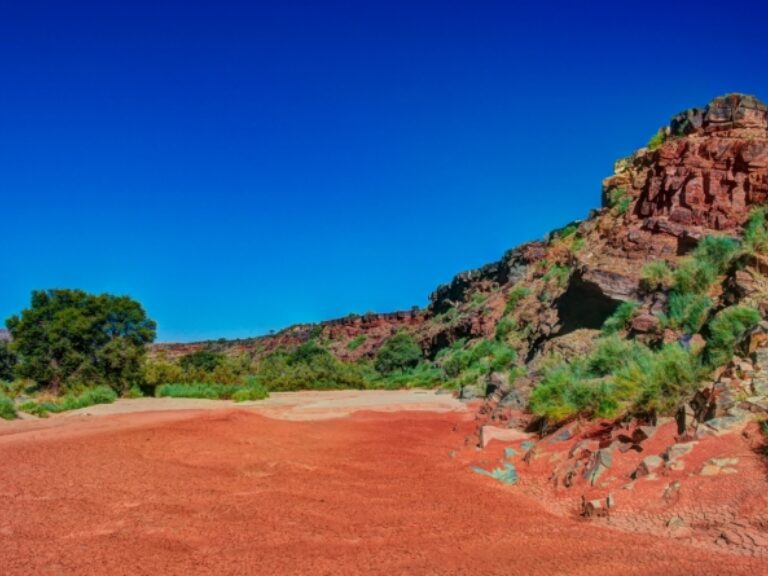
Gondwana Namib Park
Retreat to the desert whisper pod.
Perched on the rim of a gravel-strewn hill, a 4X4 abandoned me at a remote villa in Gondwana Namib Park. This secluded stay feels like a Mad Max spaceship landed in the middle of nowhere. Designed for couples as a one-of-a-kind honeymoon hideaway, the open-plan apartment has a pool, plush reading lounge, and cocktail nook. The view – and everything besides – is yours alone, with nobody else for miles around. There are few places where you are left entirely to your own devices. Enjoy the breathtaking perspective and soak up the silence.
Namibia safaris: Need to know
Everything you wish you'd known before you booked, when to go on safari in namibia.
Namibia has diverse landscapes that shine at different times of the year. Typically, the best time for wildlife viewing is the dry season (May to October), while the wet season (November to April) transforms the desert into a blooming wonderland ideal for photographers and birdwatchers.
You can of course book an organised tour of Namibia with any number of safari operators. The standard itineraries typically include Etosha, the Sossusvlei claypans, Swakopmund and the Fish River Canyon. There are a few advantages of booking an organised tour, not least convenience and the extra reassurance of help and support while you navigate an unfamiliar country.
That said I’d encourage more independently-minded visitors to consider a self-drive trip. This way you can get well off the standardised itineraries and spend as long as you like in some of Namibia’s hidden gems mentioned in this guide. You can rent a 4X4 in Windhoek or Walvis Bay, and book your own accommodation directly. Hotels and lodges generally offer their own guided excursions and tours (for an additional fee.) But don't rush: fight the urge to cram too many sights into a short trip, or your trip will be exhausting. And be prepared for the challenge of driving. The distances between the various safari areas and national parks are huge, but the roads are often decent gravel. Plan a buffer day into your itinerary in case something goes wrong with the vehicle and ensure you have sufficient fuel. Some routes are 300 to 400 kilometres without gas stations. In my experience, most rental companies have great insight, so ask away! They will know the best routes and ask if they offer satellite phone rental or emergency assistance.
About the author
Melanie is a travel photojournalist and guidebook author based in Johannesburg. A qualified field guide, scuba diver and budding birdwatcher, she is an expert contributor on Southern Africa and has written for Lonely Planet, Travel+Leisure, Condé Nast Traveller and Fodor's, and photographed some of the continent's beloved travel lodges.
Featured tours
Other guides you might like, safari in kenya, kenya's best safari reserves and camps.
Stuart Butler
South africa safari, an expert guide to safaris in south africa.
Anthony Ham
Wildebeest migration safaris, an essential guide to planning a migration safari in tanzania and kenya.
Hans Cosmas Ngoteya
Safari in zambia, an expert guide to zambia's best safari parks, camps & lodges.
Sarah Kingdom
Safari in tanzania, an expert guide to tanzania's best safari parks & camps, safari in botswana, an expert guide to botswana's best safari reserves, camps and experiences, where and how to see the big 5 on safari in africa, safari in africa, our travel writers' top africa safari picks, zimbabwe safaris, an expert guide to the best safari camps in zimbabwe, chimpanzee trekking, an expert guide to seeing chimpanzees in the wild.
Philip Briggs
Featured tours view all.
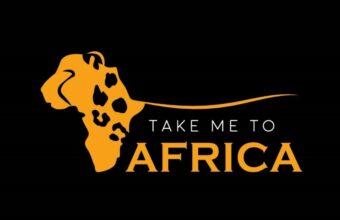
Why Horizon Guides?

Impartial travel guides
Our guides are written by the leading experts in their destinations. We never take payment for positive coverage so you can count on us for impartial travel advice.

Expert itineraries
Suggested itineraries and routes to help you scratch beneath the surface, avoid the tourist traps, and plan an authentic, responsible and enjoyable journey.

Specialist advice
Get friendly, expert travel advice and custom itineraries from some of the world's best tour operators, with no spam, pressure or commitment to book.
Our guides are 100% impartial and are written by independent, professional travel journalists. We make money by charging carefully-screened travel companies to list their business on our website. Our advertisers have no influence on our editorial content and we never accept payment for positive coverage.
Read more about how we work and what we believe in here .
- Travel guides
- Work with us
Sitemap , Privacy Copyright © 2024 Horizon Guides
Our local experts can design your trip based on your preferences
Warning - You are using an outdated browser. Please upgrade your browser to properly view this website.

- Destinations
- Africa middle east
- Travel guide
Namibia travel guide
Named for the ancient desert that stretches the length of its Atlantic coast and dominated by thousands of square miles of sand and rock, Namibia has a landscape that is always extreme.

Introduction to Namibia
What can explain the harmony that prevails in Namibia today, given that the population consists of at least 11 major ethnic groupings and an even greater variety of languages? The reason may be that – despite a century of ruthless colonialism, decades of apartheid and a bitter struggle for independence – the majority of ordinary people always stood together, working and suffering as one, mingling on farms and in small towns, sharing the bitter and the sweet.
The Europeans conquered Africa with their languages, religions, education, technology and agricultural know-how, but a barrier of deep mistrust remained between the indigenous inhabitants and their conquerors. As one might expect, 23 years of occupation by apartheid South Africa singularly failed to resolve the situation – yet the independence struggles of the 1970s and 1980s somehow managed to bring white and black Namibians together.
The Namibians
Namibia’s population is as varied as its landscape: colourful and rich in different languages and lifestyles. The peoples of this thinly populated expanse of land – which ranges from the river landscapes of the Caprivi Strip, through dry forests and savannahs, to the deserts along the Atlantic – have been compared to a colourful carpet, with fringes that reach deep into the countries around it. This young country combines a palette of peoples and tribes in a geographical area whose borders were drawn through tribal lands between 1884 and 1890 to suit the interests of colonial powers. As a result, many peoples were thrown together in what was to develop into the modern state of Namibia.
Today the country possesses a political system based on sound democratic principles, with great regard for the origins, language, culture, religion and political convictions of all its peoples. And the bonhomie that has taken root among the people of Namibia is readily communicated to visitors, too.
Namibia's landscape
Shimmering expanses of white at Etosha Pan, apricot and coral dunes in the Namib desert, verdant waterways of the Caprivi, empty, bleached beaches along the Skeleton Coast, barren terracotta mountains in Damaraland, ochre rock faces of the Fish River Canyon and cloudless azure skies all paint vivid, lasting impressions of the Namibian landscape. The country is big, raw, wild and often bleak. There’s an overwhelming feeling of space, timelessness and distant horizons. It’s a desert land of extremes, where even during the winter months, between April and October, temperatures are known to regularly soar to 30°C (86°F) during the middle of the day, dropping to near freezing at night.
Wildlife viewing against this backdrop is a very different experience from other safari destinations in Africa. What makes Namibia particularly special is the number of large mammals found in a desert environment, and the fact that the animals are not restricted to designated parks.
Average customers rating

{{_ "pagesAdmin.destinations.overviewCulturalFeaturesIn"}} {{currentName}}
{{_ "pagesAdmin.destinations.overviewViewAllFeatures"}} {{currentName}}
{{_ "pagesAdmin.destinations.overviewHistoricalHighlights"}} {{currentName}}
{{_ "pagesAdmin.destinations.overviewViewAllHighlights"}} {{currentName}}
Places to visit in Namibia
- Etosha national park
- The skeleton coast
See all places in Namibia
Read more from the travel guide to Namibia
- Top attractions
- Plan your trip

Insight Guides Namibia
Insight Guide to Namibia is a pictorial travel guide in a magazine style providing answers to the key questions before or during your trip: deciding when to go to Namibia, choosing what to see, from exploring The Skeleton Coast to discovering the Etosha National Park or creating a travel plan to cover key places like Sossusvlei, Fish River Canyon. This is an ideal travel guide for travellers seeking inspiration, in-depth cultural and historical information about Namibia as well as a great selection of places to see during your trip.
The Insight Guide Namibia covers: Windhoek, Central Namibia, Northern Namibia, Etosha National Park, The Caprivi, Northwest Namibia, The Skeleton Coast, Swakopmund and Walvis Bay, Namib-Naukluft National Park, Southern Namibia.
In this travel guide you will find:
IN-DEPTH CULTURAL AND HISTORICAL FEATURES
Created to explore the culture and the history of Namibia to get a greater understanding of its modern-day life, people and politics.
The top attractions and Editor’s Choice highlighting the most special places to visit around Namibia.
CURATED PLACES, HIGH-QUALITY MAPS
Geographically organised text cross-referenced against full-colour, high-quality travel maps for quick orientation in Windhoek, Namib and many more locations in Namibia.
COLOUR-CODED CHAPTERS
Every part of Namibia, from Central Namibia to Lüderitz has its own colour assigned for easy navigation.
TIPS AND FACTS
Up-to-date historical timeline and in-depth cultural background to Namibia as well as an introduction to Namibia’s food and drink and fun destination-specific features.
PRACTICAL TRAVEL INFORMATION
A-Z of useful advice on everything from when to go to Namibia, how to get there and how to get around, as well as Namibia's climate, advice on tipping, etiquette and more.
STRIKING PICTURES
Features inspirational colour photography, including the stunning Cape Cross and the spectacular Quiver Tree Forest.
Description
Book details.
This title is a part of Insight Guides Main Series
Inspirational, lavishly illustrated travel guides to countries and regions that provide all you need for every step of your journey. With in-depth features on culture and history and stunning colour photography throughout, they are perfect for inspiration as well as a souvenir of your trip, while detailed place chapters and travel tips make it ideal for trip planning.
In-depth coverage of the destination's history, landscapes, wildlife, people and culture, from the arts to sports.
The destination’s top ten attractions and editor’s choice of what to see and do at the beginning of each guide
Practical travel information includes when to go, getting there, getting around, entry requirements, food and drink highlights, and everything you need to know about local culture
Colour-coded chapters travel around each city or region in a highly-readable descriptive style, featuring fascinating historical information as well as detailed information on points of interest, backed up by handy tips on what to look out for when you’re there
Colour-coded detailed maps with key sights marked up by number and corresponding to the places chapters
Beautiful, inspirational full-colour photography throughout brings the destination to life and makes the book a memorable souvenir of a trip
Printed on paper from responsible sources verified to meet FSC’s strict environmental and social standards
Free eBook with each purchased printed guide
Format: 152 x 228mm
Price: £14.99-£18.99 | $22.99-$26.99
Extent: 248–464 pages
BOOK DETAILS
Which payment options can I use in the Insight Guides Shop?
You can pay with credit card : Visa, MasterCard, American Express, and via PayPal .
How can I download my ebook after purchase?
After you purchased an ebook, you will receive an order confirmation email and a separate email with a download link for your ebook. This link is valid for 3 days.
After this period, you can log in to your account and download the ebook (not a complementary free-ebook) from your order list in the section "My Shop Orders" .
Please note : The ebooks available to purchase from Insight Guides online bookshop are typically anywhere between 30MB and 120MB. We recommend that you download your ebook over WiFi or check your data allowance with your mobile network provider to ensure it is sufficient.
How can I contact Insight Guides about a shop order?
You can contact our shop team at "[email protected]".
To help our team reply faster, please copy and use one of the following email subject lines:
- "Book shop: orders, shipping, returns"
- "Website: general usage and technical problems"
- "Guide books: corrections and other questions"
- "Tailor-made travel"
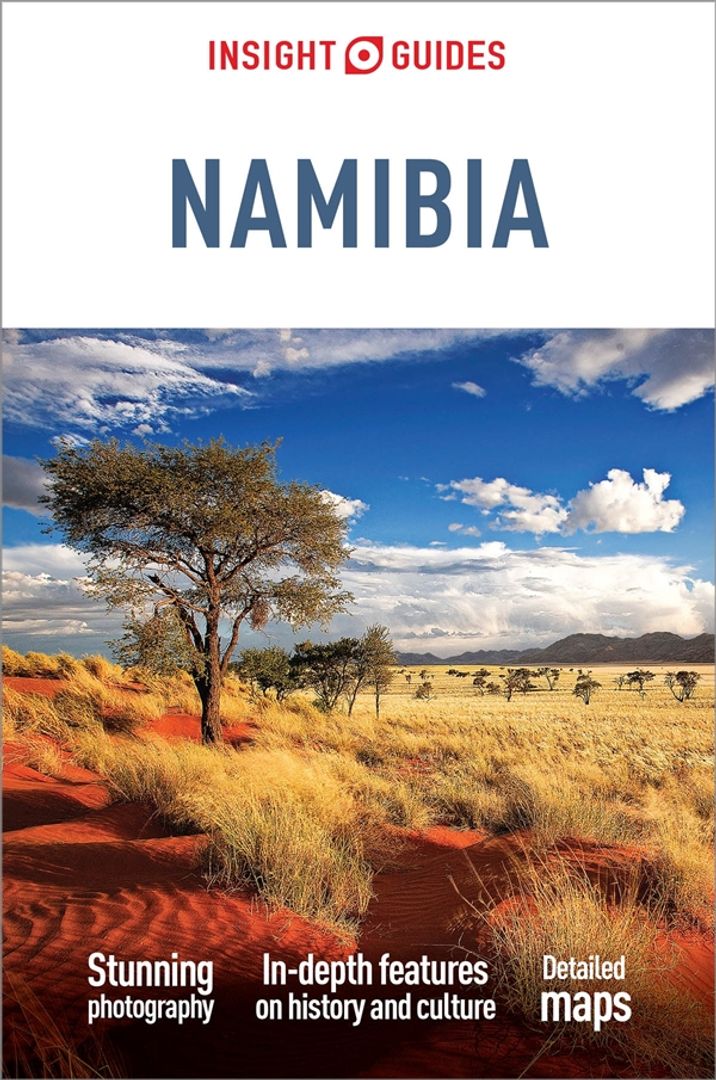
You might also love

The Rough Guide to Namibia with Victoria Falls

Make the Most of Your Time on Earth

The Rough Guide to the 100 Best Places on Earth 2022
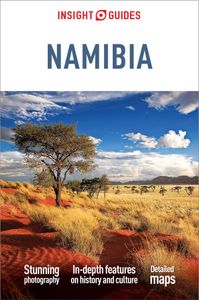
The Rough Guide to Kenya

The Rough Guide to South Africa
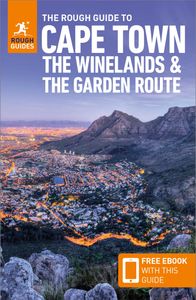
The Rough Guide to Cape Town, Winelands & the Garden Route
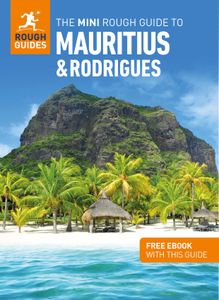
The Mini Rough Guide to Mauritius

Pocket Rough Guide Marrakesh

Insight Guides Cruising & Cruise Ships 2024
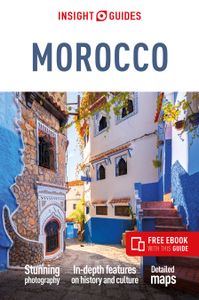
Insight Guides Morocco

The Rough Guide to the A-Z of Travel

Download the free Kindle app and start reading Kindle books instantly on your smartphone, tablet, or computer - no Kindle device required .
Read instantly on your browser with Kindle for Web.
Using your mobile phone camera - scan the code below and download the Kindle app.

Follow the author

Image Unavailable

- To view this video download Flash Player
Insight Guides Namibia (Travel Guide with Free eBook) Paperback – June 1, 2018
Purchase options and add-ons.
- Print length 288 pages
- Language English
- Publisher Insight Guides
- Publication date June 1, 2018
- Dimensions 6 x 0.75 x 9 inches
- ISBN-10 1786717492
- ISBN-13 978-1786717498
- See all details

Frequently bought together

Customers who viewed this item also viewed

Editorial Reviews
About the author, product details.
- Publisher : Insight Guides; 5th edition (June 1, 2018)
- Language : English
- Paperback : 288 pages
- ISBN-10 : 1786717492
- ISBN-13 : 978-1786717498
- Item Weight : 1.16 pounds
- Dimensions : 6 x 0.75 x 9 inches
- #25 in Namibia Travel Guides
- #811 in General Africa Travel Books
About the author
Insight guides.
Insight Guides is a pioneer of full-colour guide books, with almost 50 years' experience of publishing high-quality, visual travel guides with user-friendly, modern design.
We produce around 400 full-colour print guide books and maps, as well as phrase books, picture-packed eBooks and apps to meet different travellers' needs.
Insight Guides' unique combination of beautiful travel photography and focus on history and culture create a unique visual reference and planning tool to inspire your next adventure.
insightguides.com
Customer reviews
Customer Reviews, including Product Star Ratings help customers to learn more about the product and decide whether it is the right product for them.
To calculate the overall star rating and percentage breakdown by star, we don’t use a simple average. Instead, our system considers things like how recent a review is and if the reviewer bought the item on Amazon. It also analyzed reviews to verify trustworthiness.
- Sort reviews by Top reviews Most recent Top reviews
Top reviews from the United States
There was a problem filtering reviews right now. please try again later..
Top reviews from other countries
- Amazon Newsletter
- About Amazon
- Accessibility
- Sustainability
- Press Center
- Investor Relations
- Amazon Devices
- Amazon Science
- Sell on Amazon
- Sell apps on Amazon
- Supply to Amazon
- Protect & Build Your Brand
- Become an Affiliate
- Become a Delivery Driver
- Start a Package Delivery Business
- Advertise Your Products
- Self-Publish with Us
- Become an Amazon Hub Partner
- › See More Ways to Make Money
- Amazon Visa
- Amazon Store Card
- Amazon Secured Card
- Amazon Business Card
- Shop with Points
- Credit Card Marketplace
- Reload Your Balance
- Amazon Currency Converter
- Your Account
- Your Orders
- Shipping Rates & Policies
- Amazon Prime
- Returns & Replacements
- Manage Your Content and Devices
- Recalls and Product Safety Alerts
- Conditions of Use
- Privacy Notice
- Consumer Health Data Privacy Disclosure
- Your Ads Privacy Choices

Namibia Self-Drive Guide Book: Edition 3 (A4)
R 595.00
Our Edition 3 is finally here! Completely revised and updated!
So, what is so special about the Tracks4Africa guide books? These are not guides written by armchair travellers or the personal experience of one person, but the combined experiences of a whole community of travellers. The T4A community travel far and wide – not by luxury bus or safari vehicle but on their own wheels. Sometimes they travel in groups and sometimes as lone rangers, but they always travel by motorbike, sedan or 4WD, therefore this guide is specifically aimed at self-drive travellers.
Our 3rd edition features an atlas section of Namibia, and suggested routes for first time visitors.
If you are a self-drive tourist, there are five things that you need to know when you are on the road: 1. Where to sleep. 2. Where to get fuel. 3. What to see and do. 4. Where to buy supplies. 5. Where to go in case of an emergency.
See all our Namibia Travel Bundles – click here.
Cancellation and Returns Policy.
- Description
Additional Information
- Blogs & Videos
- Look Inside
- Reviews (1)
Product Description
So, what is so special about the tracks4africa guide books.
If you have the Tracks4Africa Self-Drive Guide as your travel companion, the answers to all these and many more questions will be at hand. If you are well prepared and well informed, you can really enjoy the unspoilt beauty of Africa! The Tracks4Africa travel community has shared with you the places and attractions that they really love to visit time and time again.
So what is new in the third edition? Our first and second editions of the self-drive guide books were well received by travellers, but we needed to update our content and we wanted to add in a few extras.
The new books have migrated from A5 to A4 in size. This was done to make space for the new atlas section which features detailed country maps at a scale of 1:1million. The cartography was taken directly from our very popular Tracks4Africa Southern Africa Atlas and we believe that this puts our guide books in a league of their own.
We also had many requests for trip planning and decided to include two suggested itineraries for first time visitors. If you never visited any of these two countries we will give you a great trip plan with map and descriptions as inspiration. For seasoned travellers we retain the detailed information on each destination so they can create DIY trips.
Accommodation and camping were all updated to reflect the latest facilities and contact details and if we could not get hold of a place it did not make it into the book. For community campsites we made mention where we could not update the content, but left them in the book for you to explore.
The two books are again printed on high quality paper and bound in a glossy semi-hard cover which allows you to fold it open without the risk of it breaking up at the seam. We used the same method with our first editions and found that this provides a quality product which is sturdy enough to withstand being used inside the car while travelling.
The two books were edited by none other than Neil Harrison who spend many years as the editor of SA4x4. Neil brings with him a wealth of publication knowledge.
Content covered in the Self-Drive Guides: General information about each country; Safety and precaution; Trip planning; Navigation; Preparing your vehicle for overland travel; Communication; Border post red tape; Veterinary fences and Foot-and-mouth disease; Health; Pitfalls to renting a 4×4 with camping equipment; Things you should not go without.
Namibia travel regions: • Boesmanland • Central Namibia • Damaraland • Erongo • Etosha • Gobabis • Kaokoland • Kavango • Namib-Naukluft • North Namibia • Ovamboland • Skeleton Coast • South Namibia • Sperrgebiet • Zambezi (Caprivi)
Featured under these travel regions are towns or destinations (some are National Parks or Game Reserves). Each town or destination has a general description giving you some background on the town as well as a traveller description. For each of these towns or destinations a wealth of information was researched to answer the kind of questions that a self-drive traveller would ask.
The Namibia Self-Drive Guide lists 342 camping and 657 lodging places to stay . Each of these listings indicates contact details, rate indication, facilities and activities offered. Also, the nearest town with direction, distance and travel time from it, is given.
For both the Namibia and Botswana guides, the table of distance does not only feature distances between towns, but also travel times. Reliable travel times are a unique feature for which Tracks4Africa is well known and is essential information when travelling in Africa.
See what our customers had to say about our 2nd edition:
Francois777 (verified owner) – June 6, 2023
Great product/s. The book is filled with great advise and options for stays and activities, restaurants, etc. I booked several accommodation options based on what I read in the book. My large map is extremely helpful in planning my route and I cannot wait to use the map while we are on tour.
Peter Versfeld (verified owner) – December 14, 2021
We are planning a trip to Namibia and this guide will be invaluable. Full of very useful information on routes and accommodation, in an easy to use and simple layout with great pictures.
Jurgita (verified owner) – October 27, 2020
Love this book. It’s very different from a usual travel book format (e.g. Lonely Planet, etc) – full of pictures, detailed descriptions, maps and tips/recommendations. If you’re an adventurous traveler, highly recommend this book!
Gustav Pienaar (verified owner) – December 25, 2019
A must have for any overlander that wants to visit the beautiful Namibia. All the information needed on each region, and the destinations within each region. A big help for trip planning and places to stay. Highly recommended!
Poenjas (verified owner) – December 24, 2019
Super glad we got this before our Namibia trip. The detailed maps plus the additional information with regards to campsites and parks is super helpful and on hand when out of cell signal. Botswana guide next
Some travel inspiration
Tracks4Africa Suggested Routes – Southern & Central Namibia GPS Routes
Tracks4Africa Mini Series: Jimny 1.3, Micro Overlander | Specs & Upgrades Cape to Etosha Overland
Tracks4Africa – Adventure Trail Finder – Mini Series: EPISODE TWO : Cape – Etosha | Namibia | Jimny
Tracks4Africa – Adventure Trail Finder – Mini Series: EPISODE THREE: Etosha – Cape | South Africa
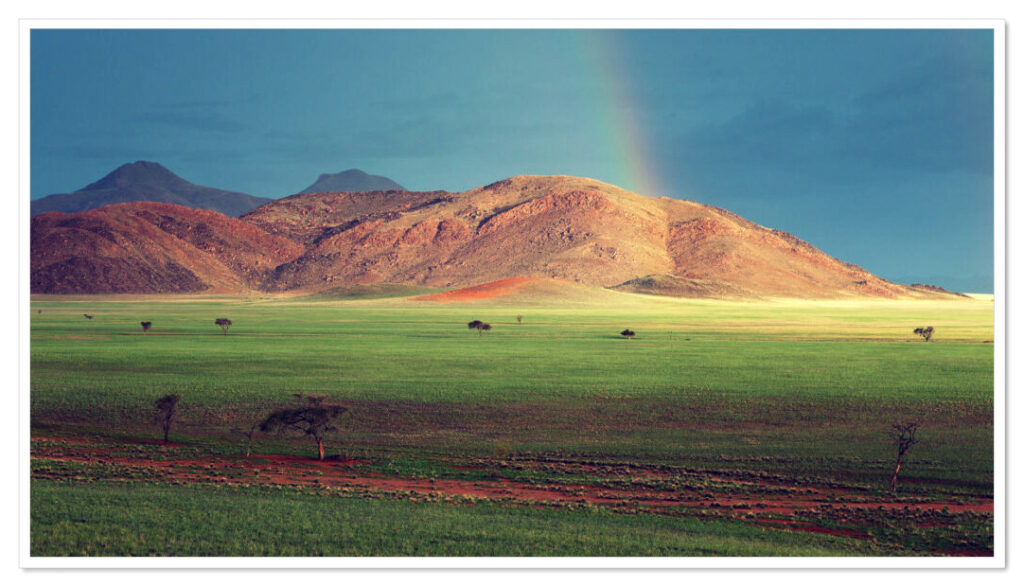
See the Namib Rand like never before
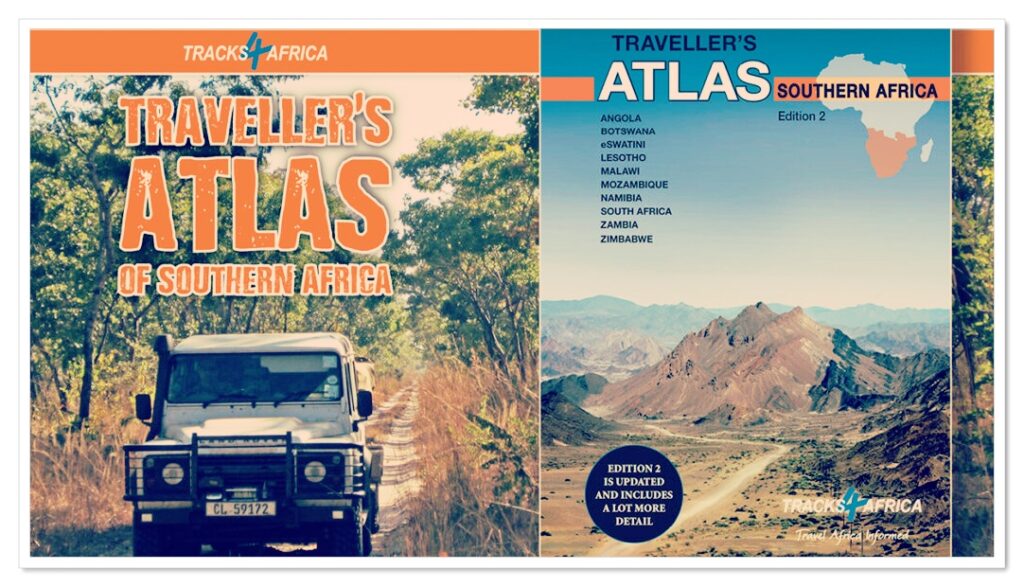
10 Things to love about the new T4A Traveller’s Atlas
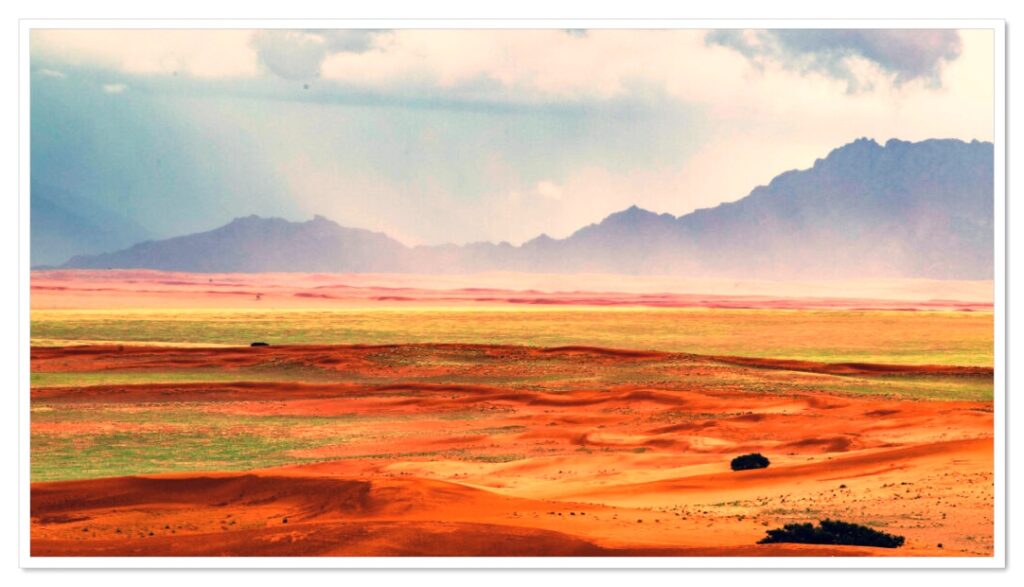
Photo Blog: Southern Namibia after the rains
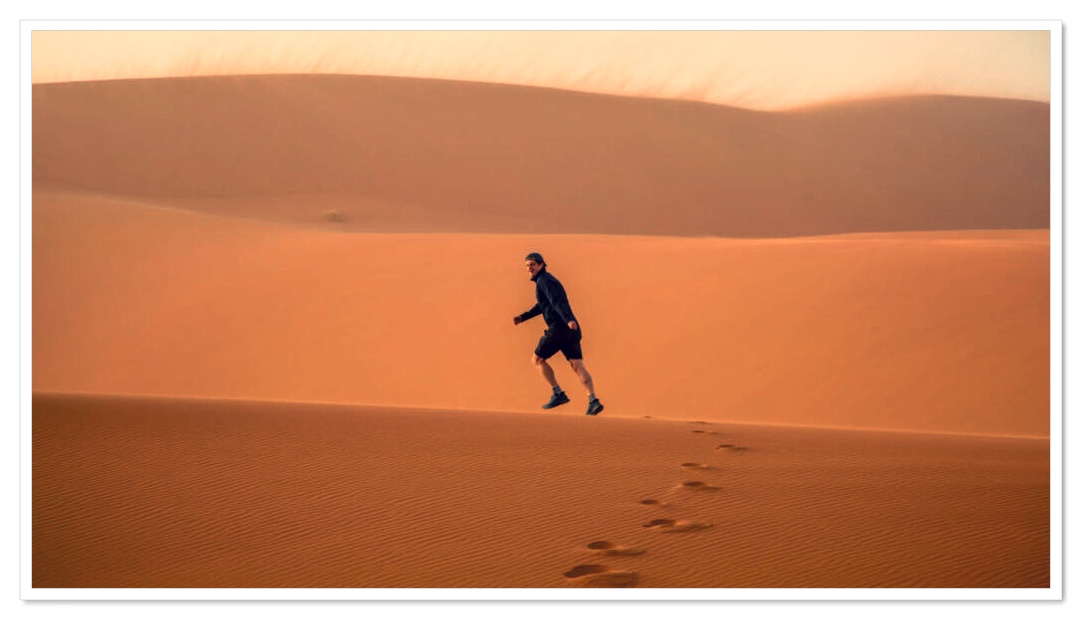
Photo Blog: Exploring Southern Namibia
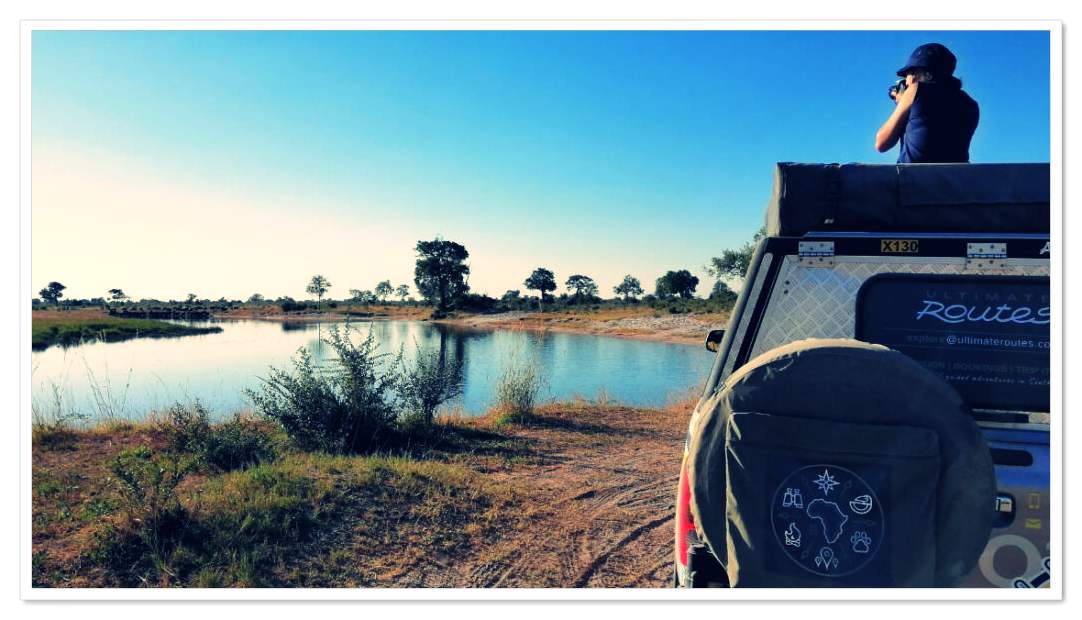
Favourite Camps in Namibia’s Zambezi Region (aka Caprivi)
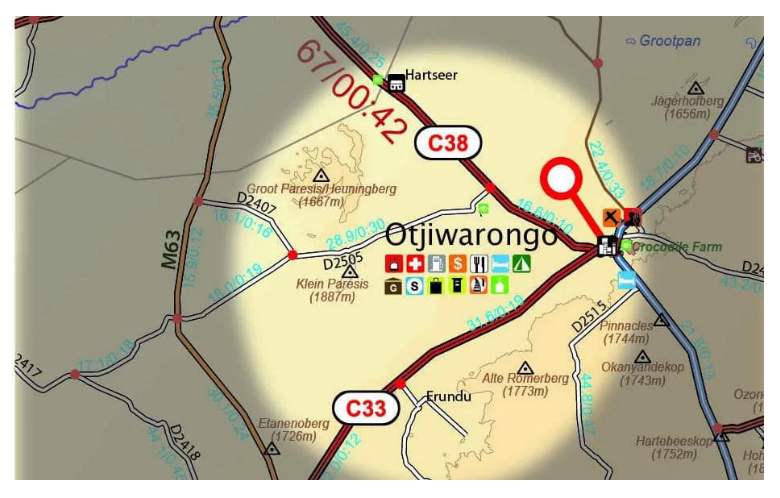
Don’t forget the good old paper map
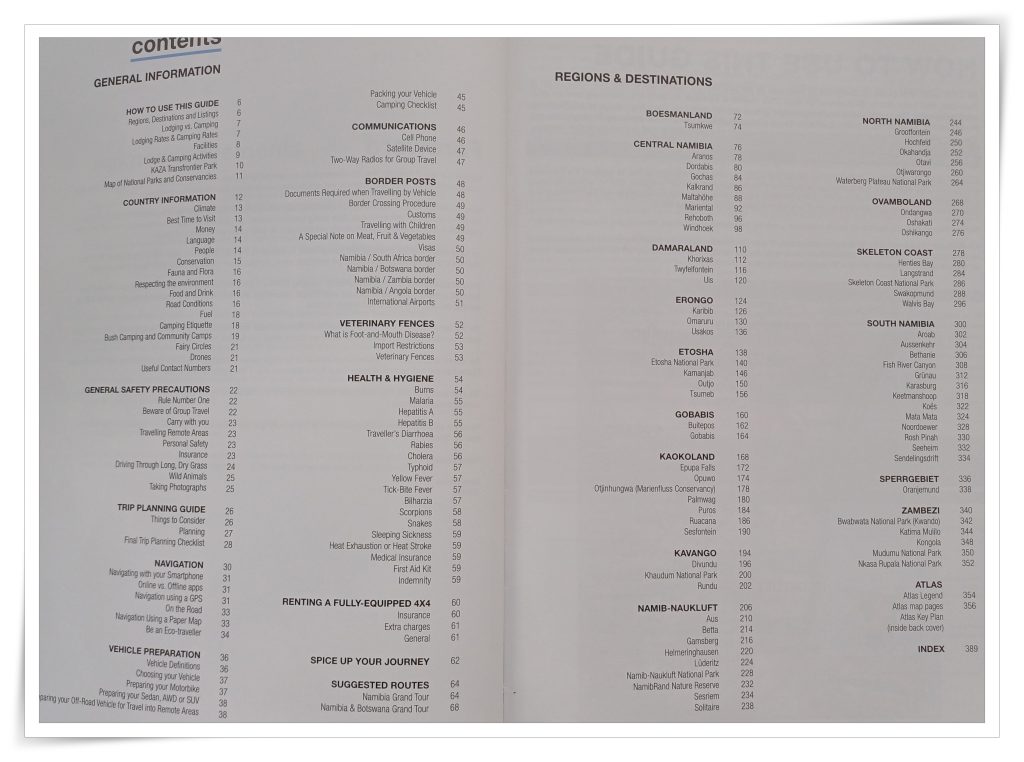
Border Info
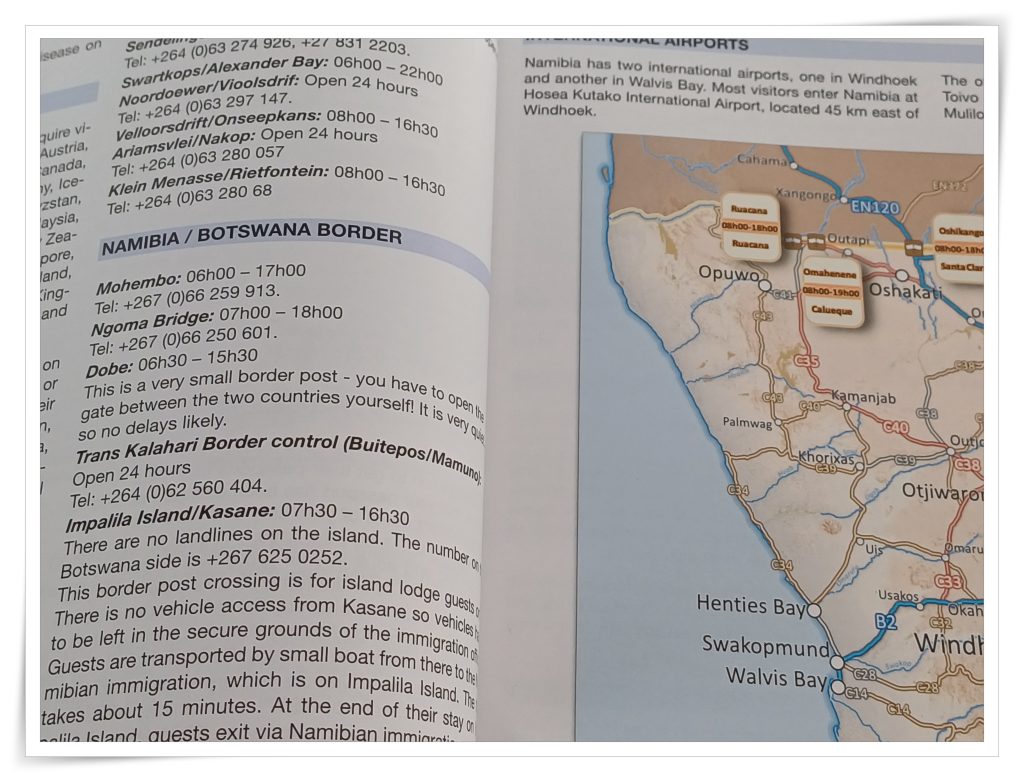
Suggested Routes
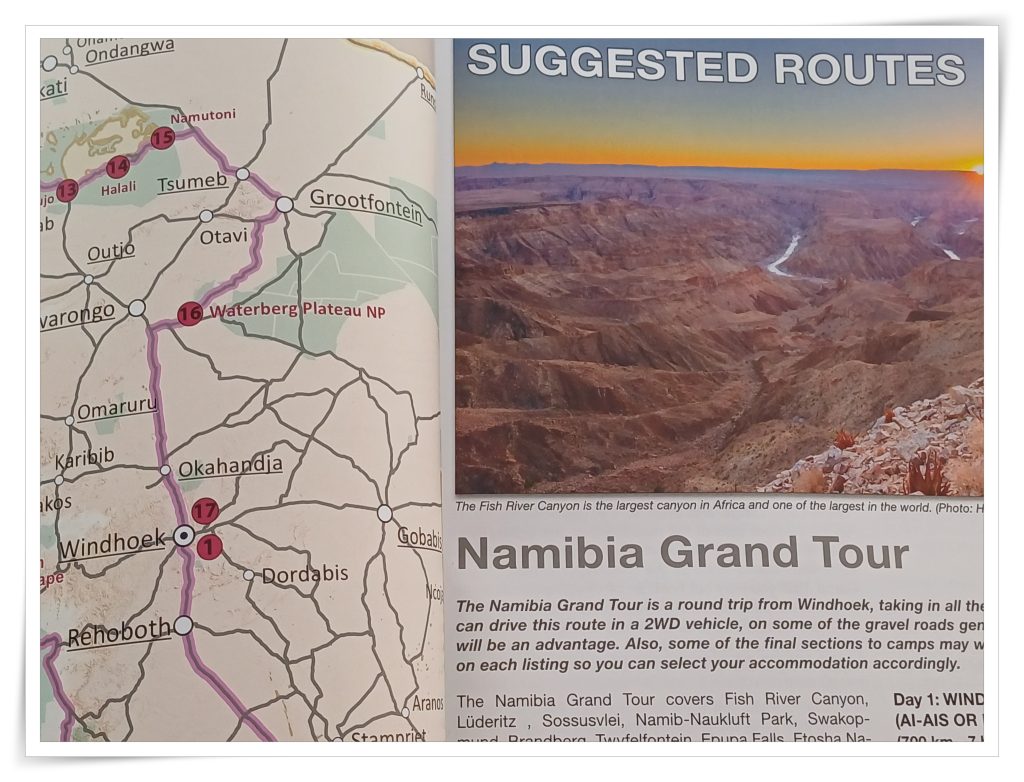
Travel Tips & Maps
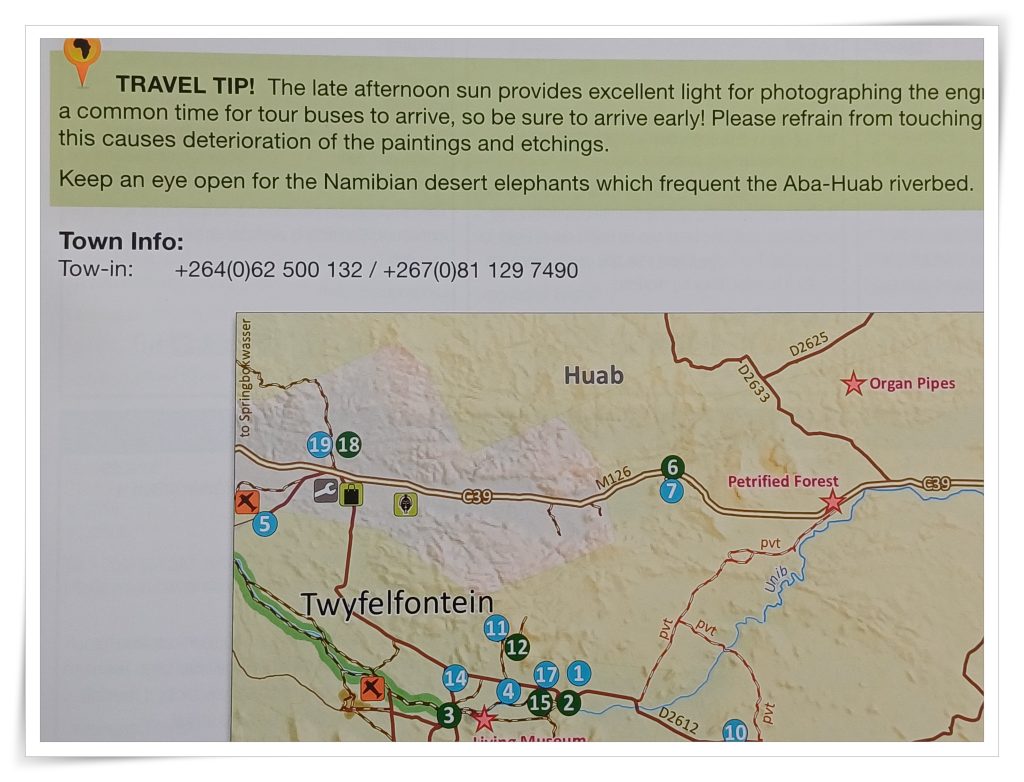
Accommodation Listings & Maps
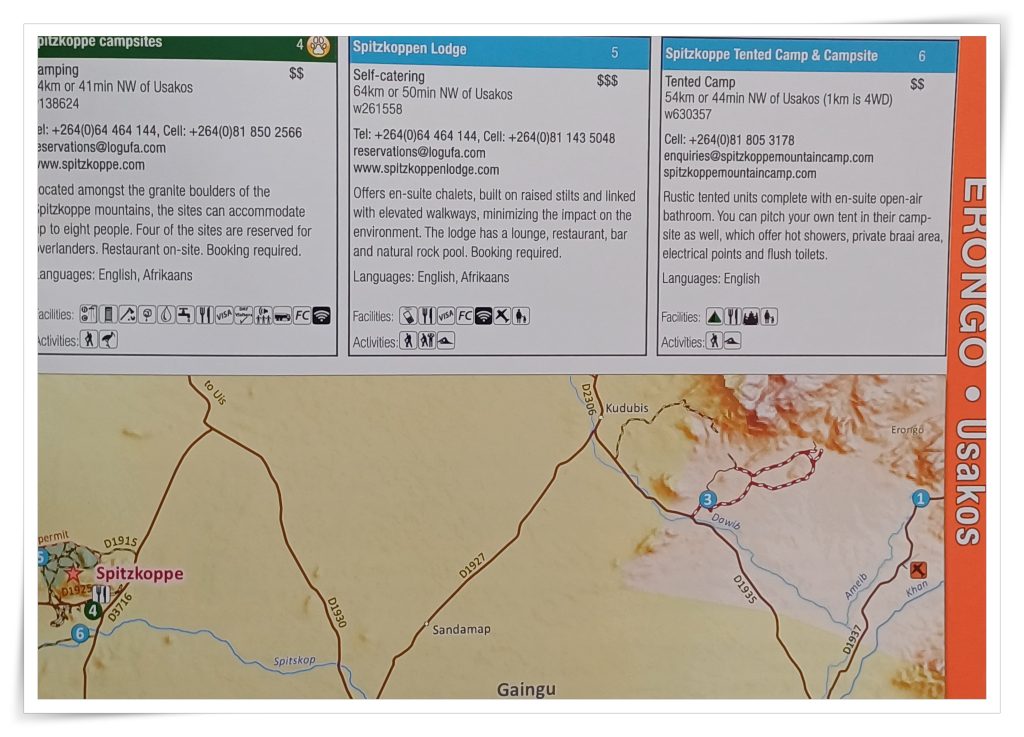
1 review for Namibia Self-Drive Guide Book: Edition 3 (A4)
Tania Basson (verified owner) – April 19, 2024
What an awesome guide!! It covers everything you want to know to make your Namibia trip enjoyable, with information of the different areas, loads of tips and accommodation options! The quality and size of the guide is excellent! Well done Tracks2Africa!!!
Only logged in customers who have purchased this product may leave a review.
Related products
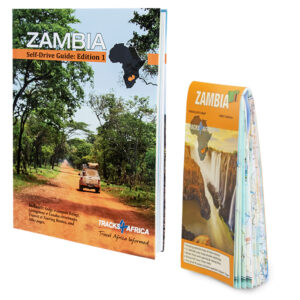
Zambia Travel Bundle
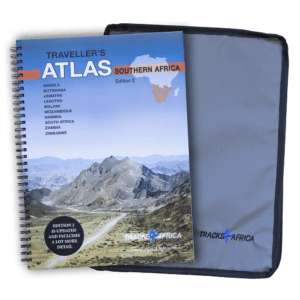
Traveller’s Atlas Southern Africa (Edition 2) (A3) (Plus Canvas Cover)
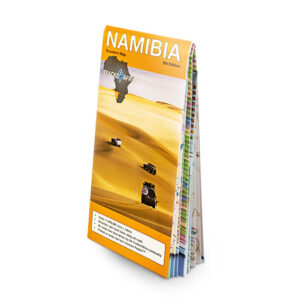
Namibia Traveller’s Paper Map 5th Edition
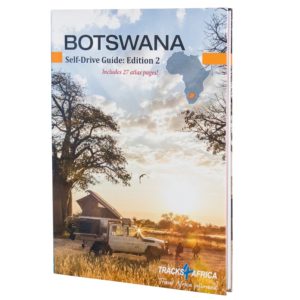
Botswana Self-Drive Guide Book: Edition 2 (A4)
Our latest GPS maps on SD Card, version 24.05, is now available! Dismiss
10hotels.com
Namibia Where to stay
The best hotels in Namibia From luxurious desert lodges to exclusive safari camps
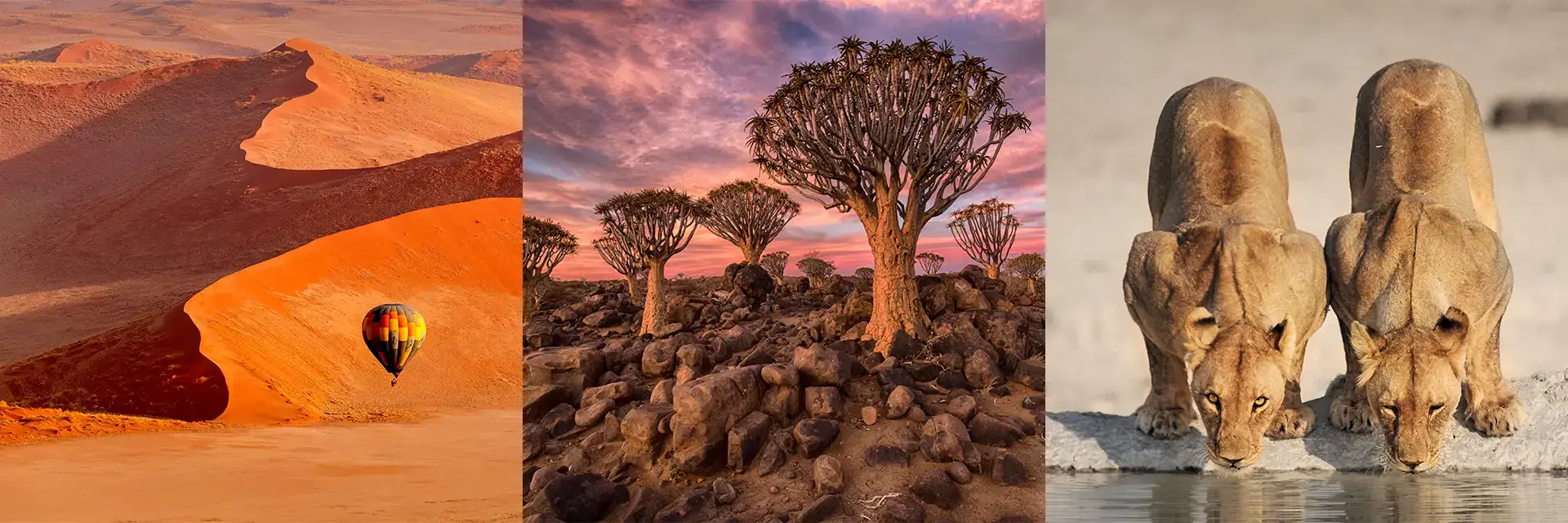
Namibia stands out as a truly remarkable destination, mesmerizing travelers with its towering sand dunes, wildlife uniquely adapted to arid conditions, and dramatic landscapes that stir the soul. From the sprawling dunes and rugged coastline to the verdant plains and imposing mountains, Namibia is a land of striking contrasts and breathtaking beauty. There are many exceptional lodges in Namibia. We've carefully selected the 10 best places to stay for an unforgettable experience. These hotels and lodges are what we consider the best places to stay in Namibia.

Enjoy Namibia!
Namibia's best hotels
Browse through our luxury handpicked, tried-and-tested recommendations.
Habitas Namibia
Khomas (Windhoek)
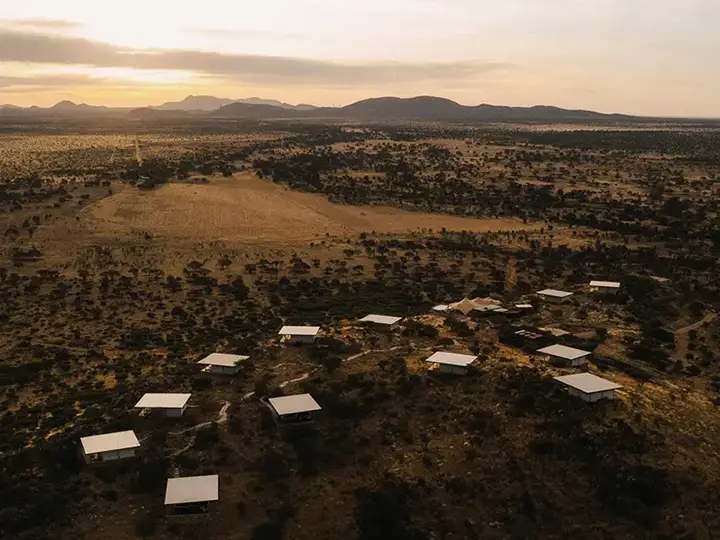
- Hilltop location with majestic vistas of the savanna, within a sprawling 50,000-hectare wildlife reserve
- 12 spacious tented rooms, each featuring a heated kingsize bed, bathroom with rain shower, and a spacious private deck
- Strong focus on wellbeing (yoga, meditation), healthy food and holistic cultural experiences like drumming or painting
Beside the daily safari game drives led by knowledgeable guides, Habitas provides a range of wellness activities such as sunrise yoga and meditation sessions. Guests can immerse themselves in multi-sensory experiences including music and dance events, culinary workshops and painting sessions. Conveniently located just 45 minutes from Windhoek airport, Habitas is the perfect gateway to Namibia.
ourhabitas.com
Little Kulala
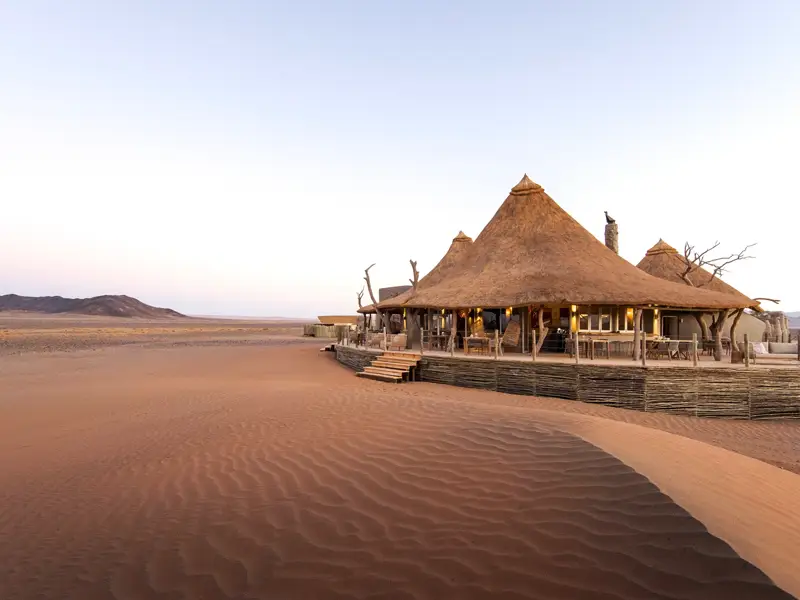
Nestled within the 27,000-hectare Kulala Wilderness Reserve, bordering Namib Naukluft National Park and with private access to the iconic red dunes of Sossusvlei, Little Kulala blends luxury with eco-sustainability amidst the captivating desert landscape.
- Refined and intimate spaces, designed with local cultural influences and natural materials
- 11 thatched "kulala" chalets, expansive verandahs with private plunge pool, dune vistas, indoor/outdoor showers and roll-out beds for relaxing and stargazing
- Desert exploration: 4x4 drives to Sossusvlei, Dead Vlei and Sesriem Canyon, quad biking, nature walks, and sundowner drives
The staff is warm and welcoming, and your guide will enrich your desert experience with in-depth knowledge of the local flora and fauna. The food is both delicious and abundant, complemented by an extensive wine cellar. This mix of sophistication and a laid-back ambiance makes Little Kulala the perfect gateway for discovering Sossusvlei.
wildernessdestinations.com
Onduli Ridge
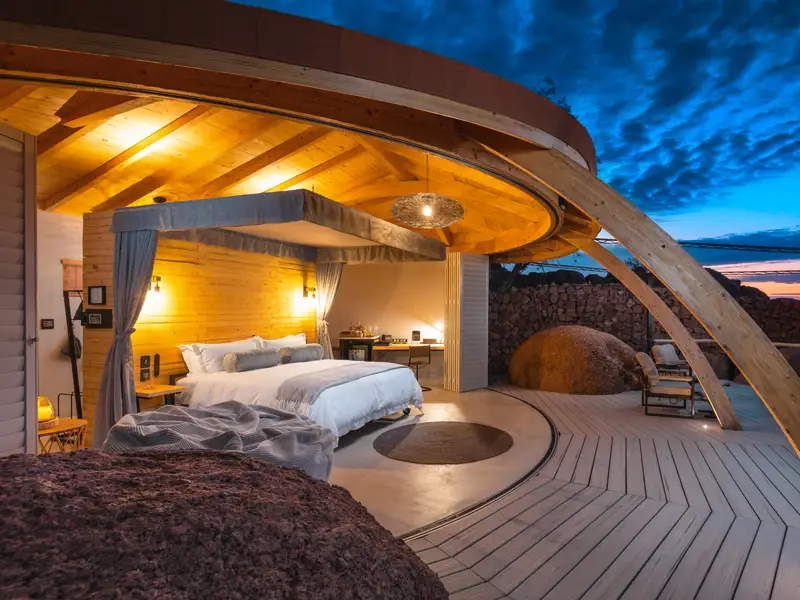
Onduli Ridge, inspired by the local giraffe inhabitant, sits gracefully at the junction of two south-facing granite landmarks linked by a ridge. From here, guests can bask in the breathtaking panorama of Namibia's tallest peak, the Brandberg, to the south, and the scattered majestic granite inselbergs to the north.
The camp's six suites are seamlessly tucked among the granite boulders that embrace the area. Guests have the option to fully open louvered shutters, melding the indoor ambiance with the raw beauty of nature, or to close them for utmost seclusion.
As desired, guests can move the bed to their private deck for a night beneath a mesmerizing starlit sky. It boasts spacious rooms, a well-stocked library, refreshing rain showers, and countless relaxation spots. Delectable meals, served after exciting adventures, complete the experience—promising an unparalleled stay that melds impeccable luxury with the pure essence of nature.
ultimatesafaris.na
Anderssons at Ongava
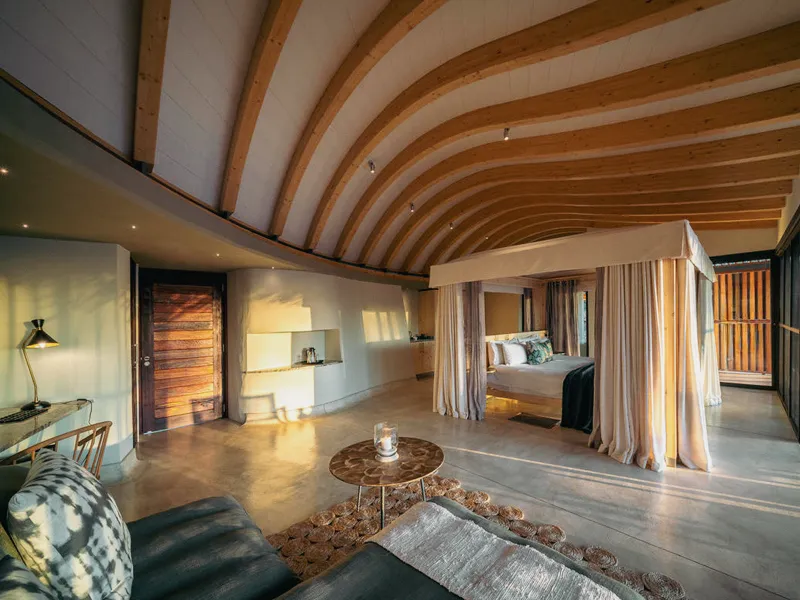
Located on the southern edge of Etosha National Park, Ongava is one of Namibia's premier private game reserves, renowned for its commitment to conservation and outstanding game-spotting opportunities. Anderssons is the latest addition among the reserve's esteemed lodges.
- 9 spacious, contemporary chalets, boasting private decks with expansive views of the surrounding wilderness
- Active waterhole with a sunken photographic hide accessed by tunnel for incredible views of the wildlife
- Game drives within the Ongava reserve, guided nature walks, rhino tracking, and excursions into Etosha National Park
The open-air bar and dining area wraps around a welcoming fireplace and presents uninterrupted views of the well-frequented waterhole. Picture yourself taking a dip in the infinity-edge pool, all while witnessing lions, zebras, or giraffes congregating for a drink. The onsite Ongava Research Centre guides you through the efforts undertaken to protect the region's wildlife. The lodge is fenced and therefore family-friendly.
Fish River Lodge
Fish River Canyon
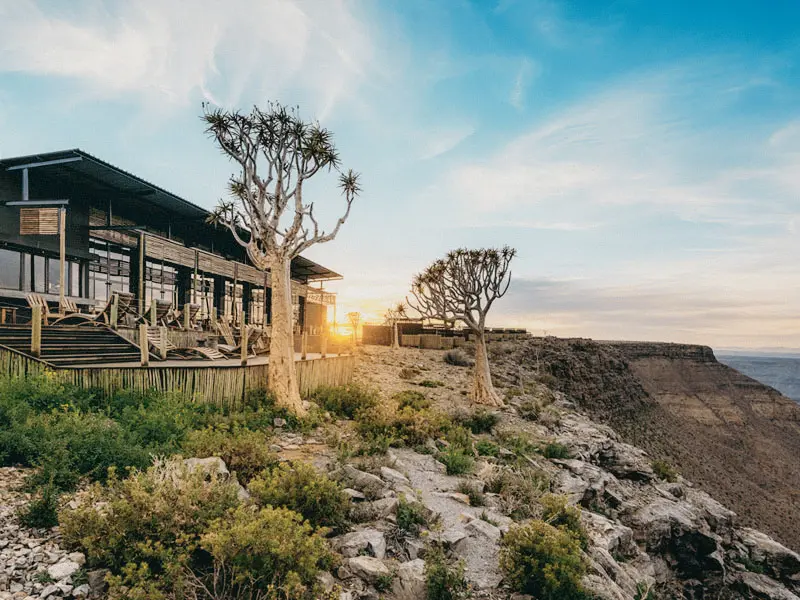
Perched majestically on the western edge of the world's second-largest canyon, Fish River Lodge offers breathtaking views of the dramatic scenery and harmoniously blends with its environment of Canyon National Park.
- The only lodge situated directly on the canyon's rim, with unparalleled vistas from sunrise to sunset
- 20 spacious chalets featuring floor-to-ceiling glass doors, private verandas, and open-air showers
- Guided hikes into the depths of the canyon, walks along the rim, and scenic 4x4 sundowner drives
Utilizing natural materials and earthy tones, the lodge creates a rustic yet elegant ambiance in the rugged wilderness. There's an infinity pool for hot summer days and a snug bar & restaurant area with fireplace for cooler evenings.
For the adventurous and physically fit, the 3-day «Rim to River hike» is an unforgettable journey, complete with glamping nights at Camp Eternity and Camp Edge.
fishriverlodge-namibia.com
Damaraland Camp
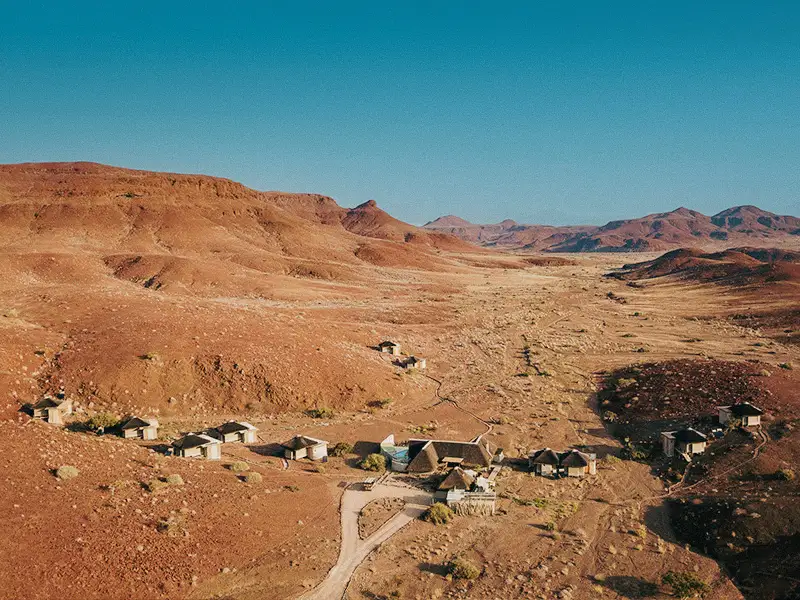
Amidst the dramatic landscapes of Namibia's Damaraland, one finds the serene embrace of Damaraland Camp. This eco-conscious retreat, sculpted into the rugged terrain, presents an eloquent testimony to nature's resilience and beauty. With sustainable practices at its core, the lodge emerges as a beacon of harmonious coexistence with the land.
The accommodations, artfully integrated with the environment, offer panoramic views of stark mountains, ancient petroglyphs, and the dance of desert-adapted wildlife. Here, guests are invited to trace the footsteps of desert elephants, explore the mystique of ancient rock art, or simply indulge in the ethereal beauty of starlit nights. Every moment is a celebration of nature's undiluted majesty.
Wilderness manages two more renowned camps in the Damaraland region, the Desert Rhino Camp and the Doro Nawas Lodge.
Onguma Tented Camp
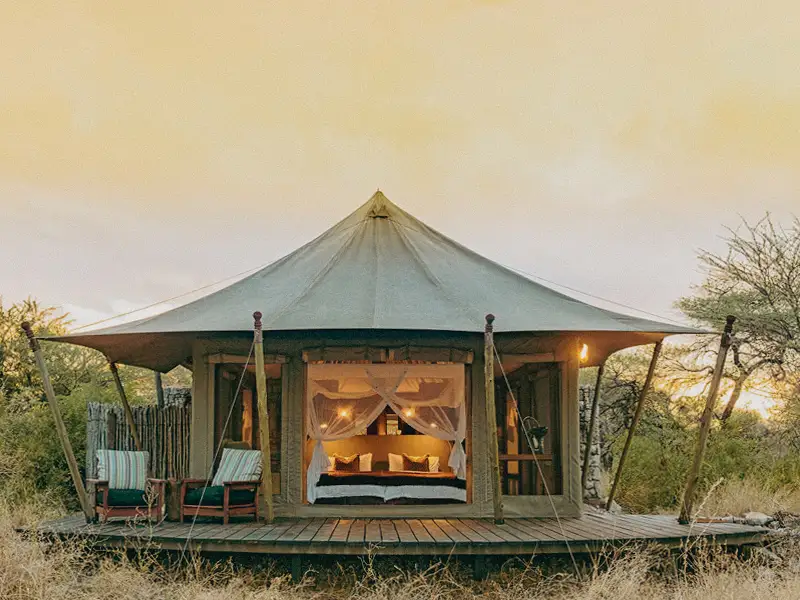
On the eastern boundary of Etosha National Park, enveloped by African bushveld, lies the exquisite Onguma Tented Camp. This haven, sculpted with contemporary design amidst age-old nature, exudes an air of intimate wilderness. Here, luxury effortlessly weaves with the rugged beauty, offering a poetic retreat to its guests.
Each tent, draped in earthy tones and sophisticated comforts, boasts a unique perspective on the camp's private waterhole. It's not uncommon for visitors to be treated to the graceful ballet of wildlife—giraffes sipping, lions lazing, and zebras parading—as they lounge on their decks. Beyond the tents, Onguma’s safaris unlock the secrets of Etosha, bringing the African narrative to life in vivid detail.
In this serene setting, an air of sophisticated dining enhances the experience, as the day's rhythm unfolds around a watering hole some 60 meters distant. The enveloping natural beauty invites guests to spend leisurely afternoons lounging on comfortable sofas, absorbed in the tranquil observation of wildlife.
Serra Cafema
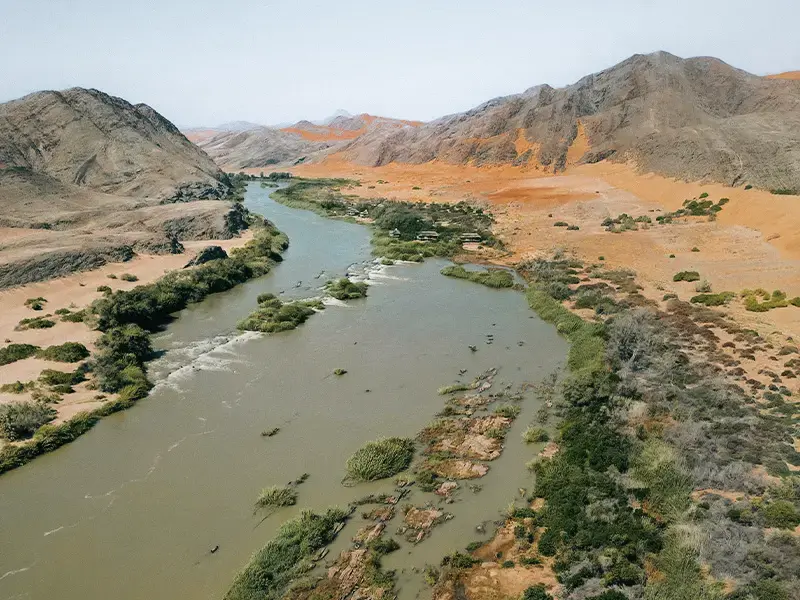
Nestled on the shores of the Kunene River and gazing across the Angolan border, Serra Cafema is situated in the far north of Namibia, amidst the desolate yet stunning landscapes of Kaokoveld. It stands as one of Southern Africa's most secluded camps, accessible only by light aircraft and a 4×4 transfer.
The intimate setup boasts eight exquisite chalets constructed on stils, featuring spacious, elegant interiors adorned with wallpapers depicting the Himba people. The large private decks offer stunning views of the water and the surrounding volcanic rocks and soaring dunes.
Boat cruises on the Kunene River (seasonal) provide opportunities to observe waterbirds, crocodiles, and local farmers along the water. Engaging with a Himba community, Namibia's last semi-nomads, and learning more about their culture, is a truly memorable experiences. Excursions also include adventurous quad biking over the undulating dunes, nature walks, and drives into the harsh Hartmann Valley and Marienfluss Mountains. Serra Cafema is a place unlike any other in Namibia.
Namib-Naukluft-Park
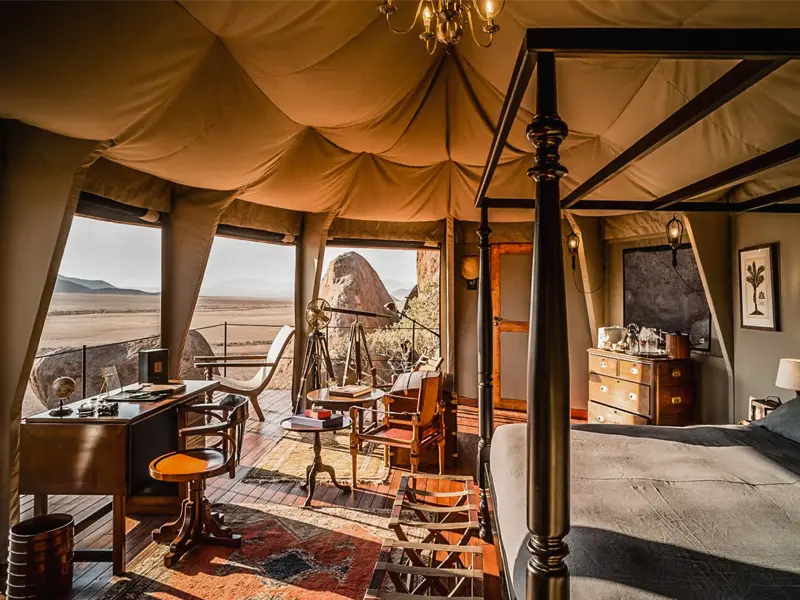
Perched atop boulders in the remote southeast of Namibia, Zannier Hotels Sonop stands as a testament to the grandeur of classic safari. This upscale tented retreat boasts ten expansive tents, reminiscent of the lavish lifestyles of illustrious explorers of yesteryears.
Every tent, adorned with vintage furnishings, vibrant rugs, and intricate woodwork, transports guests to an era of opulence and adventure. As they offer sweeping desert vistas, each tent also houses a telescope, inviting guests to indulge in moments of stargazing, revealing the vastness of the night sky against the serene desert backdrop.
Sonop offers an array of activities: scenic drives that unveil the stunning landscape around the lodge, e-bike excursions, horse riding across the sands, and as dusk settles, open-air cinema nights by the pool with classics like "The Lion King" lighting up the screen.
zannierhotels.com
Shipwreck Lodge
Skeleton Coast
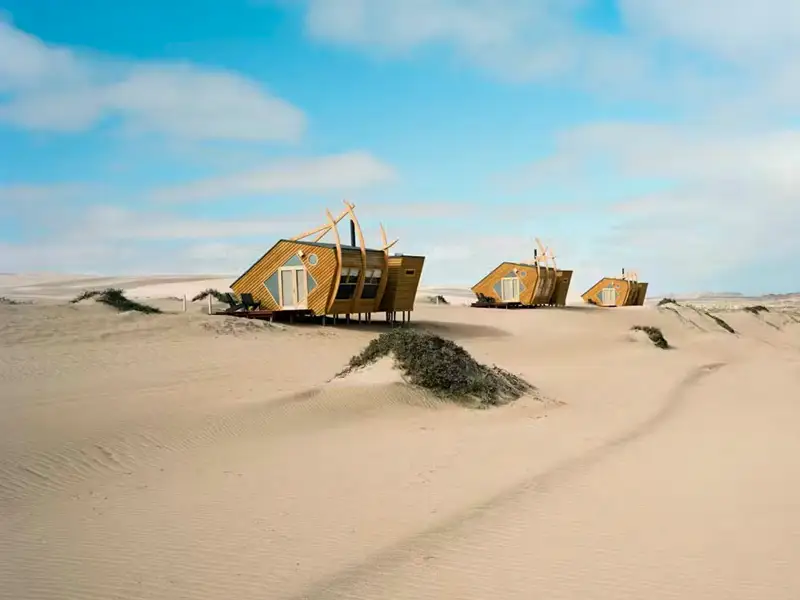
Shipwreck Lodge, inspired by the iconic shipwrecks of Namibia's Skeleton Coast, stands as a solitary testament to splendor. Set against the sprawling dunes and the chilling embrace of the Atlantic, the Skeleton Coast offers an unmatched, raw glimpse of Africa.
Matching the coast's dramatic vistas, the ten chalets have been designed to resemble the shipwrecks that are scattered along the coast. Inside, the snug bedroom boasts wooden ceilings and a small heating stove to keep you warm during chilly evenings. The heart of the lodge boasts the cozy lounge and restaurant, where large glass fronts provide an unobstructed view of the sand dunes and the Atlantic ocean.
Venture on river bed drives to spot desert fauna, uncover unique desert plants, watch sunsets over the dunes, hunt for ancient shipwreck remnants on the beach, and stand in awe before the Clay Castles. Exciting quad biking, sand boarding and lovely beach lunches are on offer too. There is no road to the lodge, self drive guest will park the car at Möve Bay and will be picked up from there by the lodge.
shipwrecklodge.com.na
We hope our curated collection of luxury accommodations in Namibia has inspired your travel plans. If you wish to do a booking, make use of the direct links provided for each hotel.
More about Namibia
Get ready for the breathtaking landscapes of Namibia, where endless sand dunes, rich wildlife, and vibrant cultures invite you on an unforgettable journey.
Continue reading for travel advice and insights on Namibia.
Best time to go
Namibia is indeed a true year-round travel destination , characterized by its typical semi-desert climate and two distinct seasons . Choosing the best month to visit depends on your priorities, and each season offers a unique experience.
The dry winter months from May to October are usually the best time for wildlife viewing, especially in Etosha, as animals are drawn to waterholes so you can spot them easier. The weather is sunny during the day (20°C to 30°C) and can get below freezing at night, especially in the desert. Bring warm clothes and additional layers for morning and evening activities. June to August are the coldest, but it's perfect for stargazing due to the clear skies. These months are also peak tourist season, so expect higher prices and book your flights and accommodation as far in advance as possible.
The rainy summer from November to March is the best time to see migratory birds, new-born animals, desert flowers and to enjoy the greener vegetation. The weather is hot and humid (up to 45°C) with occasional thunderstorms and potential floodings, but you can take advantage of fewer visitors and off-season rates.
Namibia overall
J F M A M J J A S O N D
Perfect Good Average Avoid
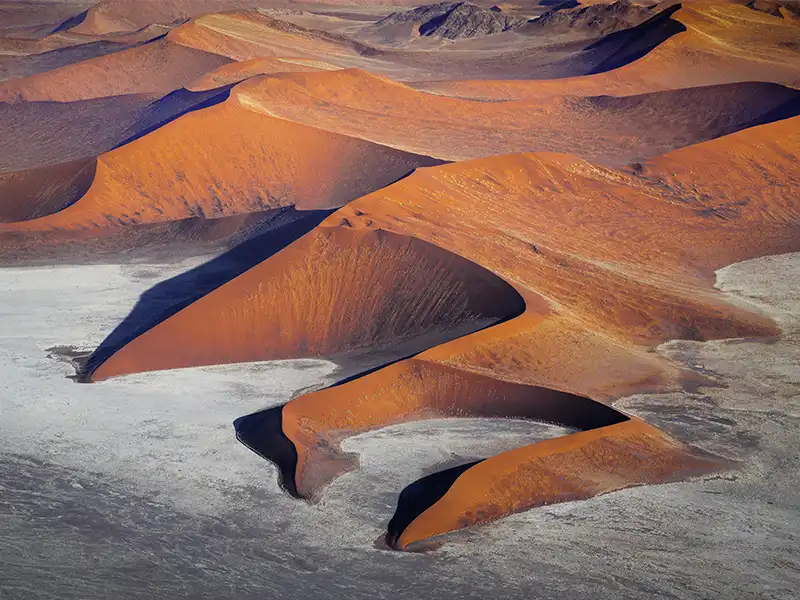
Namibia Travel Q&A
Setting off on an adventure to a new country is an exciting experience that also comes with a set of questions. In the following section, we've addressed the most common travel topics related to Namibia, from getting there and transportation to understanding local customs and ensuring health and safety during your trip.
How do I get to Namibia?
- Discover Airlines (Lufthansa) from Frankfurt (FRA)
- Qatar Airways from Doha (DOH)
- Ethiopian Airlines from Addis Abbeba (ADD)
Hosea Kutako Airport is relatively small, ensuring a smooth and straightforward arrival experience. Located about 45 kilometers from Windhoek, visitors have the choice of using a shuttle service or renting a car directly at the airport. Many accommodations offer pre-arranged pick-up services from the airport.
When entering Namibia by land from South Africa or Botswana, ensure you have all necessary paperwork ready, including a letter of authority from the rental car company, visas, and relevant identification or vehicle documents. We advice to verify these requirements and check the operating hours of border posts in advance. Usually these border-crossings are straightforward, but be prepared for potential delays at the border due to processing times or queues.
Opting to drive from Cape Town to Namibia is a scenic and adventurous route, though be mindful that car rental options may be limited and one-way fees can be significant.
What are the visa requirements for Namibia?
How long should I plan to stay in Namibia?
The duration of your Namibia trip largely depends on your available time, budget and the places you wish to explore. Our recommended timeframe to cover some of the most significant parts of Namibia (Etosha, Damaraland, and Sossusvlei), would be approximately 2-3 weeks. This allows for a comprehensive experience of the country's varied landscapes and wildlife.
Is Namibia a good choice for someone's first visit to Africa?
Namibia is a fantastic choice for a first-time visit to Africa, combining safety, accessibility, and a unique array of attractions. While it's often overlooked compared to neighbors like South Africa ( Kruger ) and Botswana, Namibia offers an exceptional experience. Namibia boasts diverse landscapes, from the spectacular dunes of Sossusvlei and the eerie Skeleton Coast to the incredible wildlife in Etosha National Park. Sure, you'll need a bit of an adventurous spirit to navigate the distances, but the journey is part of the fun. Namibia is not just about stunning views; it's welcoming and safe, making it a perfect intro to this incredible continent. English is widely spoken, easing communication for many travelers, and the country is known for its good infrastructure, which supports self-drive tours.
Is Namibia a safe country to travel?
Do I need a yellow fever vaccination for Namibia?
Is Namibia a malaria-risk country?
The northern parts of Namibia, particularly the areas near the Angola border, are considered malaria risk zones. This risk is higher during and just after the rainy season, which runs from November to April. Apart from medication, we recommended to use insect repellent, wear long-sleeved clothing during the evening and nighttime, and sleep under a treated mosquito net. Before traveling, consult with a travel clinic or your healthcare provider about the need for malaria prophylaxis. Malaria medications often have side effects, so it's a good idea to discuss these with your doctor. Even if you take preventive medication, be vigilant for symptoms after returning from your trip, as Malaria can manifest many weeks after exposure.
How much should I tip in Namibia?
Tipping is customary in Namibia for good service but is generally left to the discretion of the individual. Most lodges have a communal tipping box for all the staff. Tips are then distributed evenly amongst staff members.
A recommended amount is N$100 – N$200 per guest, per day, which can be placed in this box. For those who guide your game drives or walks, N$200 – N$500 per guest, per day is a good amount. If there's a tracker helping spot wildlife, a similar amount is appropriate. Always tip in Namibian dollars (N$), the equivalent in South African Rand, or US-Dollars.
What are the spoken languages in Namibia?
English is the official language in Namibia, used in schools, government, and the media, making it easy for tourists to communicate. However, the country is rich in linguistic diversity, with Oshiwambo languages being the most spoken among the locals. You might also come across speakers of Afrikaans , and indigenous languages such as Herero and Nama/Damara . Learning a few basic phrases in Oshiwambo can be a thoughtful gesture and show appreciation for the local culture.
How to stay connected: Phone and internet network
There are two mobile network providers , MTC and Telecom Namibia . MTC is known for its better coverage, which is limited to inhabited areas of Namibia. You can get a SIM-Card at Windhoek Airport and some local stores; the data plans are quite cheap but the procedure to setup your account can take a bit of time. Most lodges typically offer WiFi, however, the quality and speed of the connection isn't usually great.
Which animals will I see in Namibia?
Namibia is renowned for its diverse wildlife across its vast landscapes. You can expect to find desert-adapted elephants and lions, both black and white rhinos, and other mammals such as giraffes, leopards, cheetahs, zebras, and buffalos. The herbivore population is rich with springbok, oryx, kudu, wildebeest, impalas, and hartebeest roaming the plains.
What should I pack for Namibia?
- Comfortable walking shoes or hiking boots are essential while sandals or flip-flops are good to use at the lodge (e.g. pool deck).
- Bring a hat, UV-protective sunglasses, and and high-SPF sunscreen to protect from the intense sun.
- A small backpack or daypack can be useful for carrying essentials during day trips. If you have a chartered flight in smaller aircraft within Namibia, make sure you check the restrictions, usually only soft bags are allowed to brig onboard.
- Health Supplies: Pack a basic first-aid kit, prescription medications, insect repellent, and possibly malaria prophylaxis if you're visiting high-risk areas.
- Adapter and power bank: Namibia uses power type D and M plugs, so don't forget a travel adapter and a power bank for charging your devices.
All information provided above is accurate to the best of our knowledge at the time of publication. For the latest updates and details, please consult relevant authorities or official sources.
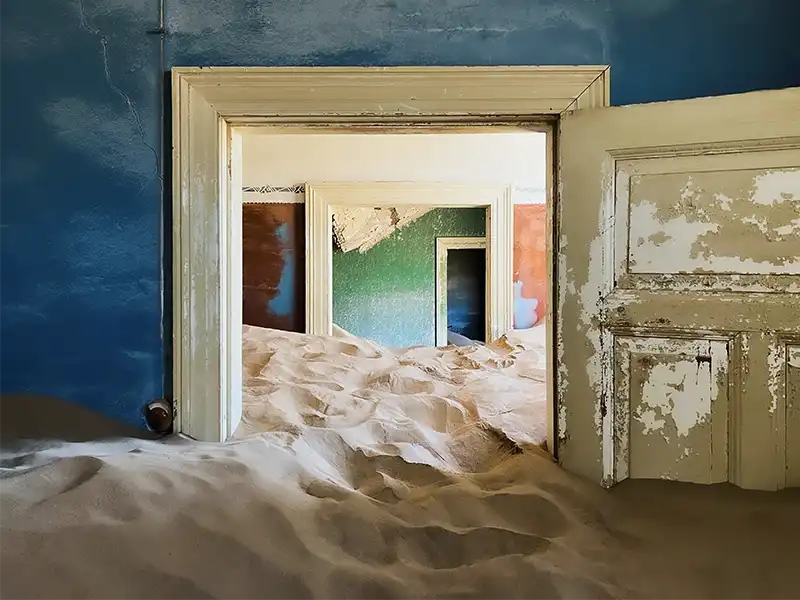
Book Tips for Namibia
Why not take a book on your travels. Here are three great reads to inspire and accompany you on your journey to Namibia.
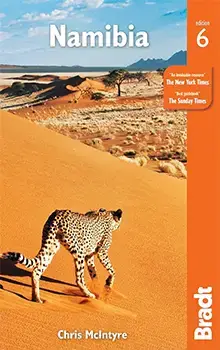
Namibia: Bradt Travel Guide
Chris McIntyre
Essential for travelers, this guide offers in-depth knowledge on Namibia's wildlife, natural beauty, and cultural heritage, serving as an invaluable companion for exploring this breathtaking country.
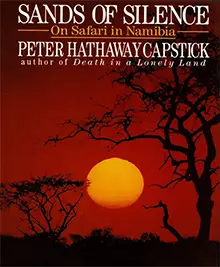
Sands of Silence
Peter Hathaway Capstick
Through Capstick's thrilling accounts of adventures in Namibia's most remote regions, readers gain a unique glimpse into the country's untamed landscapes and the sheer thrill of African safari.
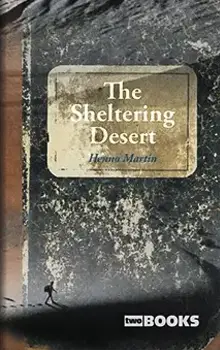
The Sheltering Desert
Henno Martin
A true story of survival, this book recounts the extraordinary experiences of two German geologists who sought refuge in the Namib Desert during World War II, offering insights into human resilience and the stark beauty of the Namibian wilderness.
Discover more
Here are more destinations where we've curated the best places to stay.
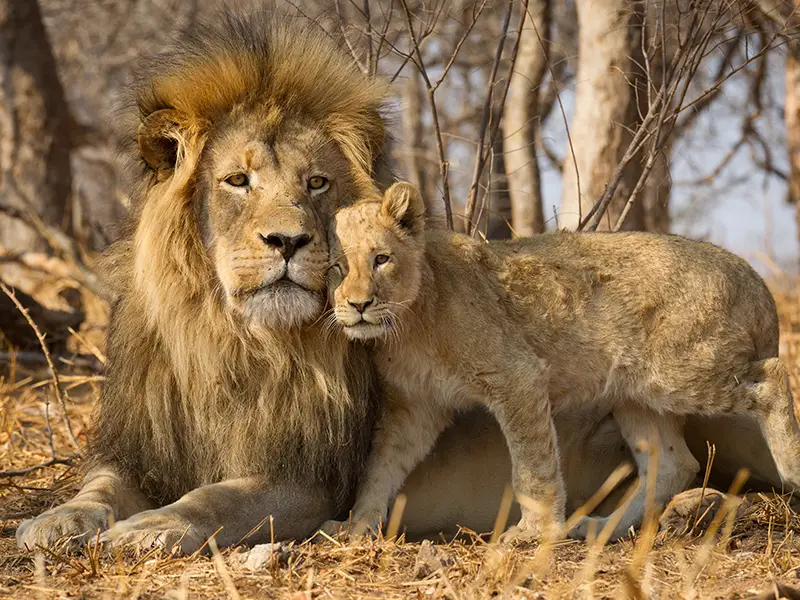
Kruger National Park
Breathtaking bushveld retreats and thrilling safari camps
Kruger Hotel Guide
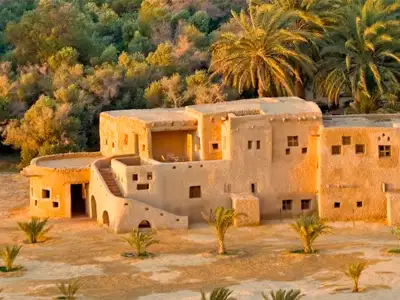
Historic Nile-side palaces and opulent Red Sea retreats
Egypt Hotel Guide
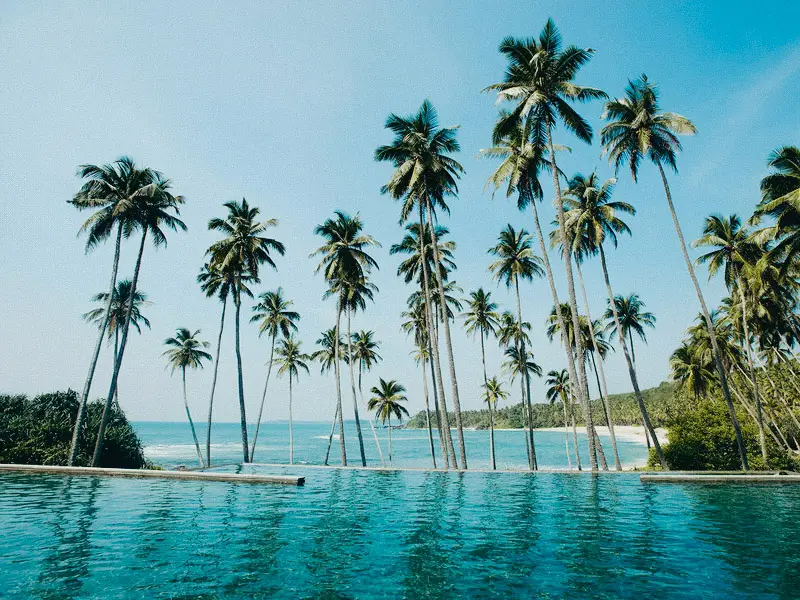
Boutique beachfront havens and serene mountain hideaways
Sri Lanka Hotel Guide
Share on FB Share on X Pin it
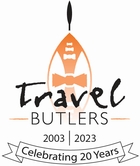
- Client Login
Call Us: 01483 266725
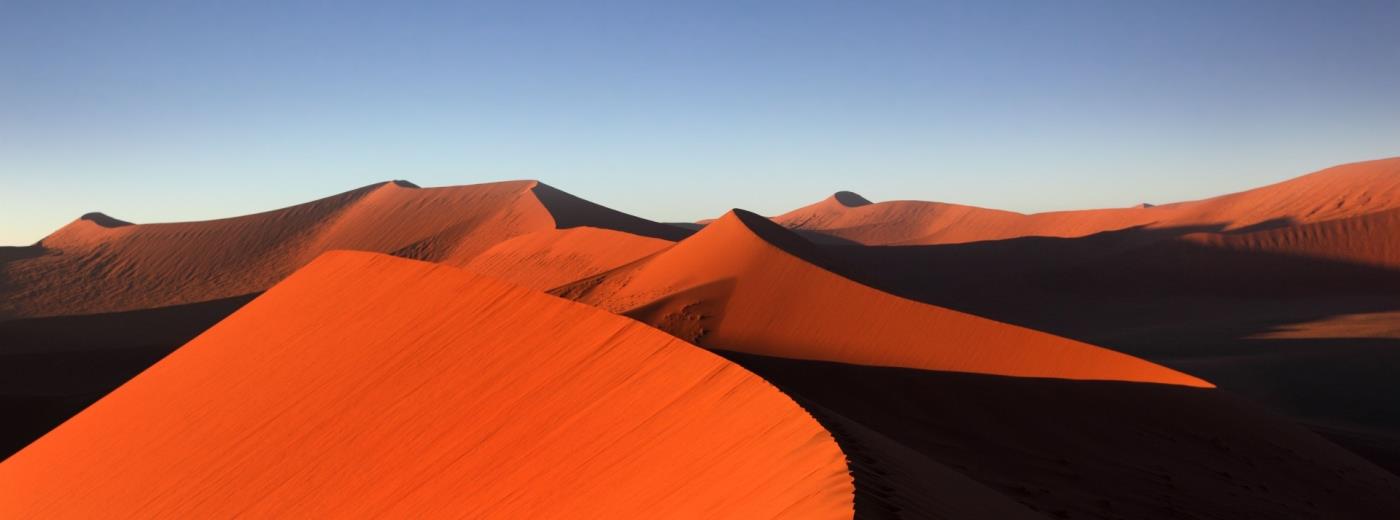
Recommended Reading For Visitors To Namibia
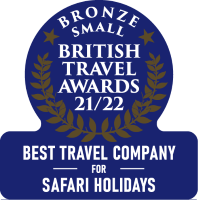
Travel Guides, History Books, Maps And Wildlife Guides
Recommended guides books, travel guides, maps, history books and wildlife guides for visitors to Namibia.
- Namibia Holidays
- Fish River Canyon
- The Southern Namib
- The Skeleton Coast
- Erongo Mountains
- The Africat Foundation
- Best Time To Visit Namibia
- Facts for the Visitor
- Driving In Namibia

IMAGES
VIDEO
COMMENTS
Paperback. 18 offers from $9.43. #6. Namibia Travel Guide 2024: Unveiling the Soul of Namibia through its Culture, Cuisine, and Wildlife. Ruby Gilson. Paperback. 1 offer from $12.99. #7. The Rough Guide to Namibia with Victoria Falls: Travel Guide with Free eBook (Rough Guide Main Series)
You can hit up the Namibian desert for sand dune climbing at sunrise. There are beaches and coastlines full of shipwrecks to explore. The darkest skies in the world are in Namibia, so the Milky Way is always shining brightly above your head at night. Oh, and there's a ghost town in the middle of the desert. Badass.
Epic Gondwana Adventure: Deserts, Ocean and Wilderness. Experience the best Namibia has to offer with a trip across the country, from the Kalahari to the Namib, the coast to Damaraland, ending off with an unforgettable time in the wildlife-mecca that is Etosha National Park. view trip ⤍. 8 days / from 16730 USD.
Your ultimate Namibia travel guide, with tips, things to do, and best things to see in Namibia. Great for first-time and returning travelers. Lions stalking Blue Wildebeest under the cover of sun-burnt savannah grasses. Desert elephants - smaller than most, and with unusually wide feet - adapted to the blowing sands of the Kalahari.
Inside this Namibia travel book, you'll find: A wide range of sights - Rough Guides experts have hand-picked places for travellers with different needs and desires: ... The Rough Guide to the 100 Best Places on Earth 2022 $ 34.99 Paperback Insight Guides Namibia $ 23.99 Paperback The Rough Guide to Kenya $ 28.99
Sesriem Canyon. Namibia. The 3km-long, 30m-deep Sesriem Canyon, 4km south of the Sesriem headquarters, was carved by the Tsauchab River through the 15-million-year-old deposits of….
The Rough Guide to Namibia Travel Guide Book . Rough Guides is known for its "tell it like it is" attitude and has almost 40 years' experience publishing accurate, up-to-date guidebooks. Rough Guides publishes guidebooks on over 120 destinations, and the pages are packed with practical advice, stunning images, and independent, trusted reviews.
The Rough Guide to Namibia Travel Guide Book . Rough Guides is known for its 'tell it like it is' attitude and has almost 40 years' experience publishing accurate, up-to-date guidebooks. Rough Guides publishes guidebooks on over 120 destinations and the pages are packed with practical advice, stunning images and independent, trusted reviews.
Discover the best books in Amazon Best Sellers. Find the top 100 most popular Amazon books. ... NAMIBIA TRAVEL GUIDE FOR BEGINNERS: The Updated Concise Guide for Planning a Trip to Namibia Including Top Destinations,Rich Cultural Experience,Outdoor Activities and Getting Around.
Trek the iconic Fish River Canyon. By Melanie van Zyl. Namibia's Fish River Canyon is a staggering geological masterpiece in the /Ai-/Ais Richtersveld Transfrontier Park, shared by Namibia and South Africa. The main viewpoint and information centre are worth a visit for an epic sunset if it's on your route, but to truly escape the tourists ...
Namibia Travel Guide. Overview. Overview ... Why book with Insight Guides. Plan your tailor made dream trip with a local expert Book securely with money-back guarantee Travel stress-free with local assistance and 24/7 support Create your personal trip now ... Best trips in Namibia. Ultimate Self Drive in Namibia. 10 days from 2600 USD.
Features inspirational colour photography, including the stunning Cape Cross and the spectacular Quiver Tree Forest. BOOK DETAILS. ISBN: 9781789192001. Series: Insight Guides Main Series. Publication Date: 4/29/2018. Pages: 264. Pictorial travel guide to Namibia provides all you need for every step of your journey.
TRAVEL GUIDE TO NAMIBIA: INSPIRATION, HIGHLIGHTS & TRAVEL TIPS. There are many reasons why Namibia should be on your bucket list: Enjoying incredible views at the world's 3rd largest canyon, the Fish River Canyon. Visiting Kolfmanskop, a ghost town in the desert. Spotting wildlife in Etosha National Park.
The 3 best namibia travel guide books for beginners, such as Namibia vacation guide 2024 and NAMIBIA TRAVEL GUIDE FOR NOVICES.
Insight Guides is a pioneer of full-colour guide books, with almost 50 years' experience of publishing high-quality, visual travel guides with user-friendly, modern design. We produce around 400 full-colour print guide books and maps, as well as phrase books, picture-packed eBooks and apps to meet different travellers' needs.
Sometimes they travel in groups and sometimes as lone rangers, but they always travel by motorbike, sedan or 4WD, therefore this guide is specifically aimed at self-drive travellers. If you are a self-drive tourist, there are five things that you need to know when you are on the road: 1. Where to sleep. 2. Where to get fuel. 3. What to see and do.
WELCOME TO NAMIBIA Climb the highest sand dunes in the world. Descend to the floor of the deepest canyon in Africa. ... the best time to see big game. It is then, as the small bush pools . ... Visitors can travel through the country by means of scheduled tours in luxury coaches or microbuses, by train, fly-in safaris, self-drive tours, off-the ...
Discover the 10 best accommodations in Namibia, hand-picked, reviewed and recommended. ... Book Tips for Namibia. ... Namibia: Bradt Travel Guide. Chris McIntyre. Essential for travelers, this guide offers in-depth knowledge on Namibia's wildlife, natural beauty, and cultural heritage, serving as an invaluable companion for exploring this ...
The Discover Namibia 12-night group tour with Exodus (0845 527 9477; exodus.co.uk), travelling in a safari truck and staying in lodges or on campsites, costs from £2,999 with flights and most ...
Recommended guides books, travel guides, maps, history books and wildlife guides for visitors to Namibia. OUR EXPERIENCE. your adventure. About Us; Reviews; Contact Us; ... Best Time To Visit Namibia; Facts for the Visitor; Driving In Namibia . Start planning your tailor-made holiday today... Call one of our friendly specialists on 01483 266725;
The Warmth Of Spiti's Many Homestays. Ashish Kothari. 03 May 2024. 5 min read. Embark on captivating global adventures and uncover extraordinary tales with Outlook Traveller-your ultimate destination for India's finest travel magazine.
May 08, 2024. The Bucket List Family's matriarch Jessica Gee is no stranger to travel. In 2015, she and husband, Garrett, sold their belongings to travel around the world for five months with their (then) two kids Dorothy and Manilla. Eight-plus years, more than 90 countries and a third child (Calihan) later, Jess and Garrett have mastered ...